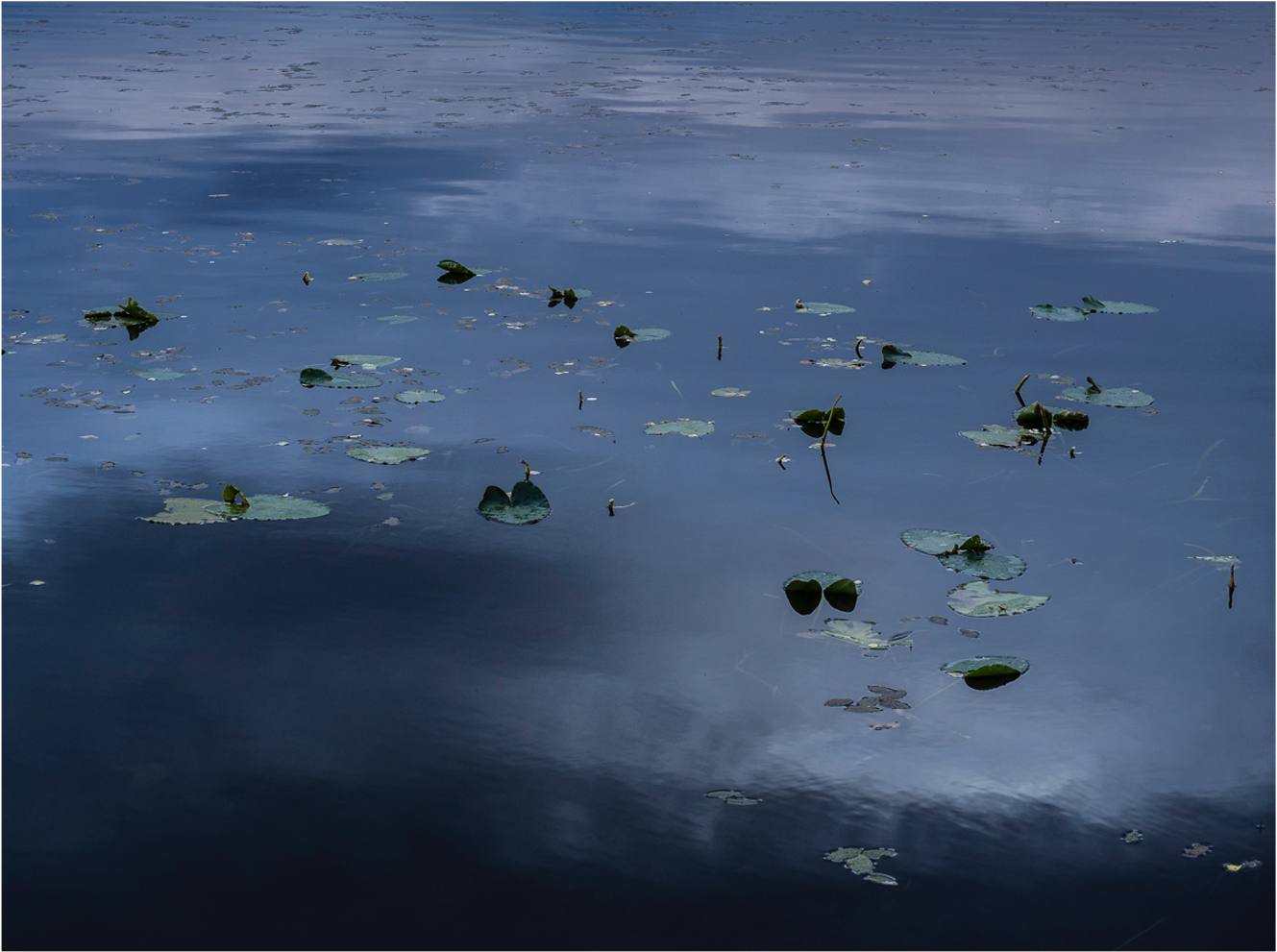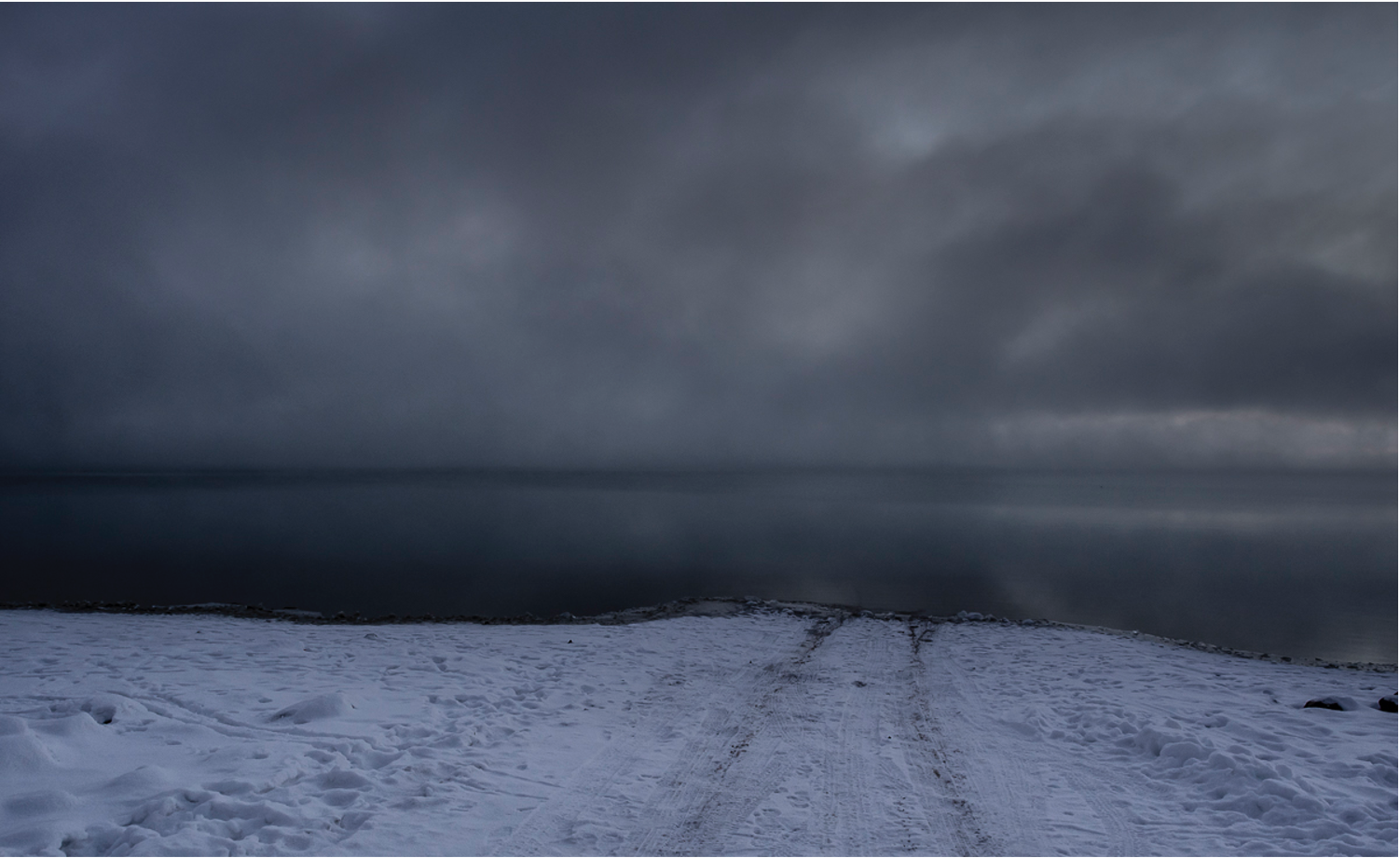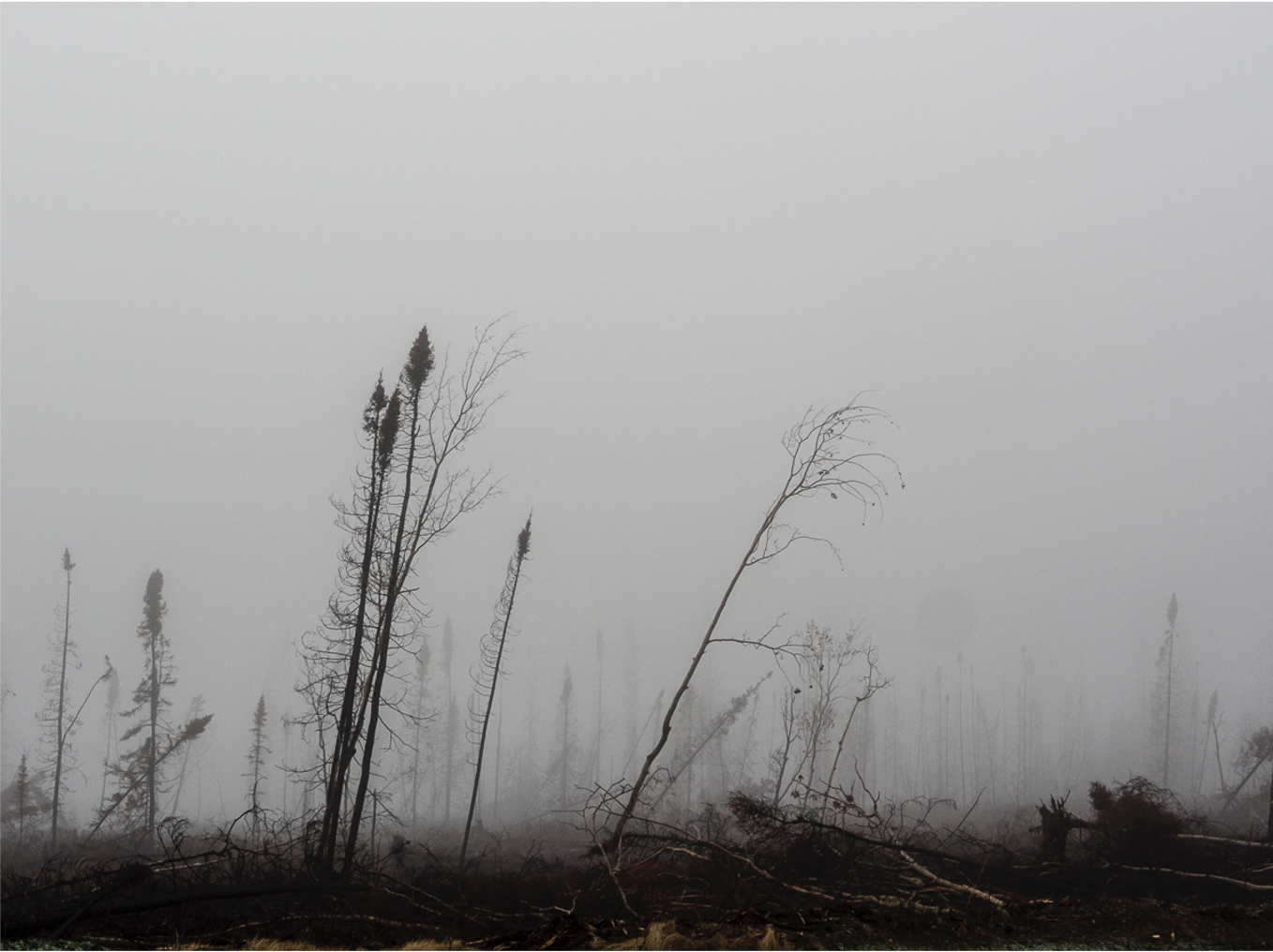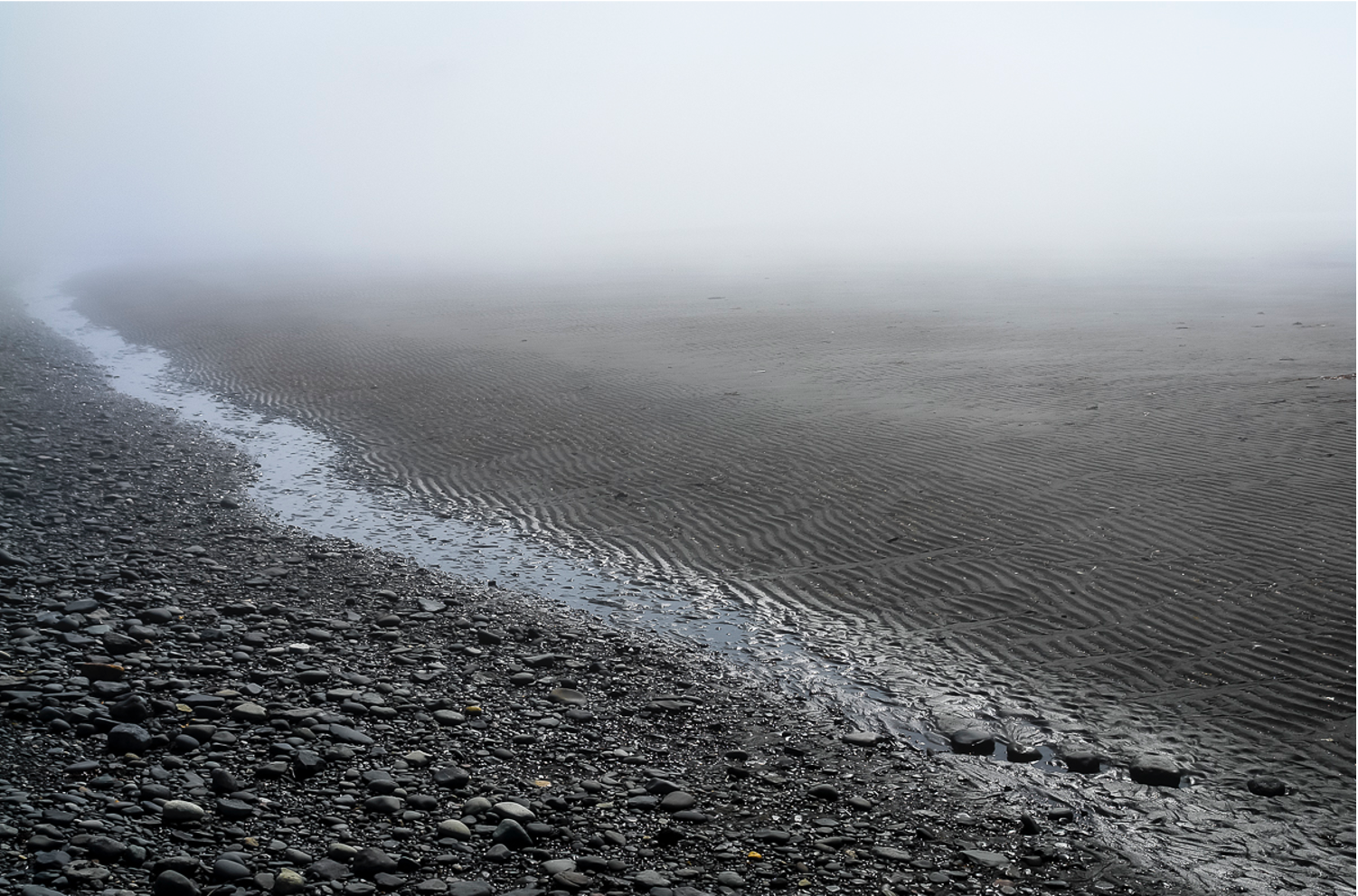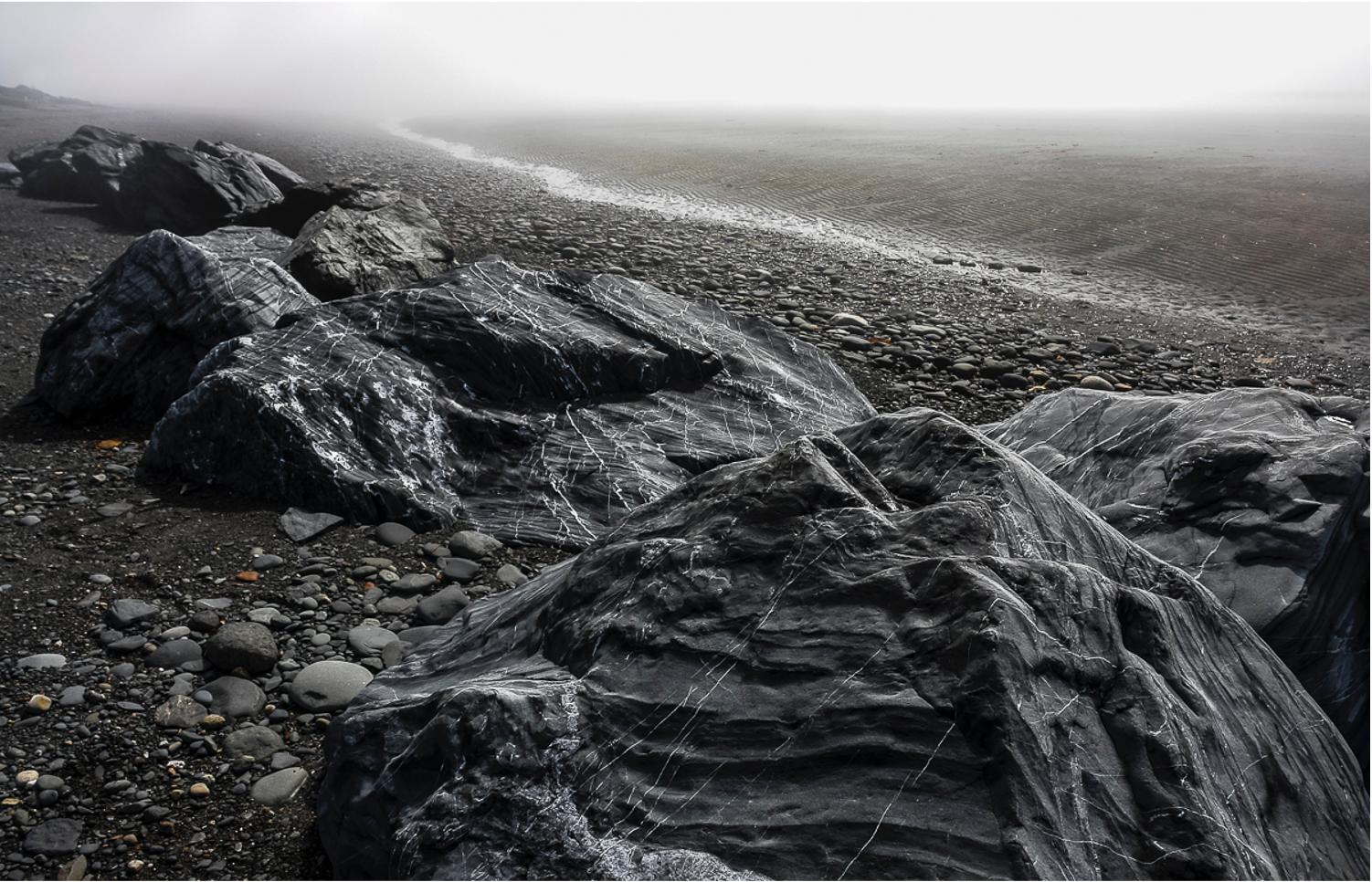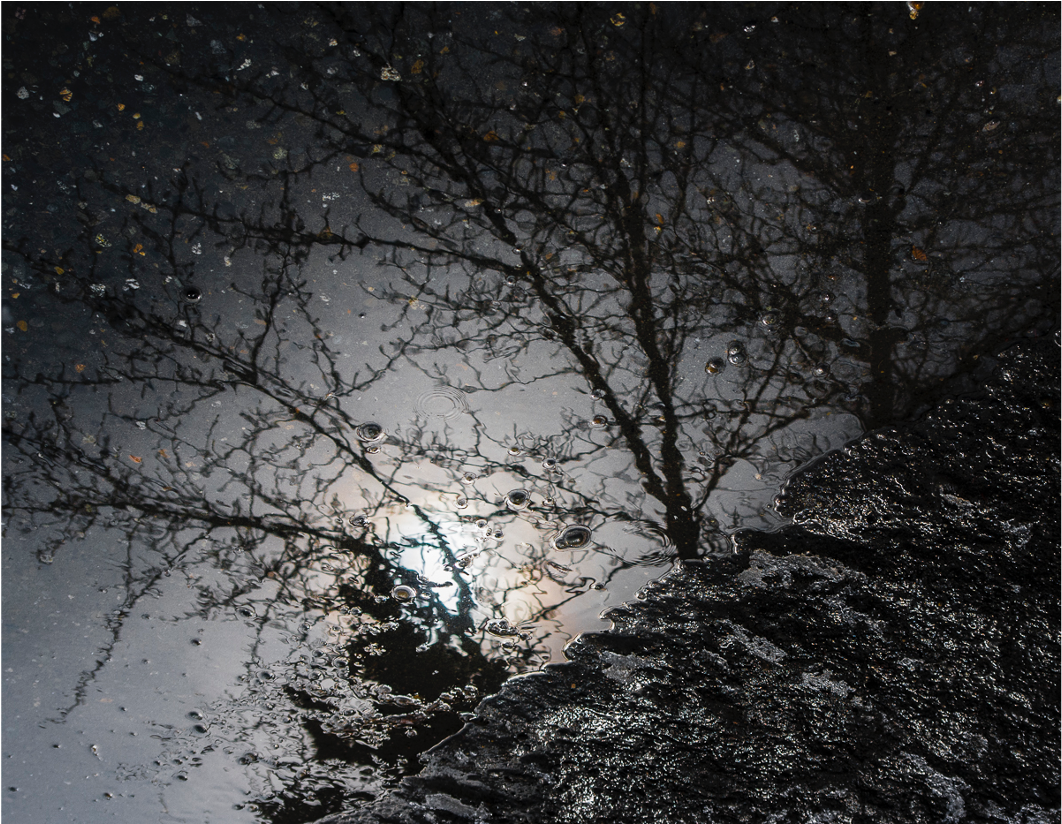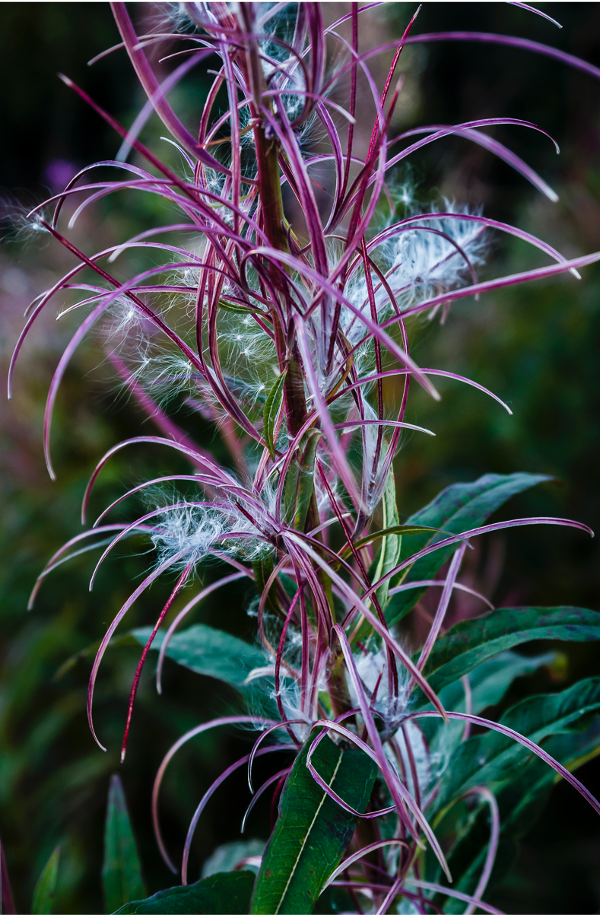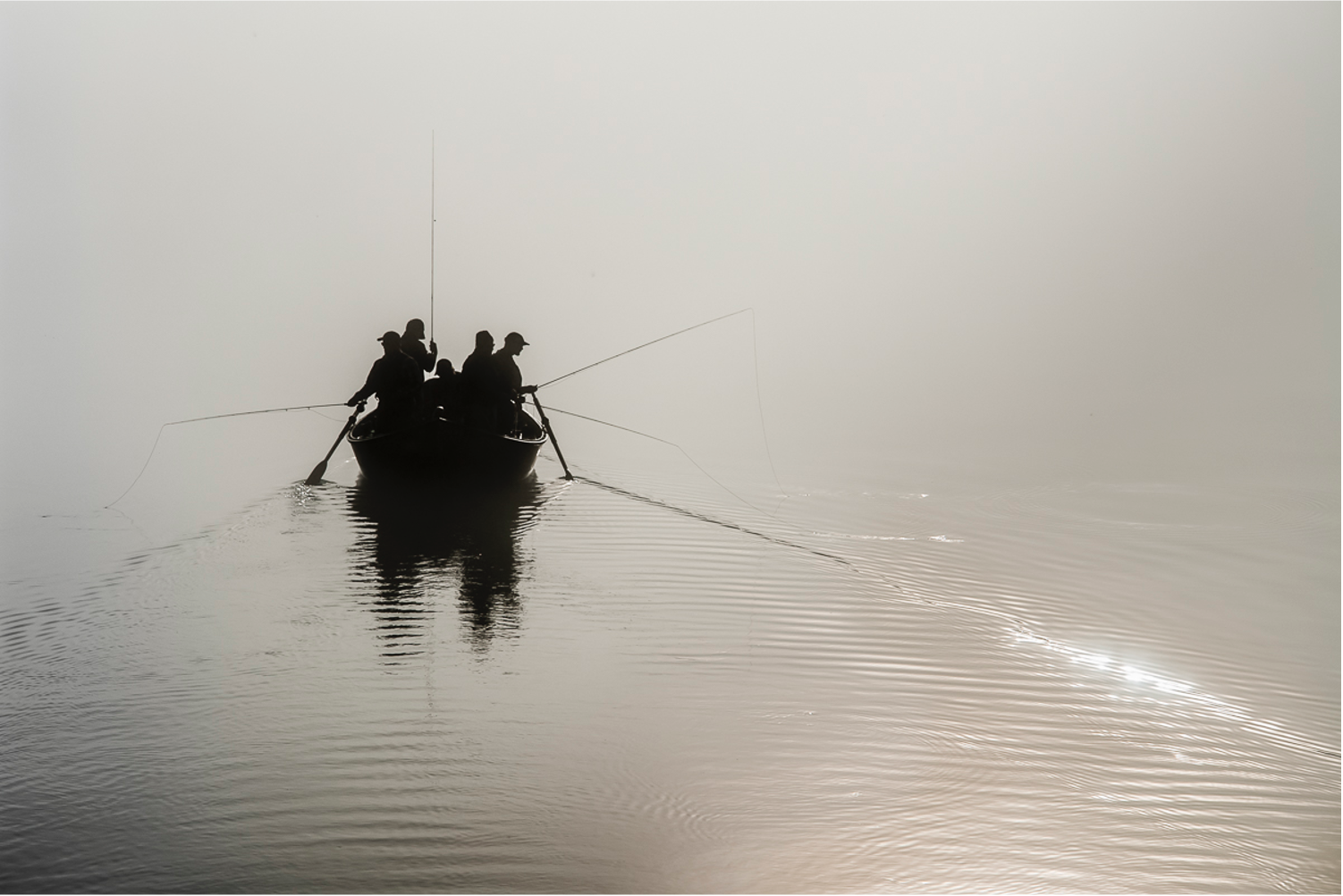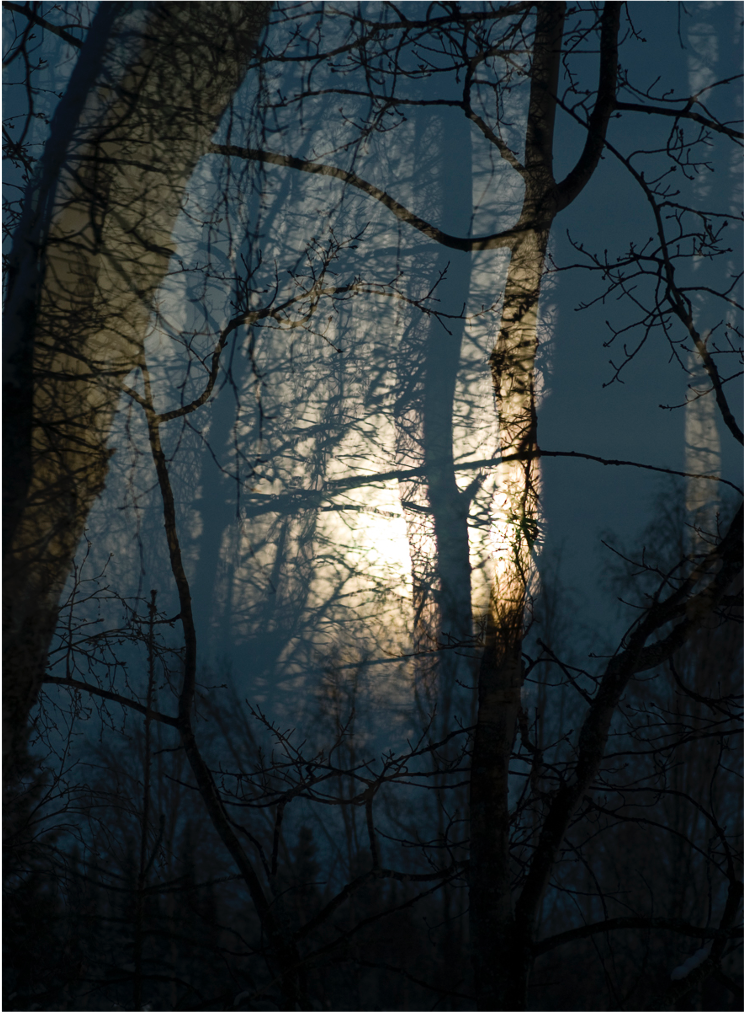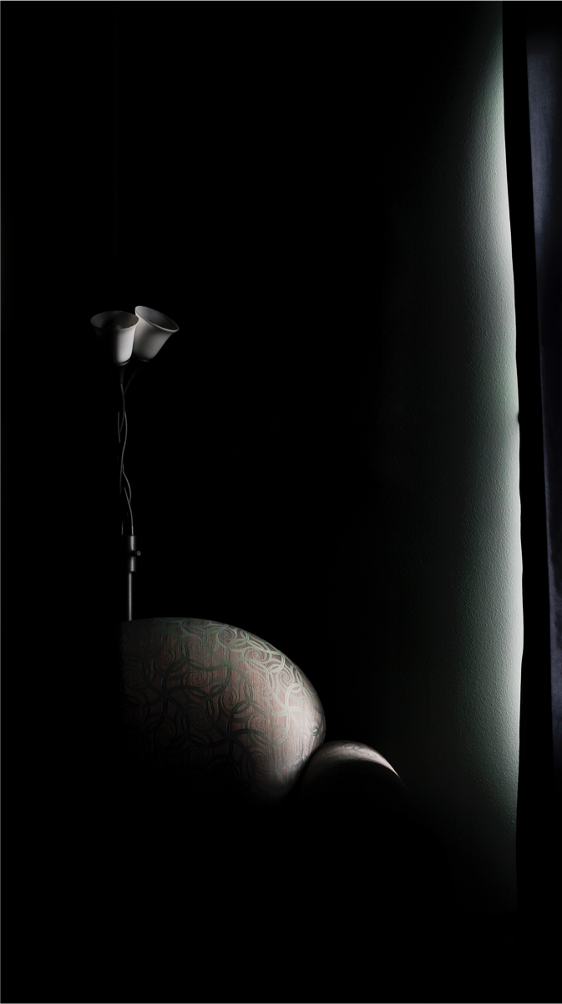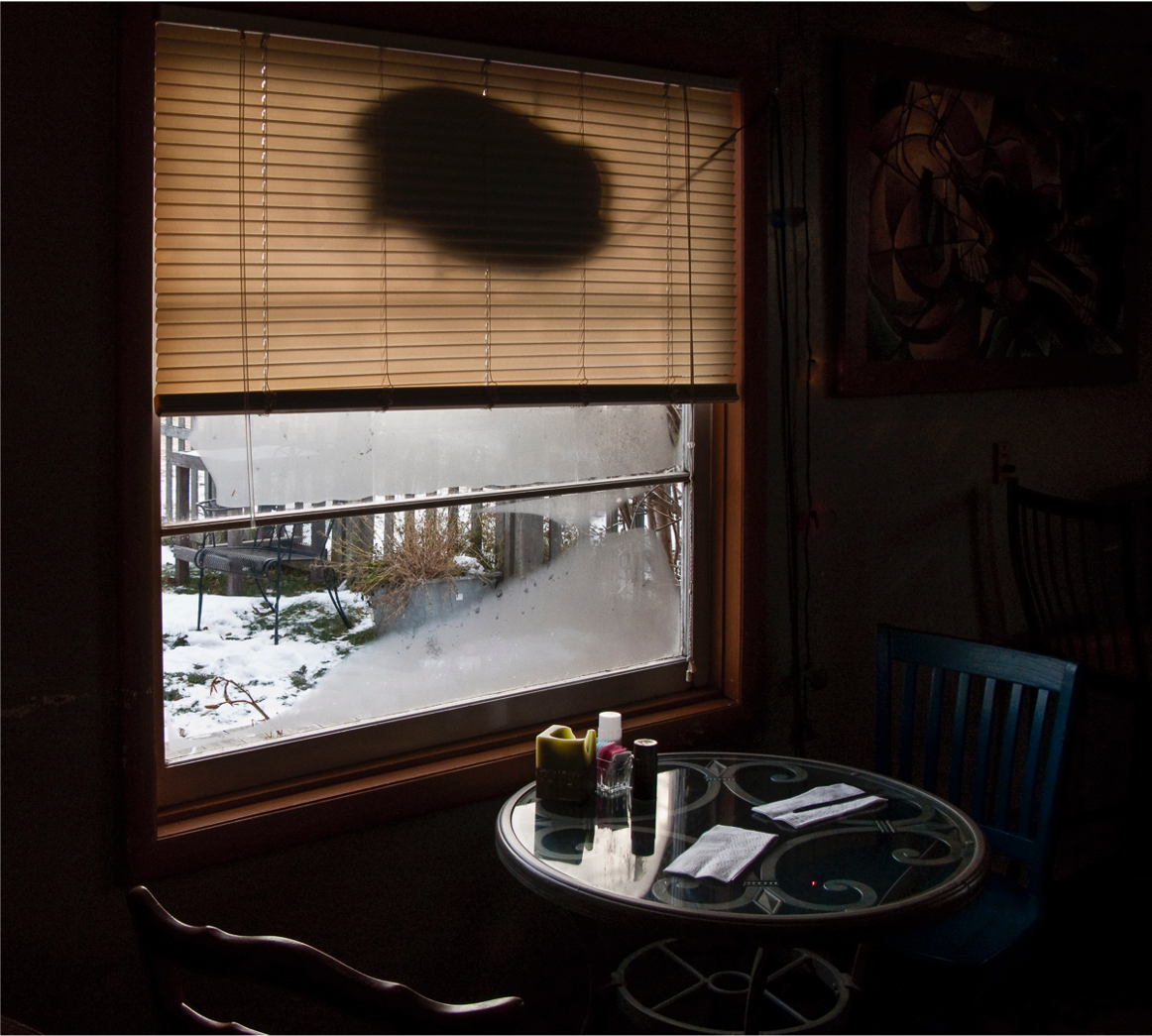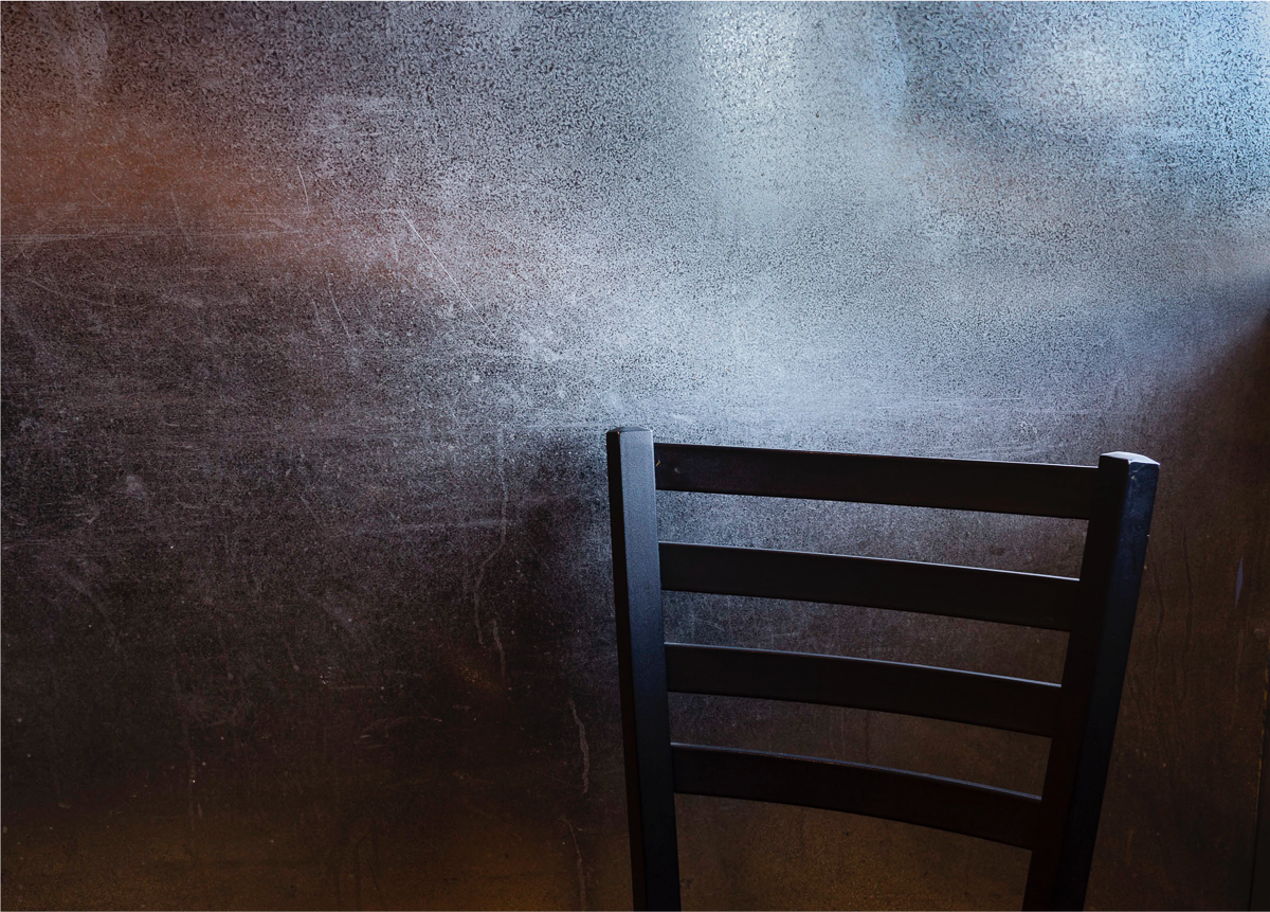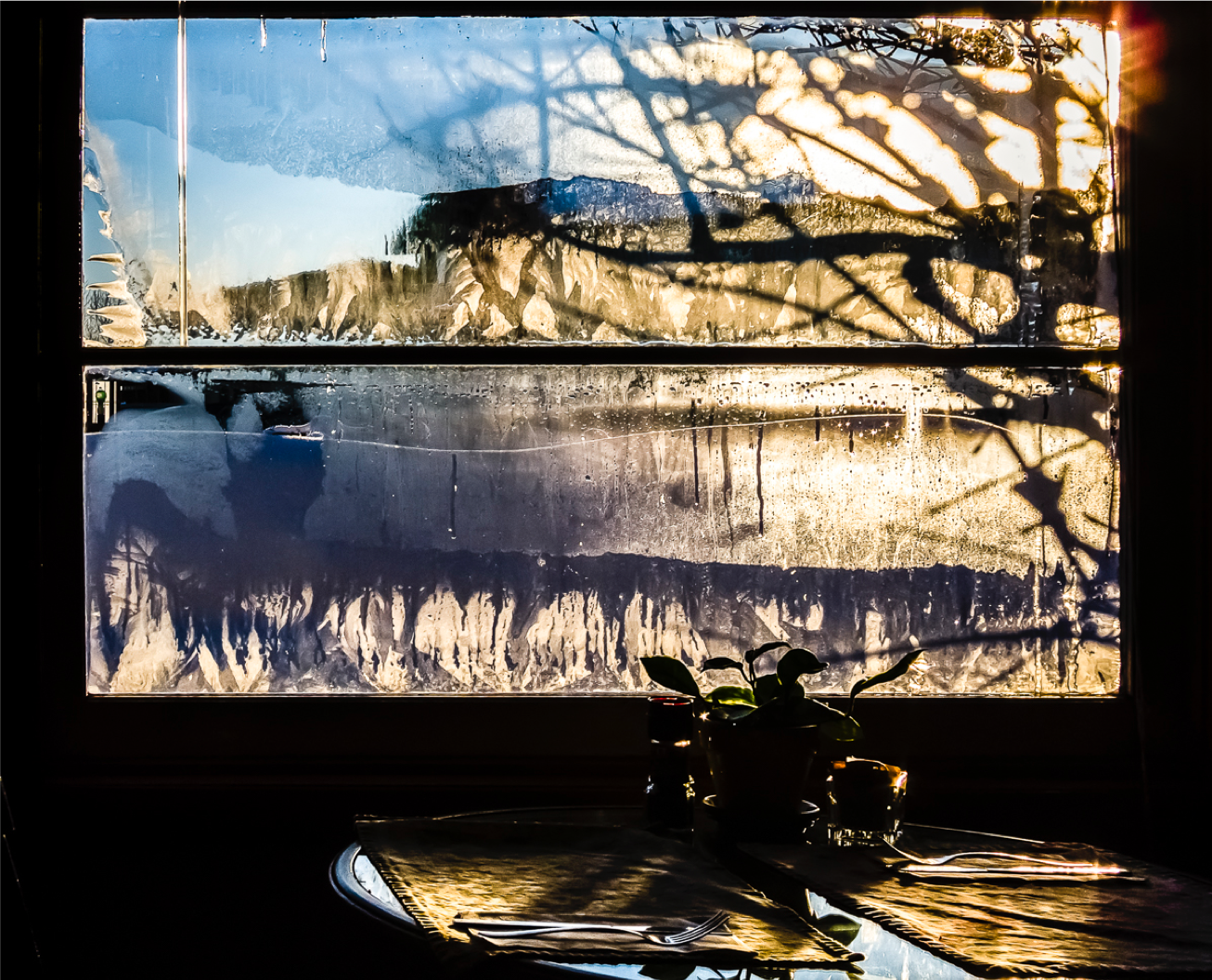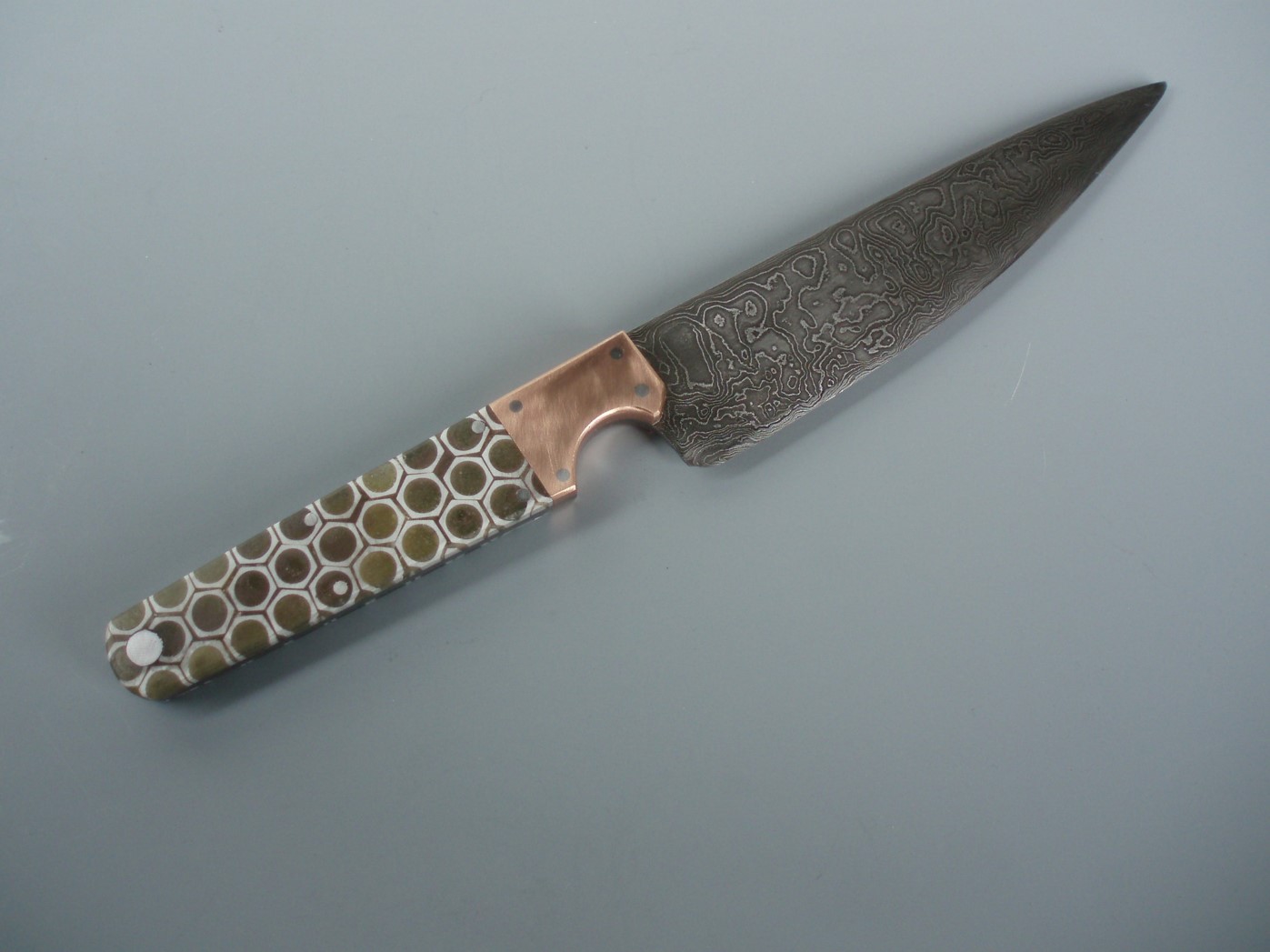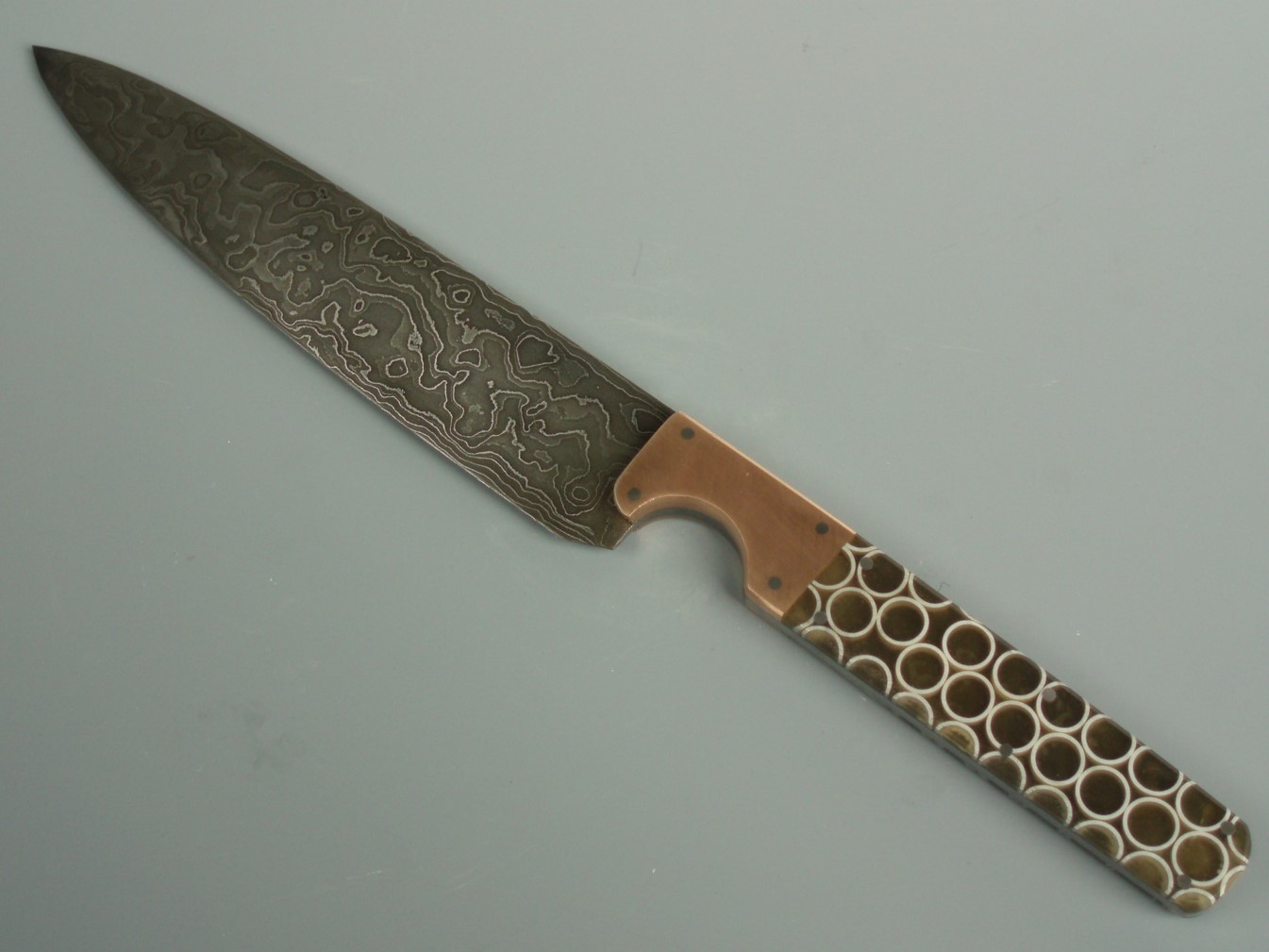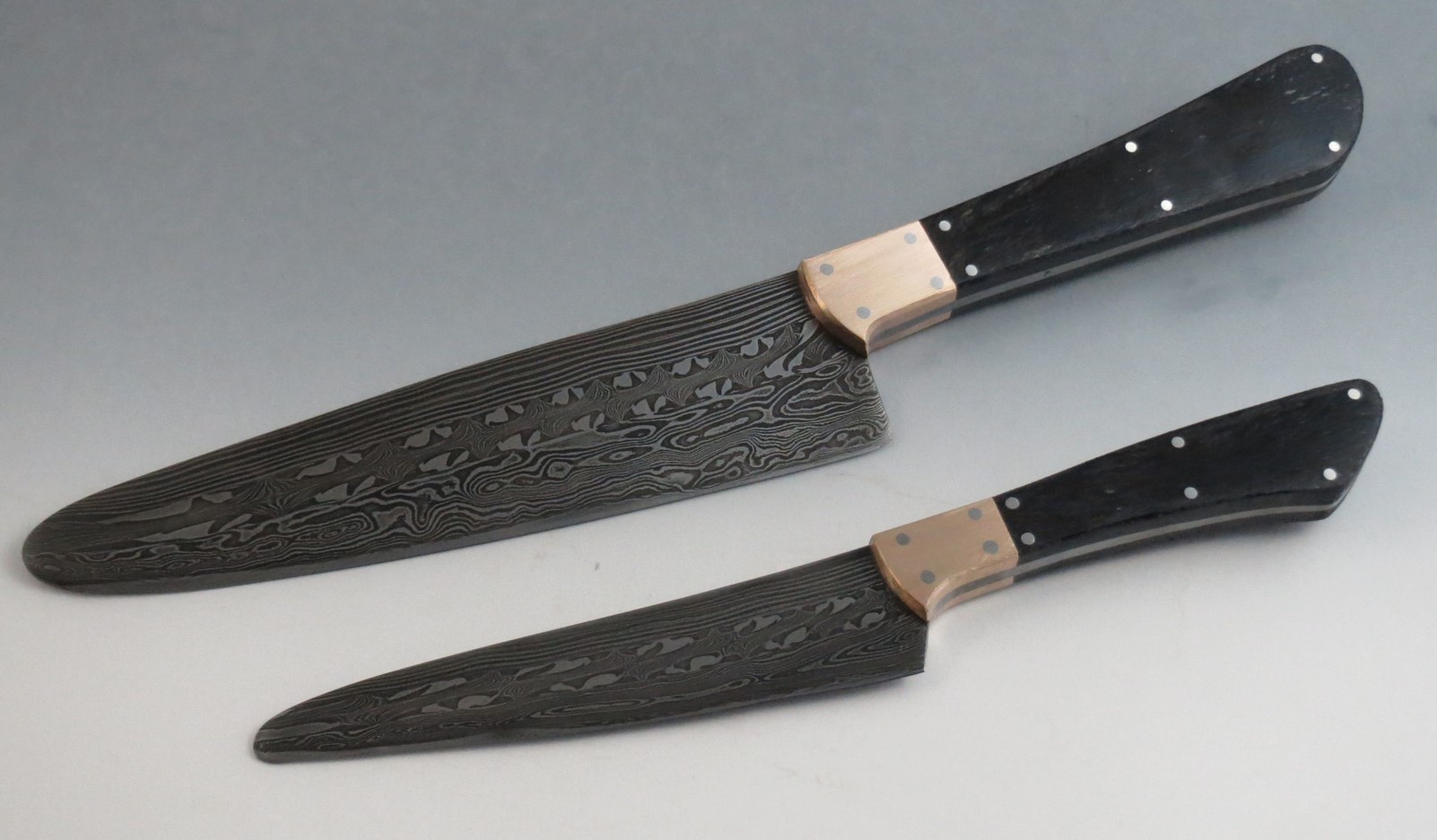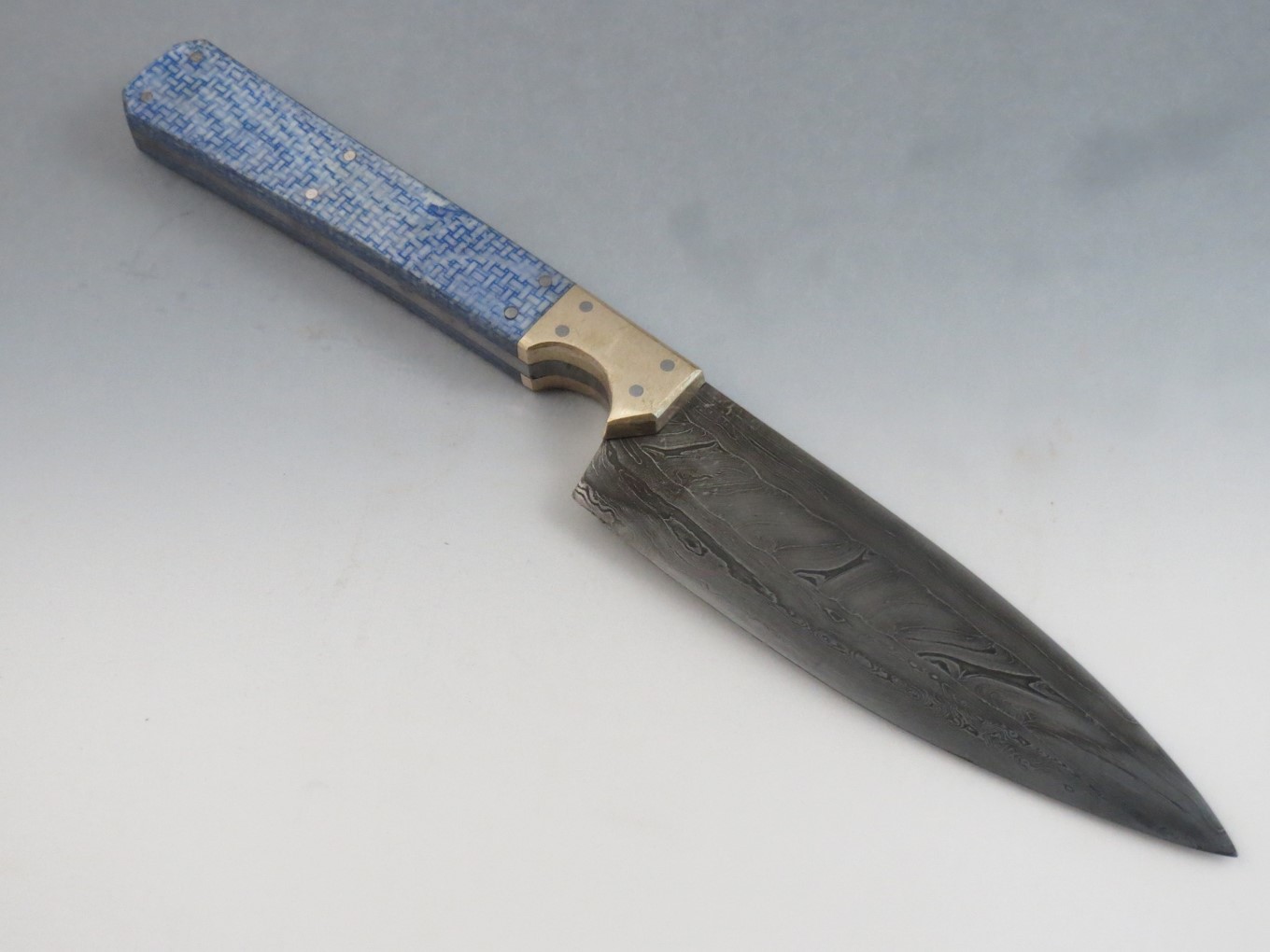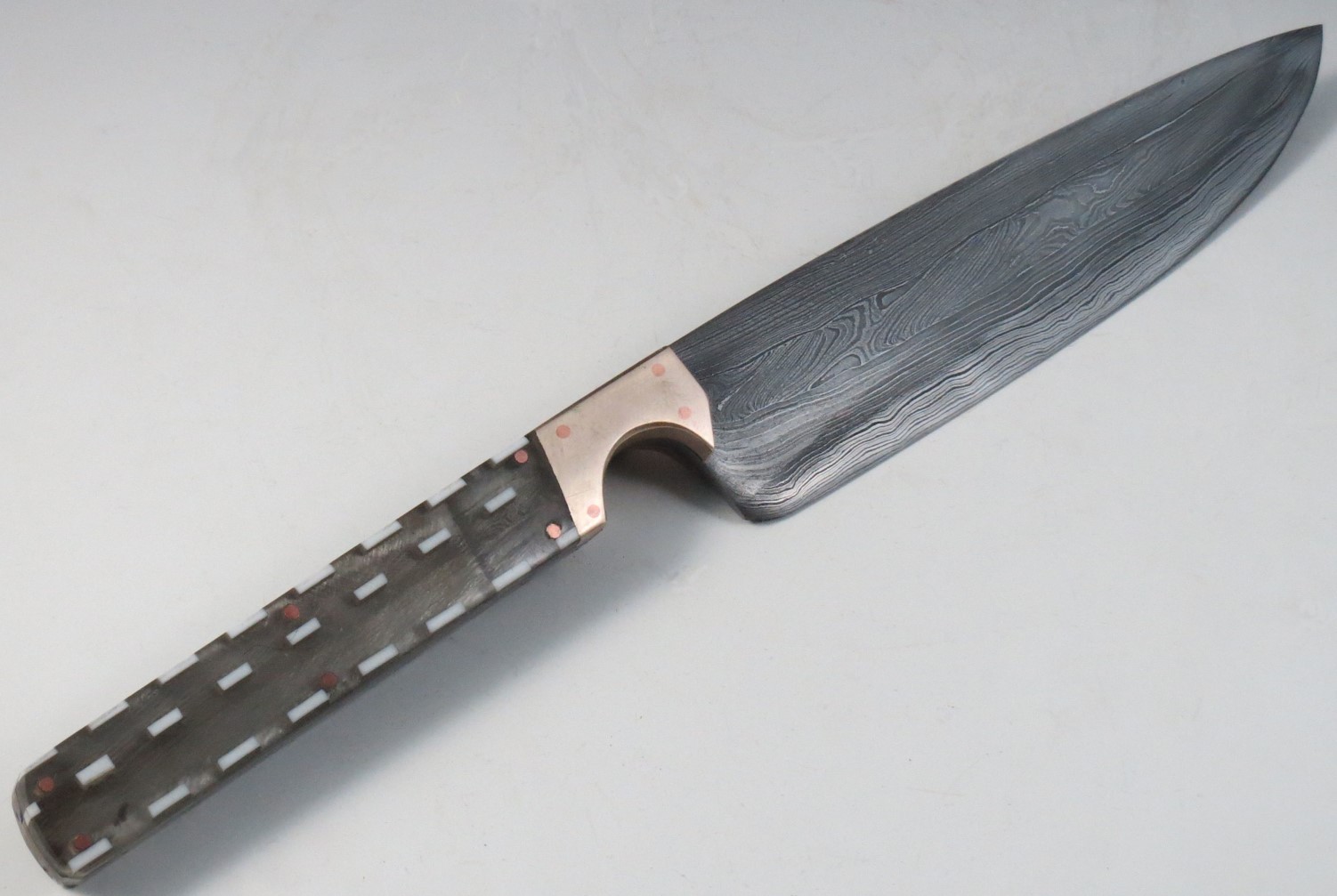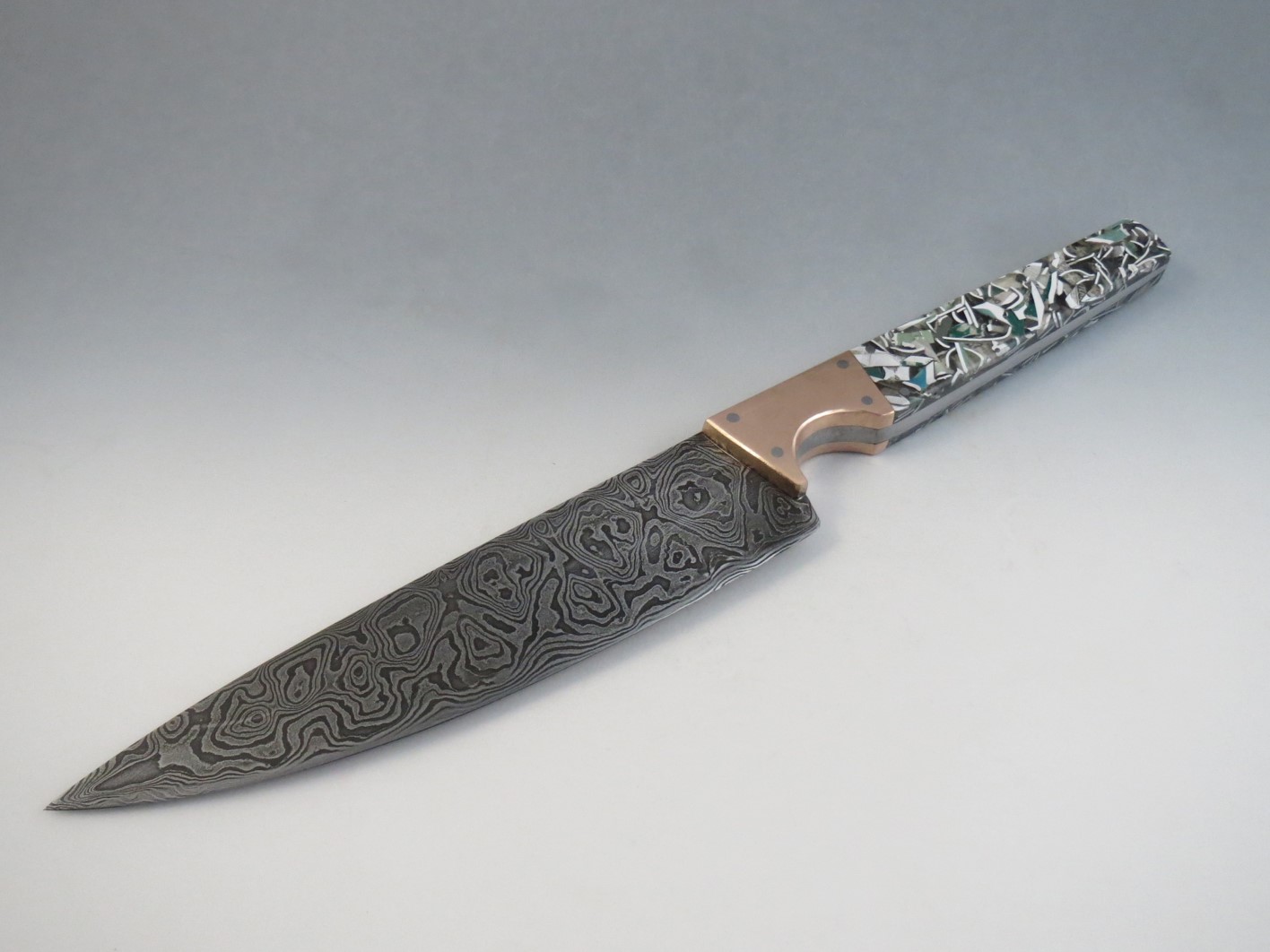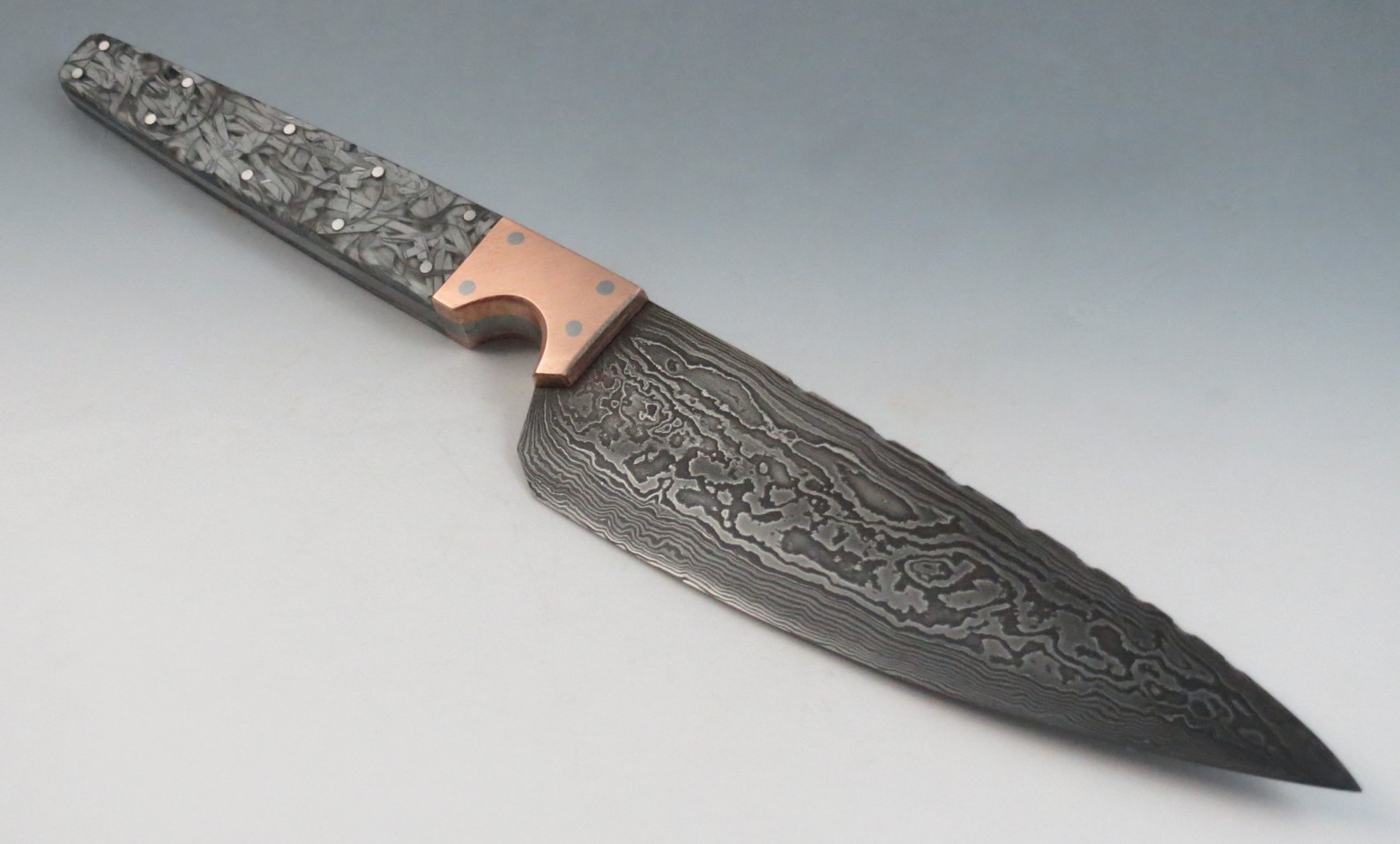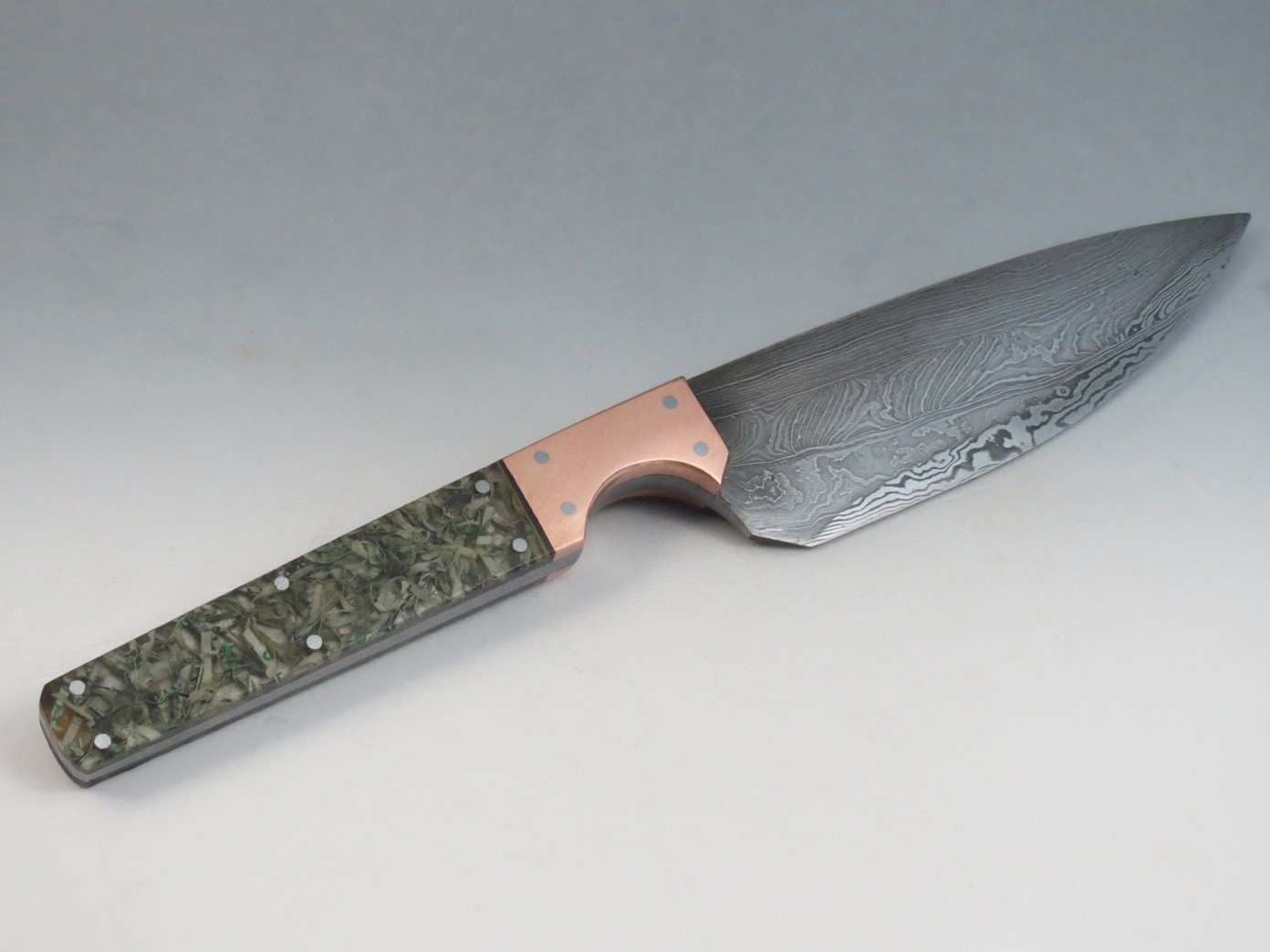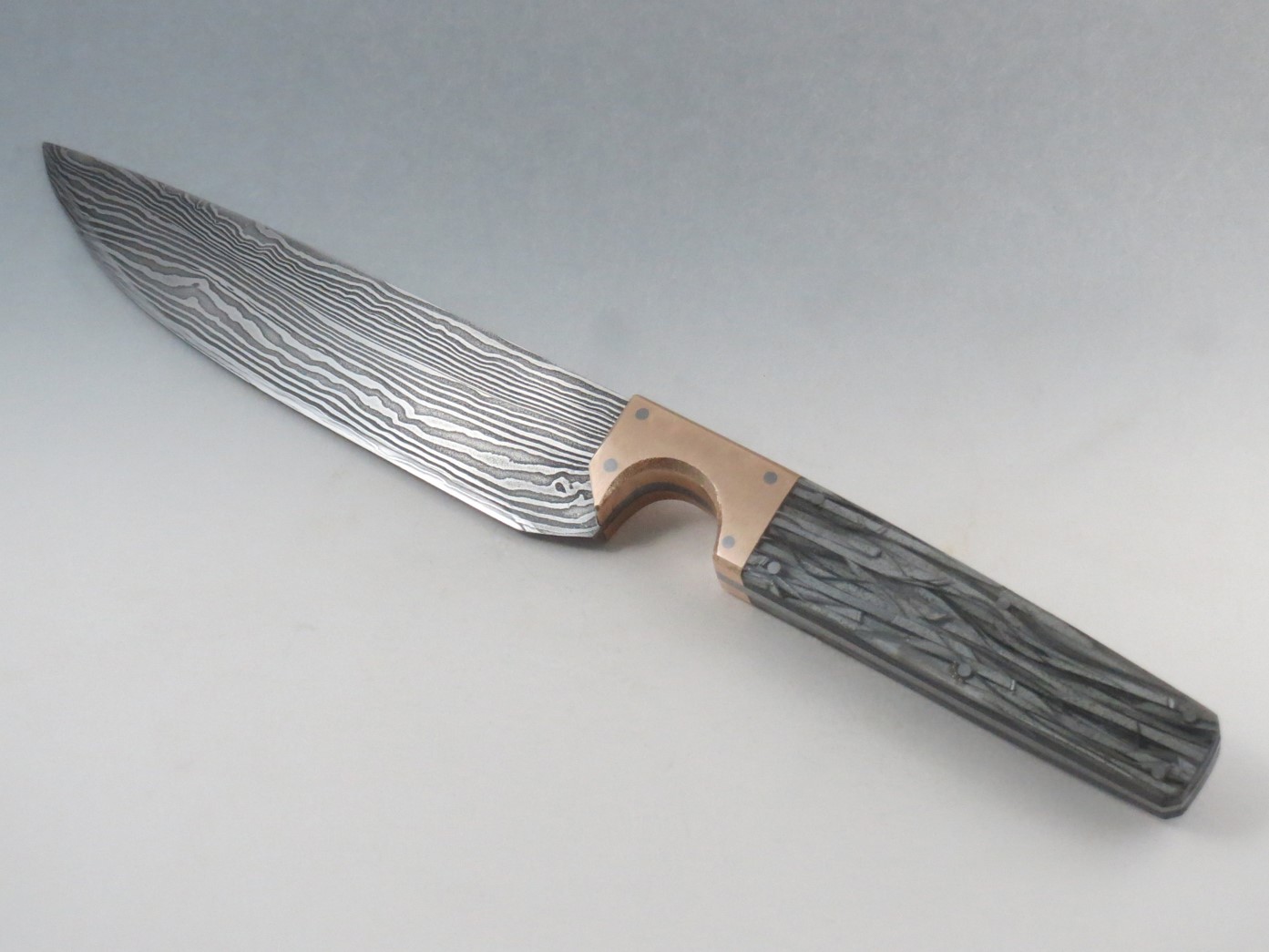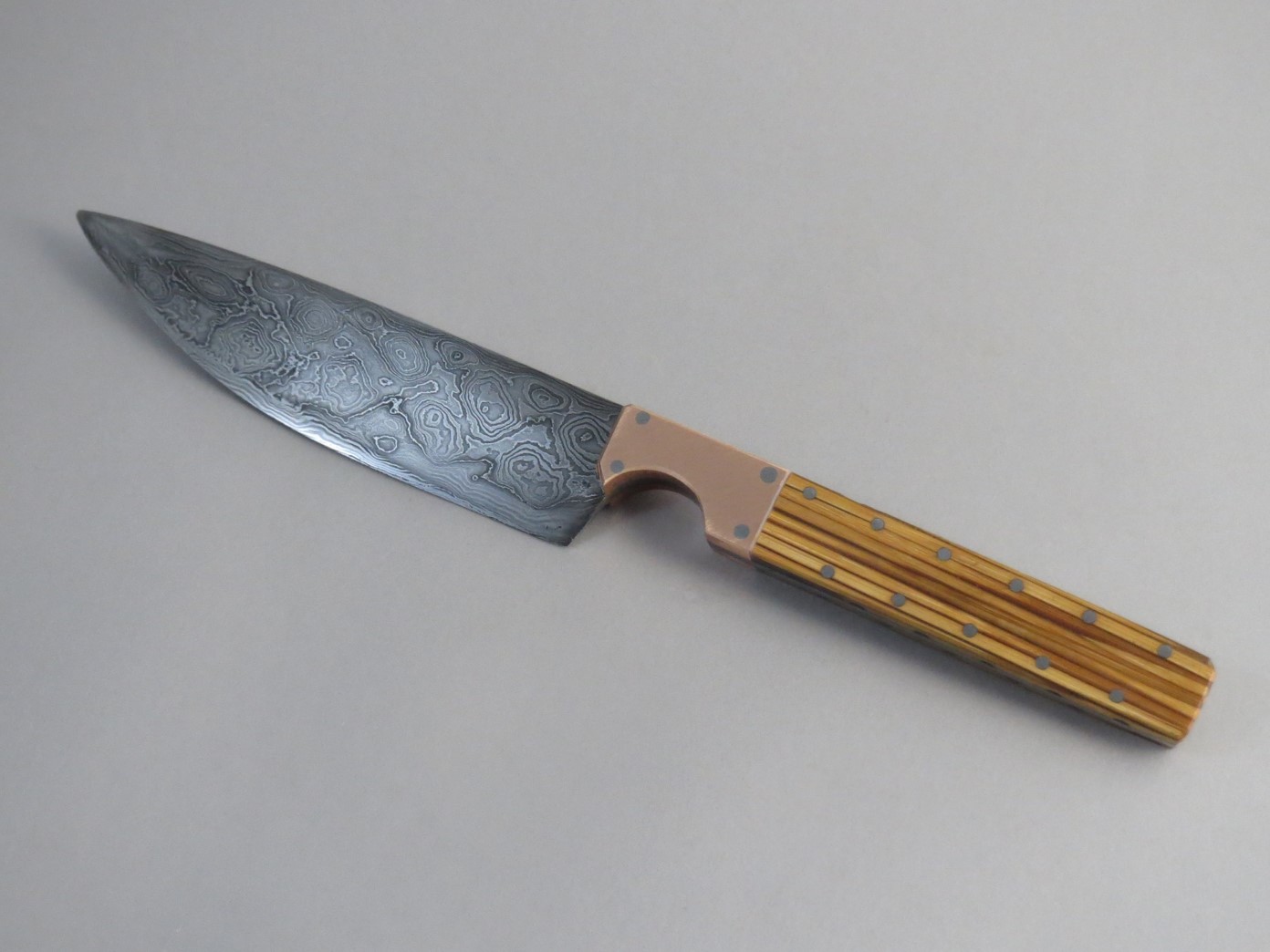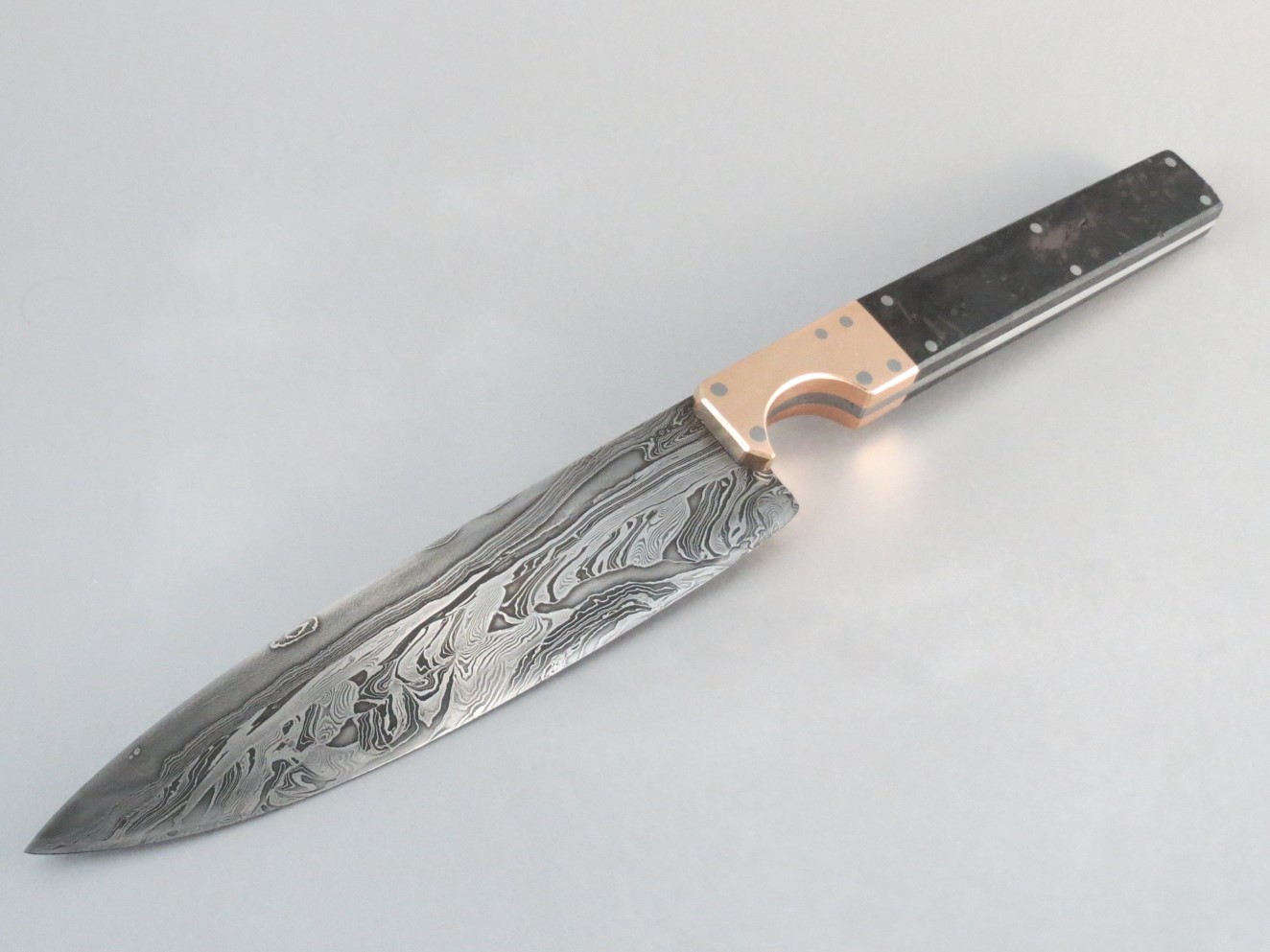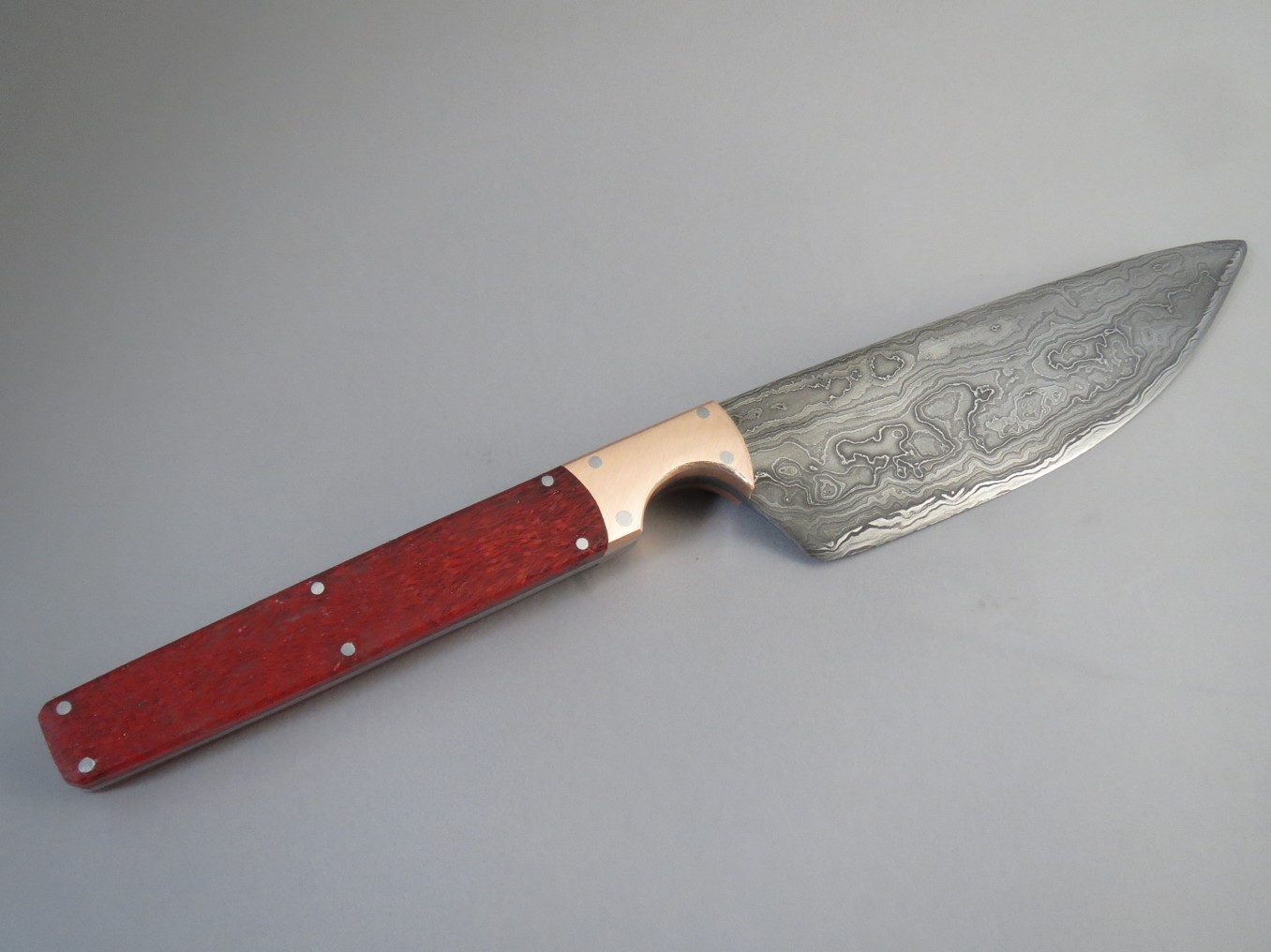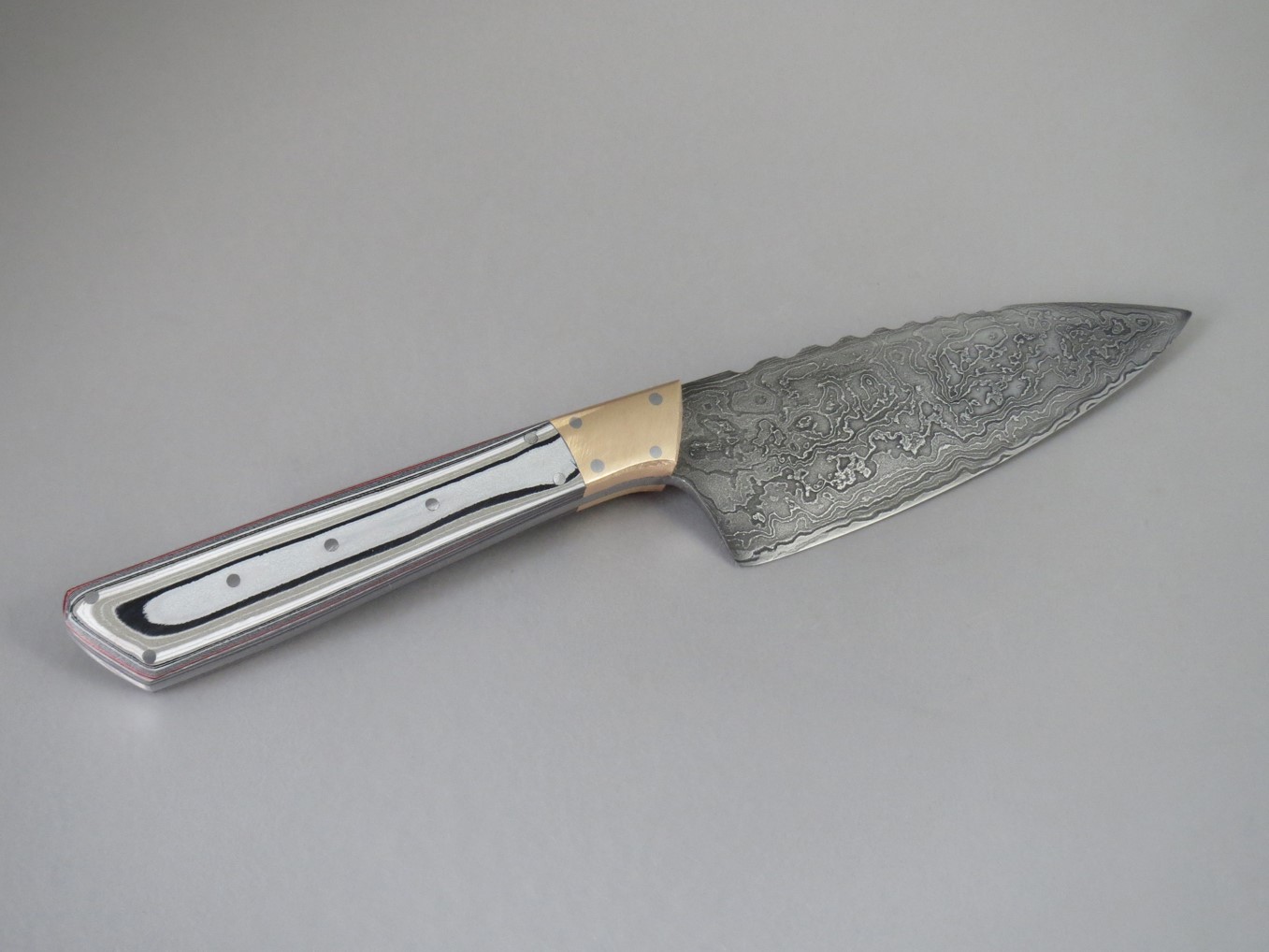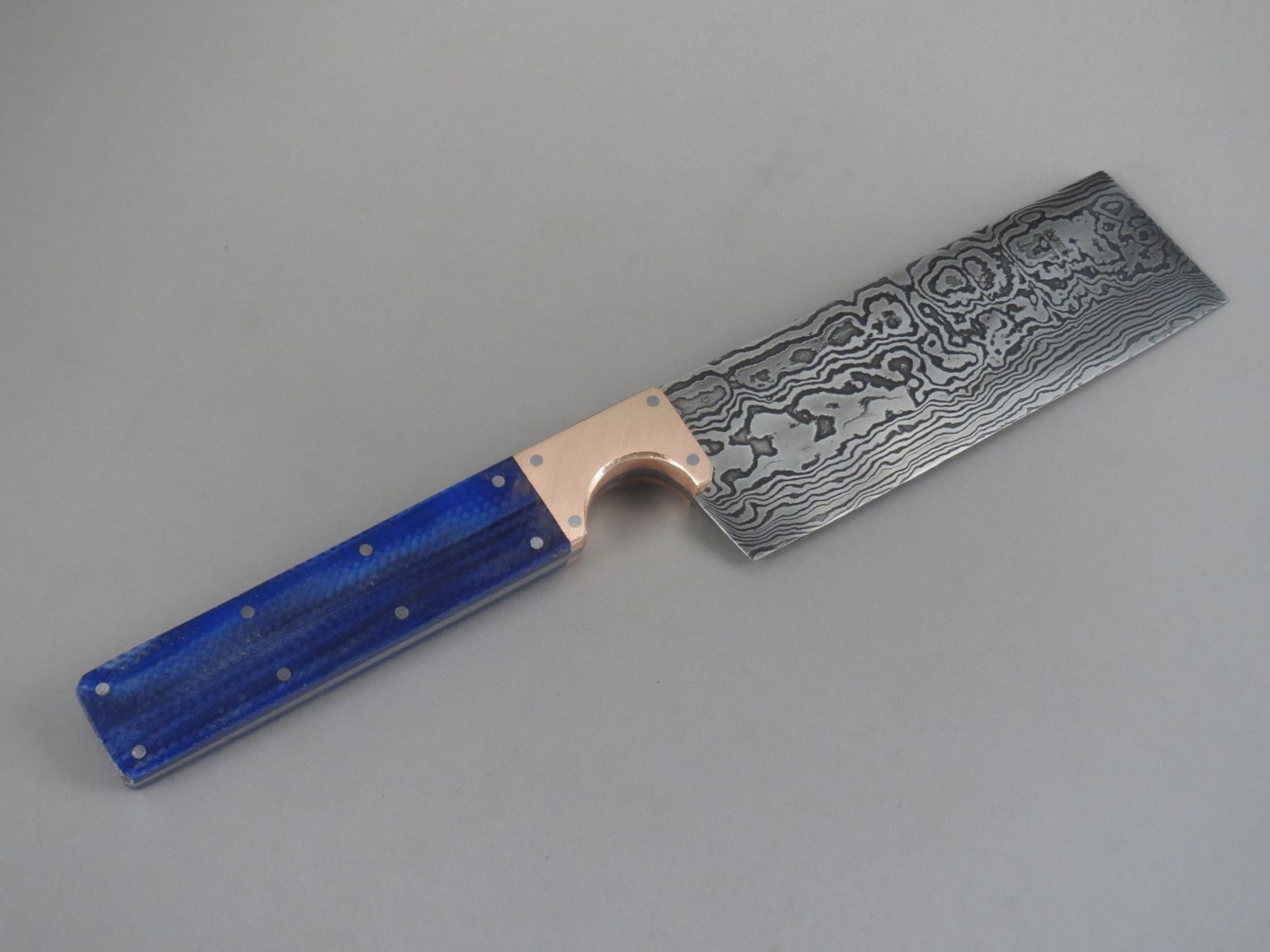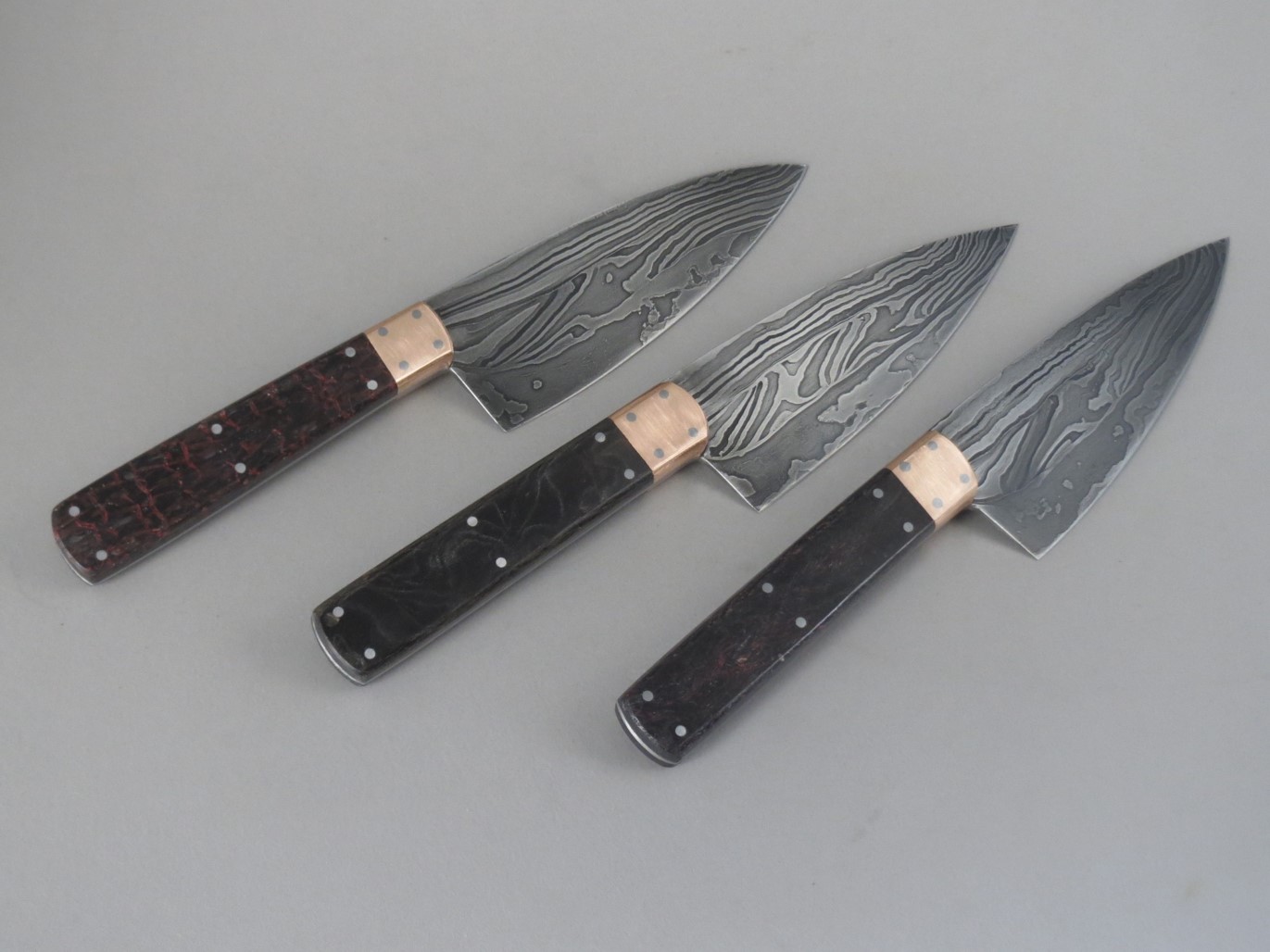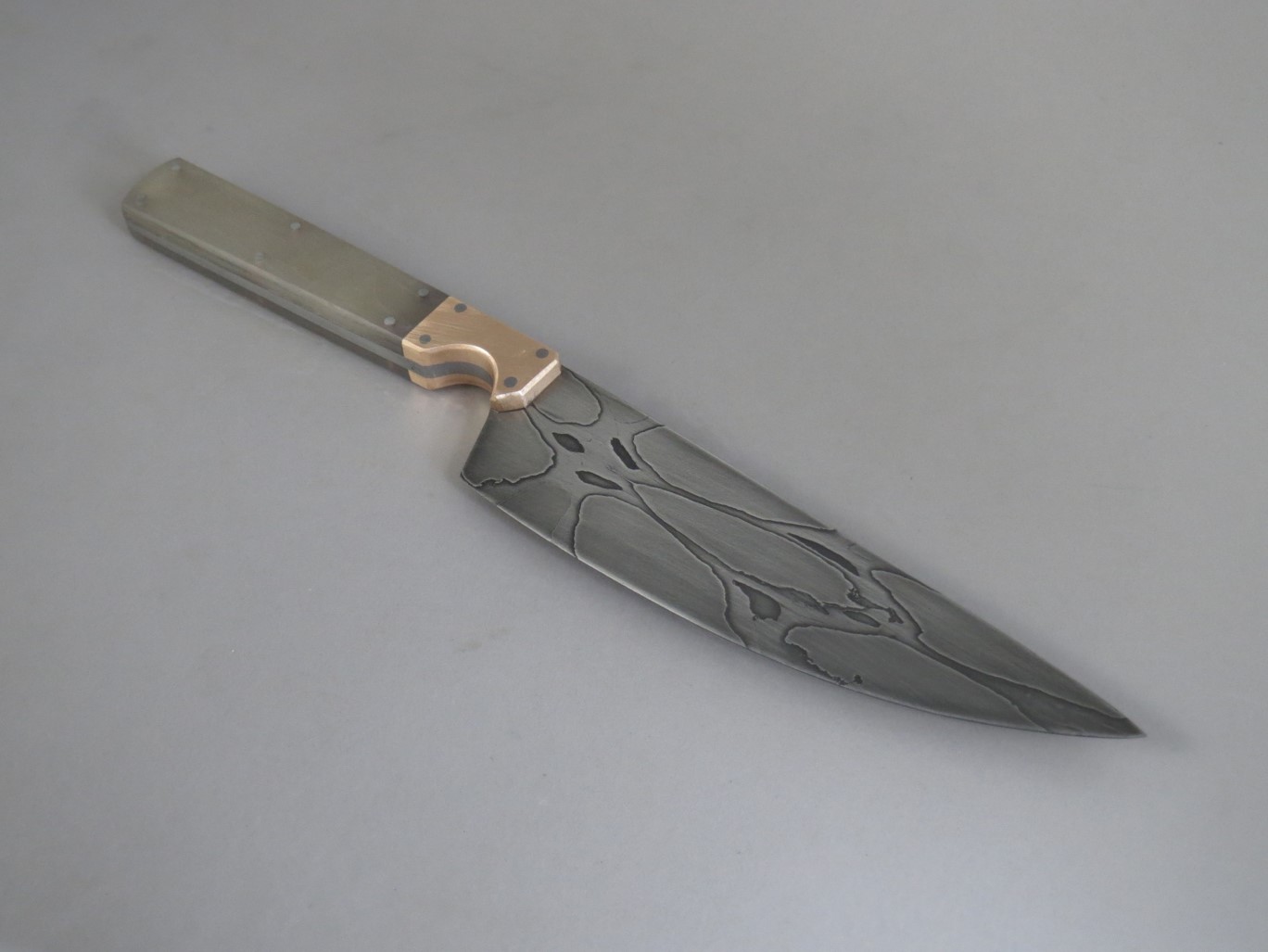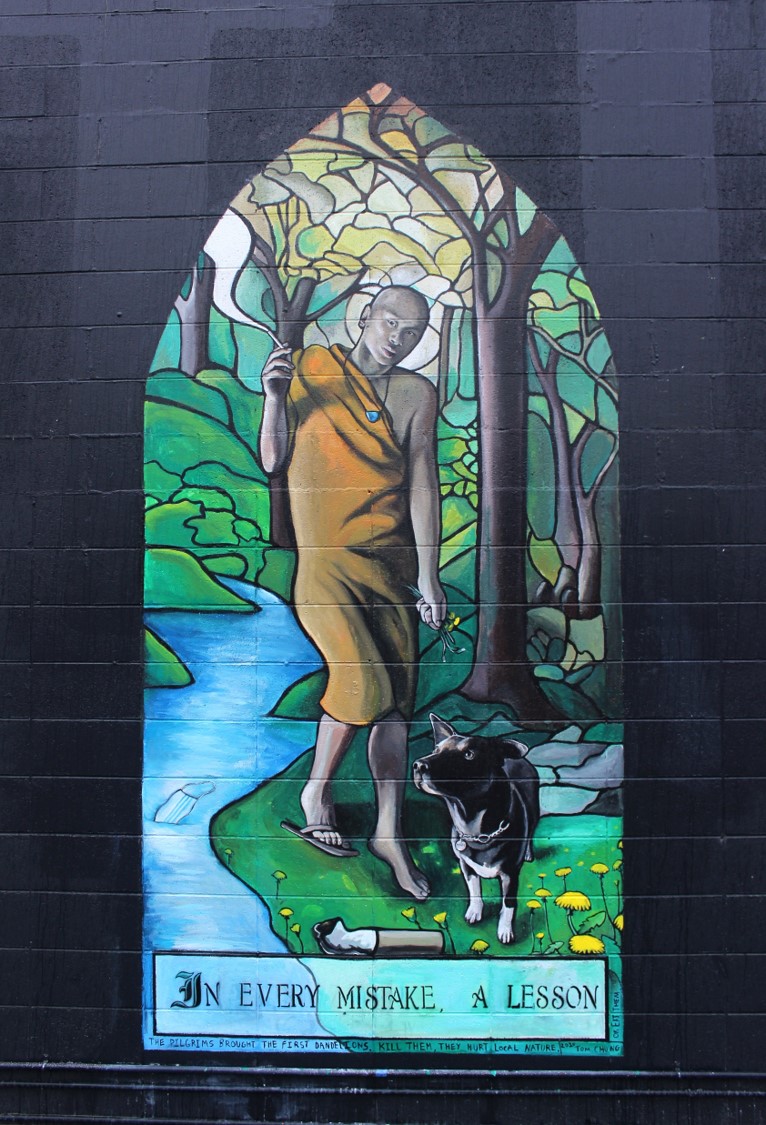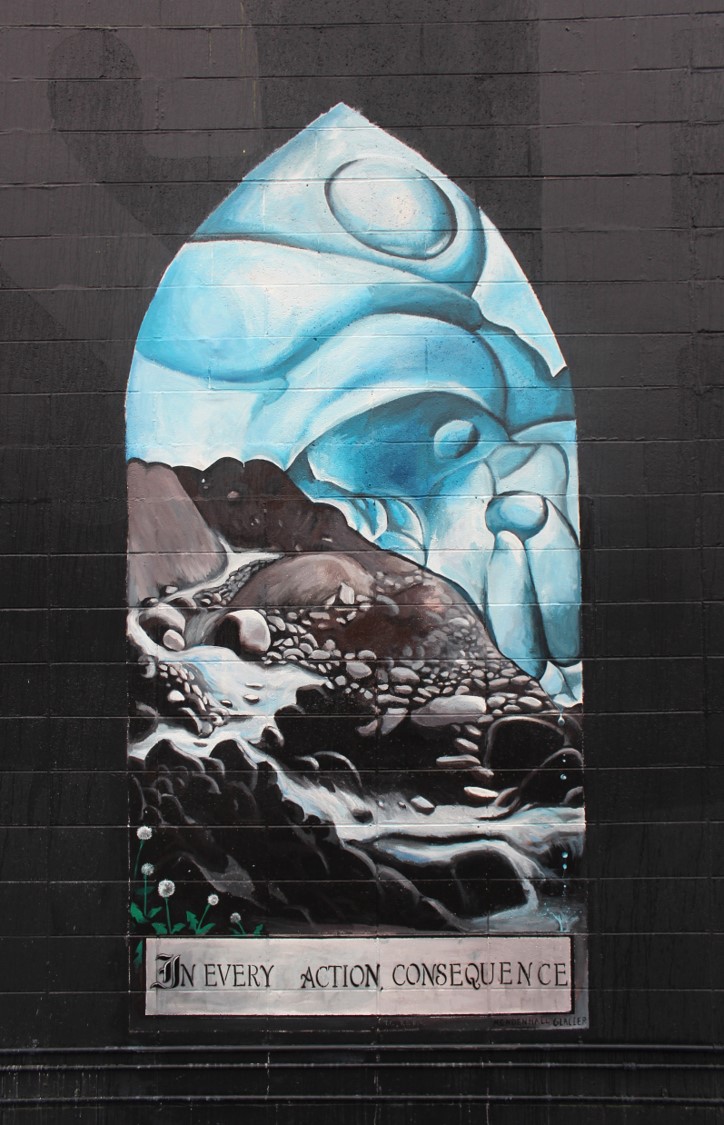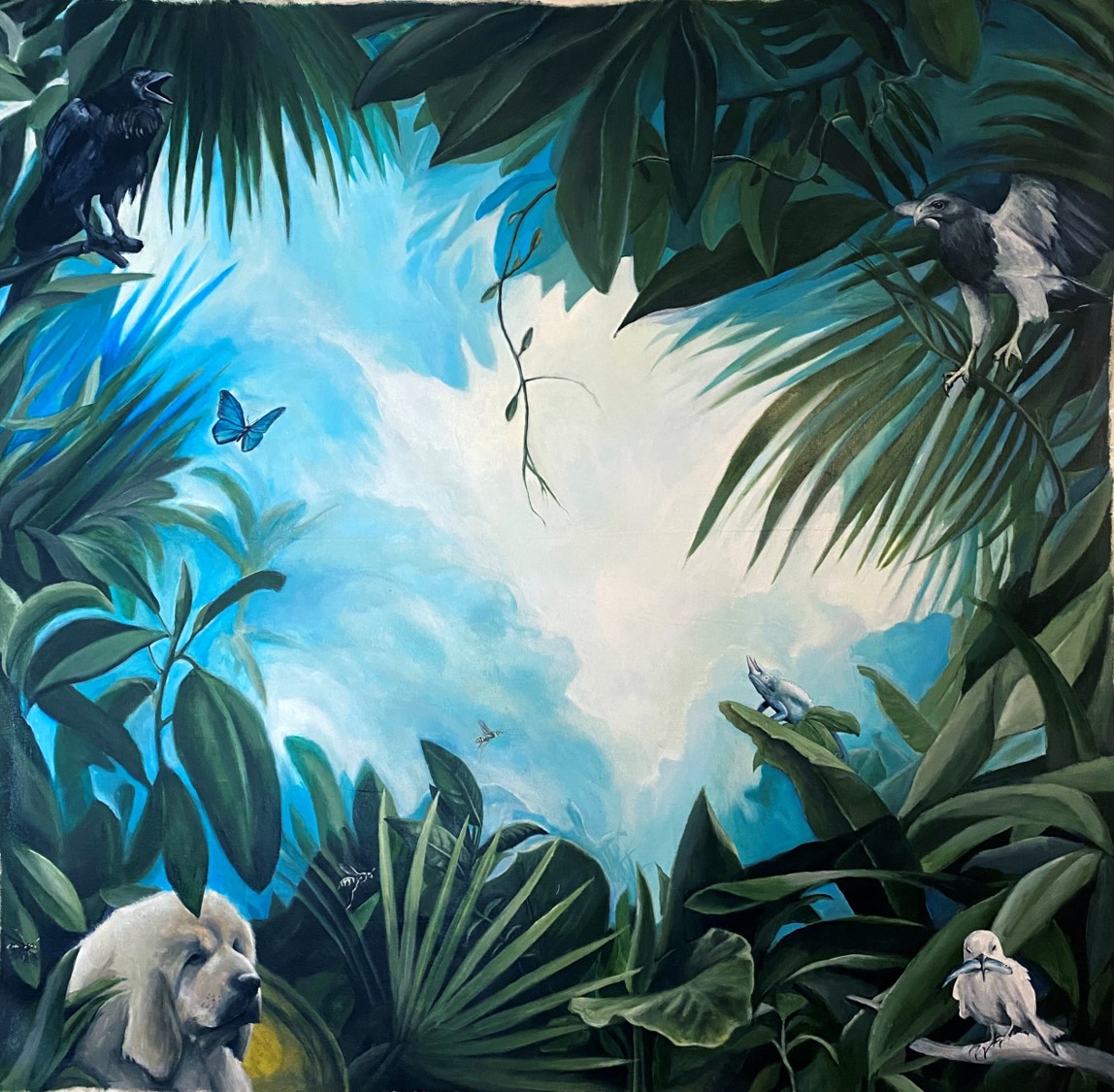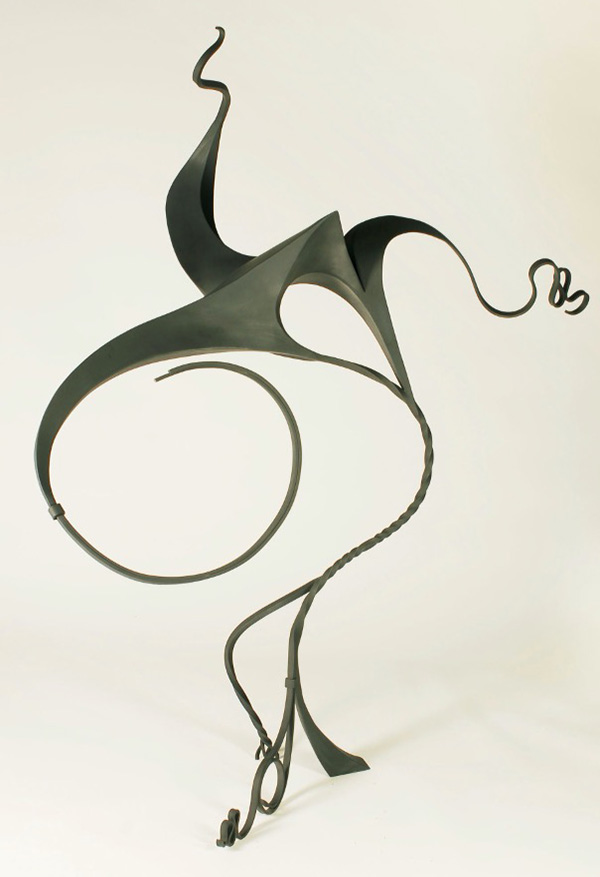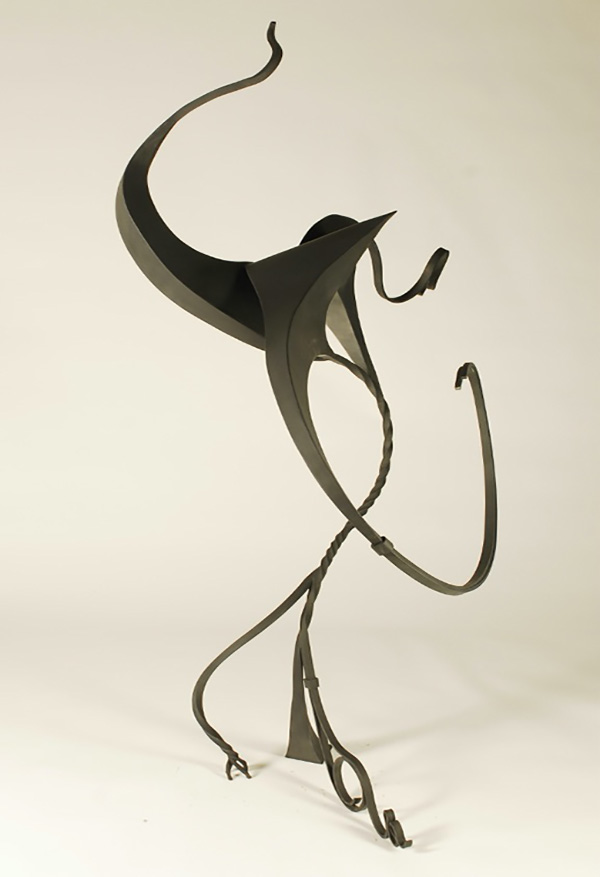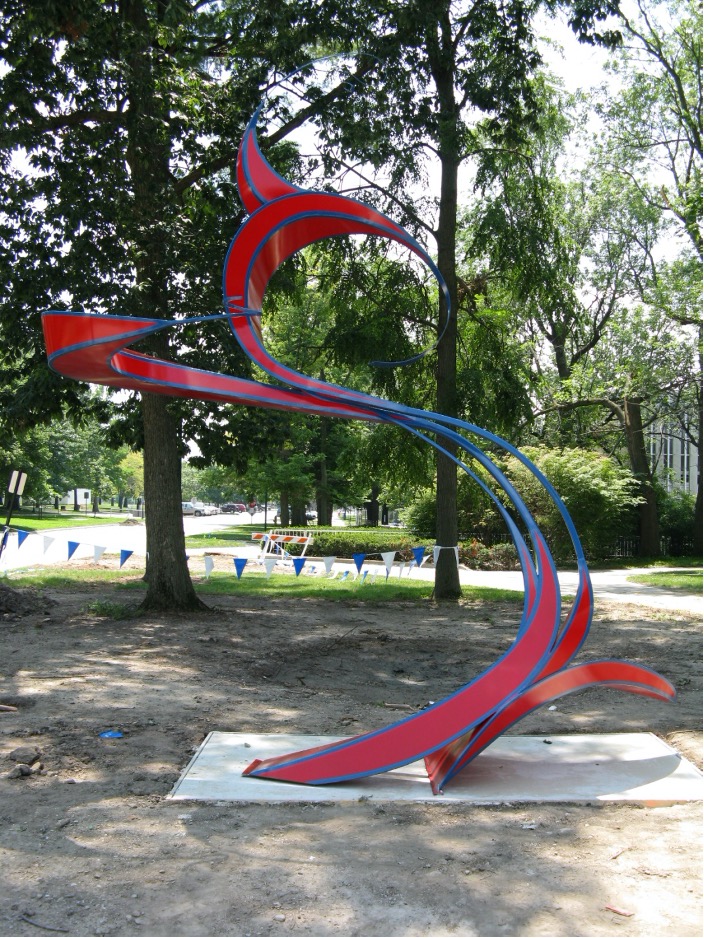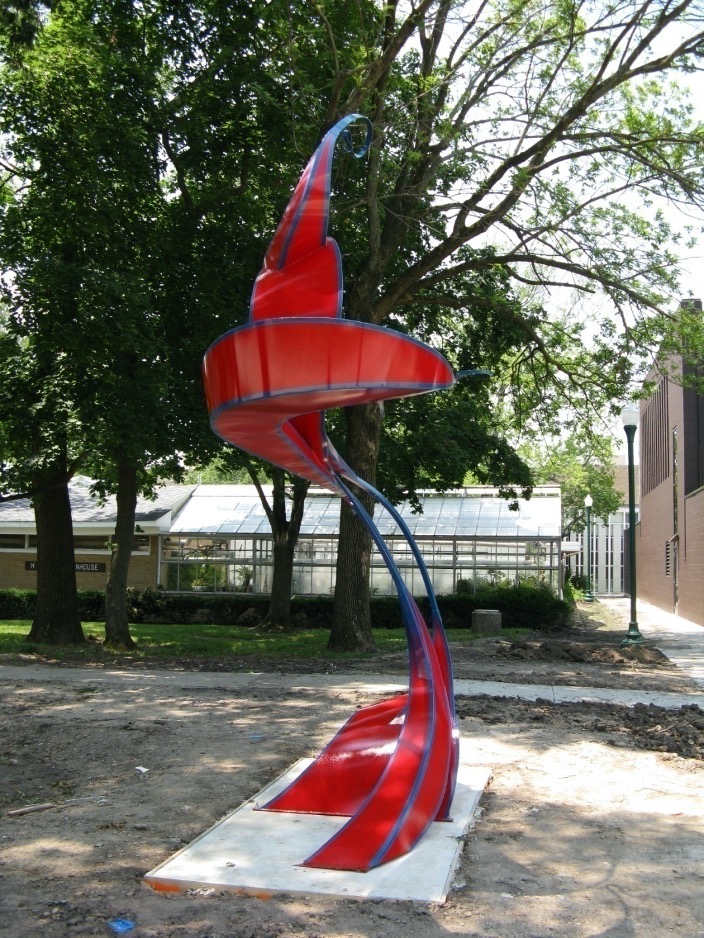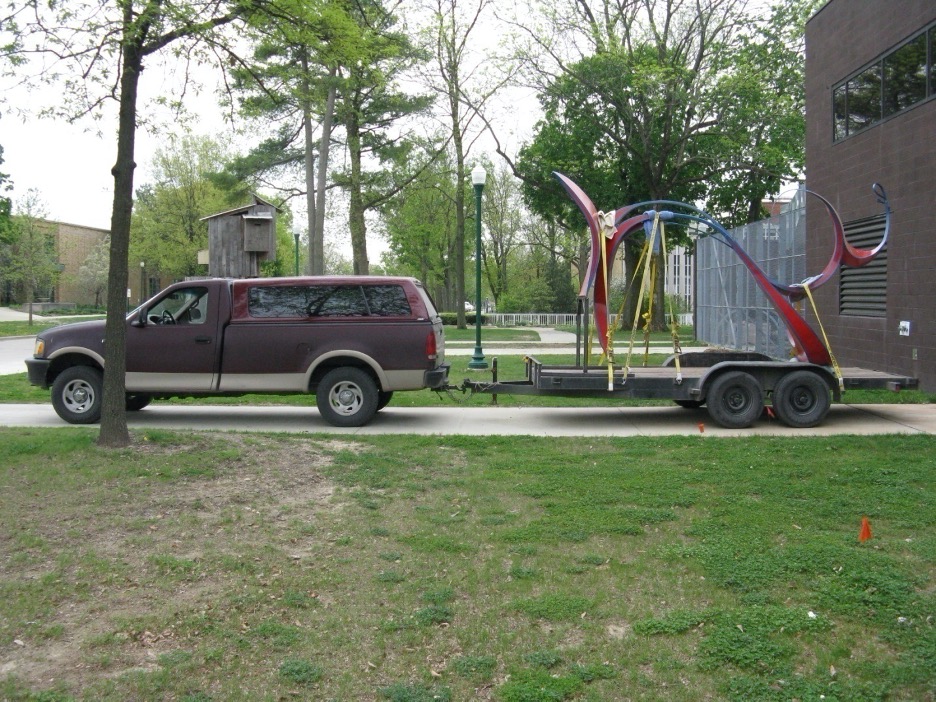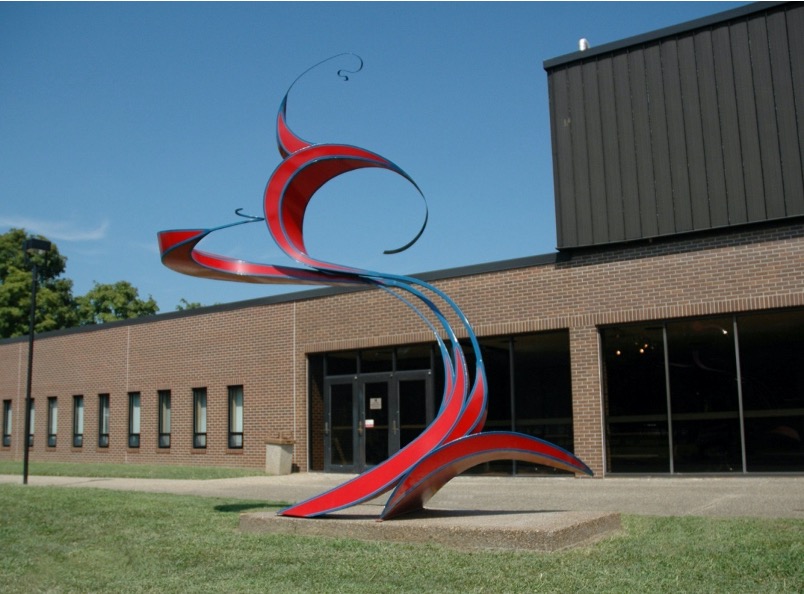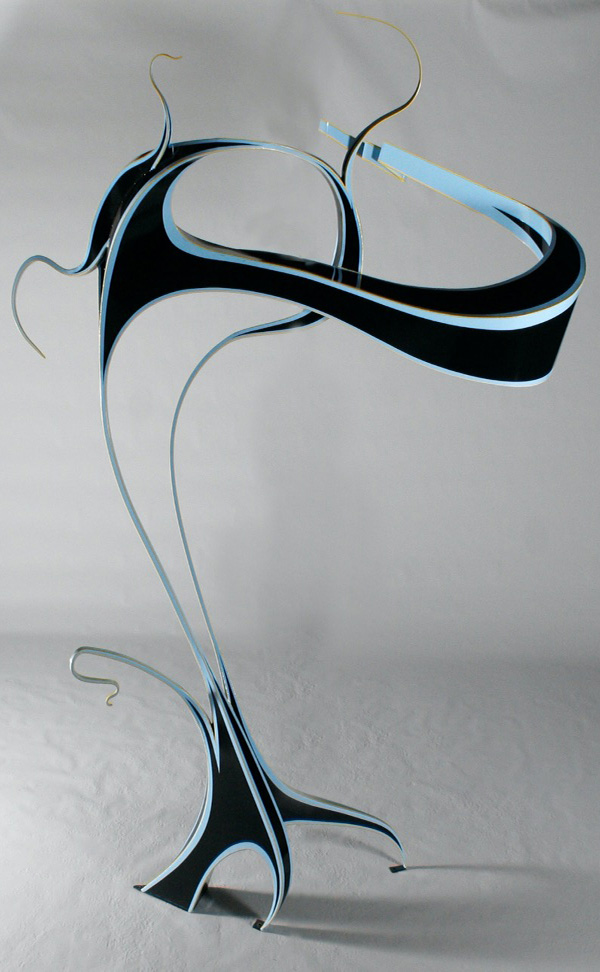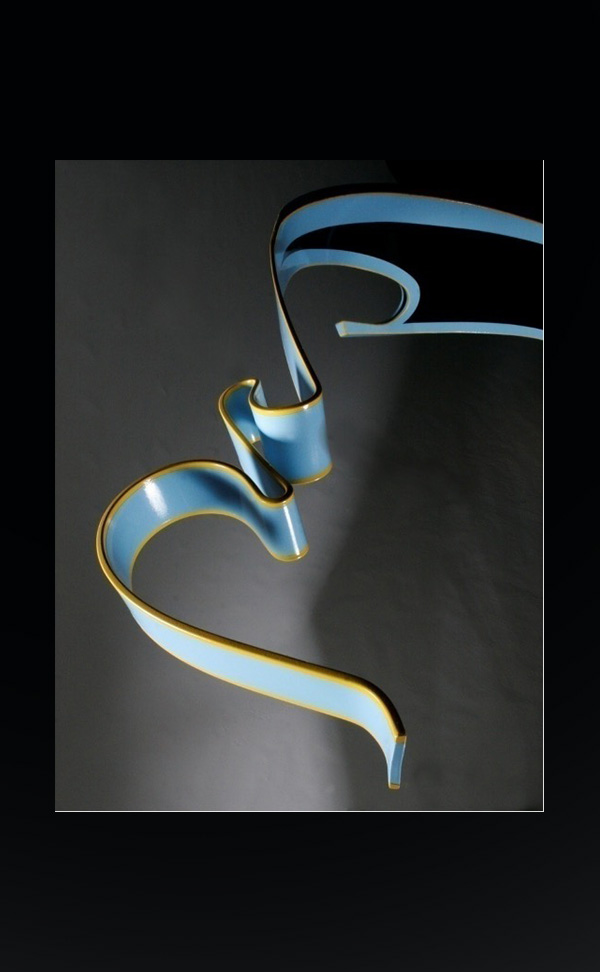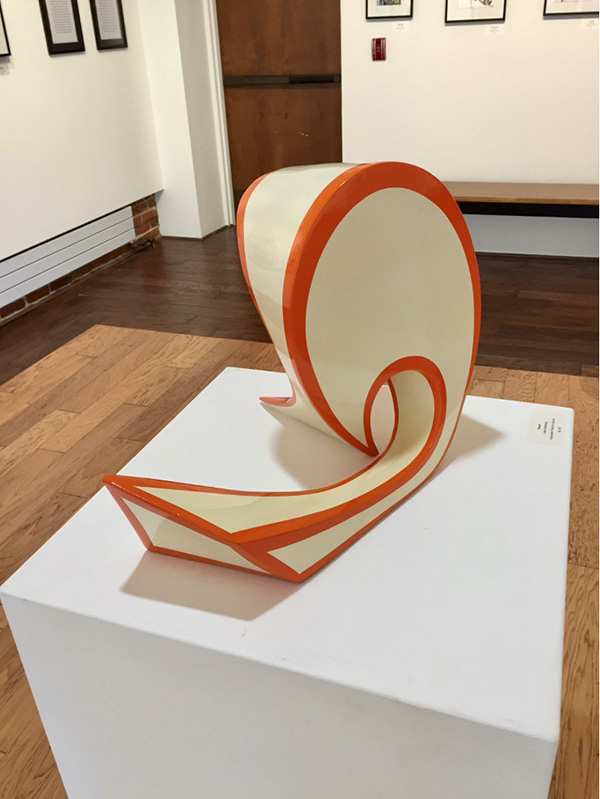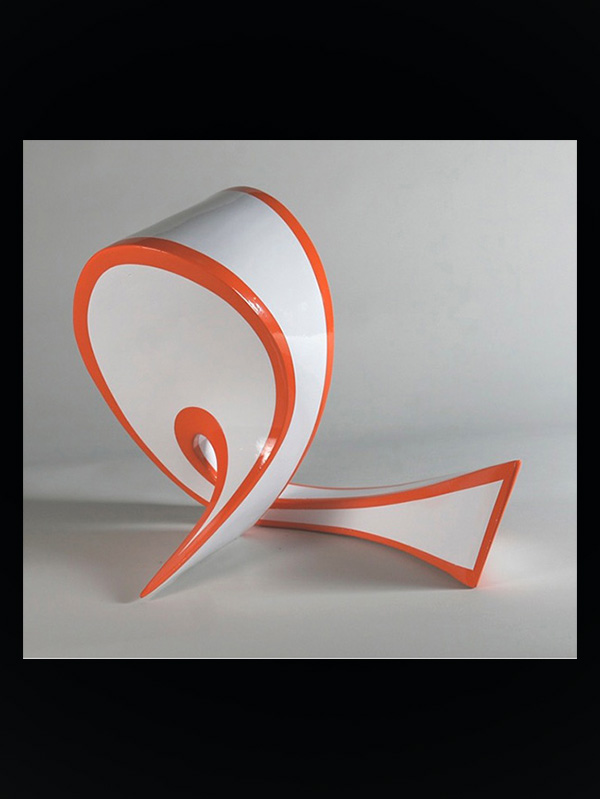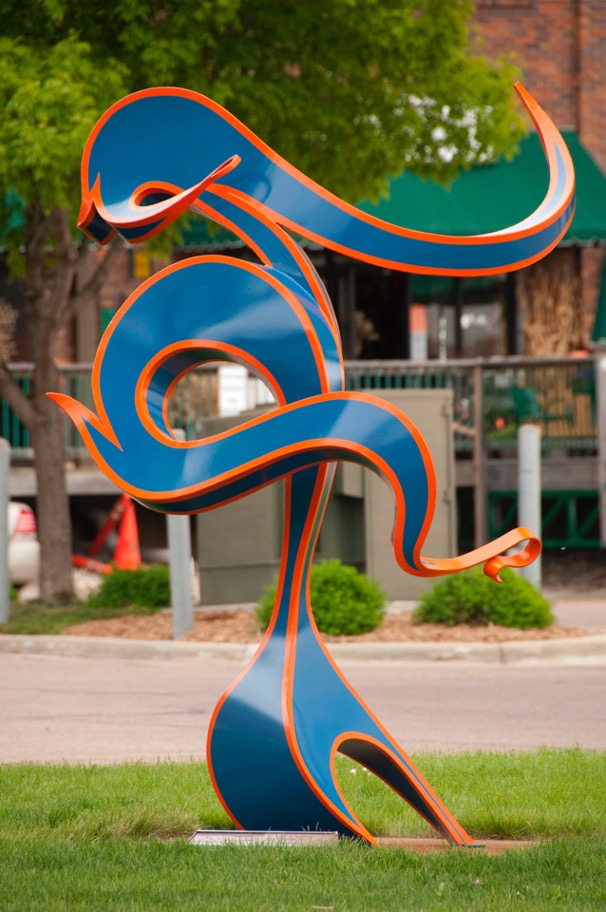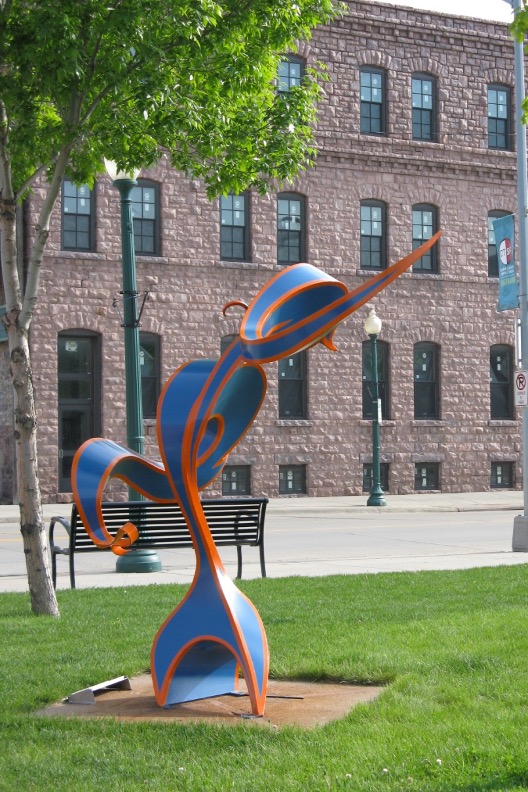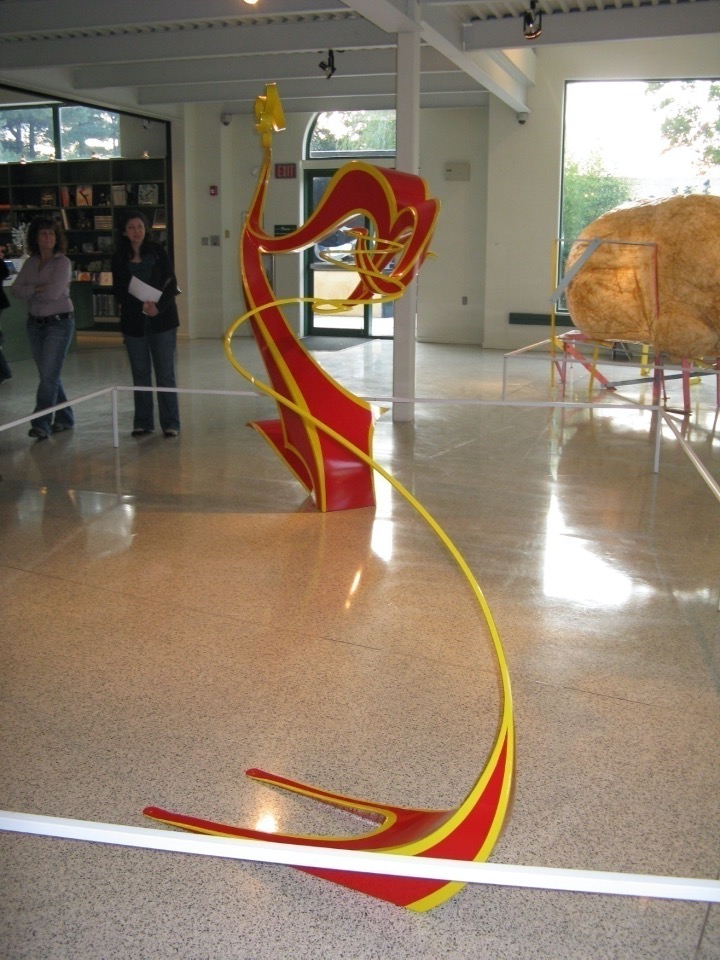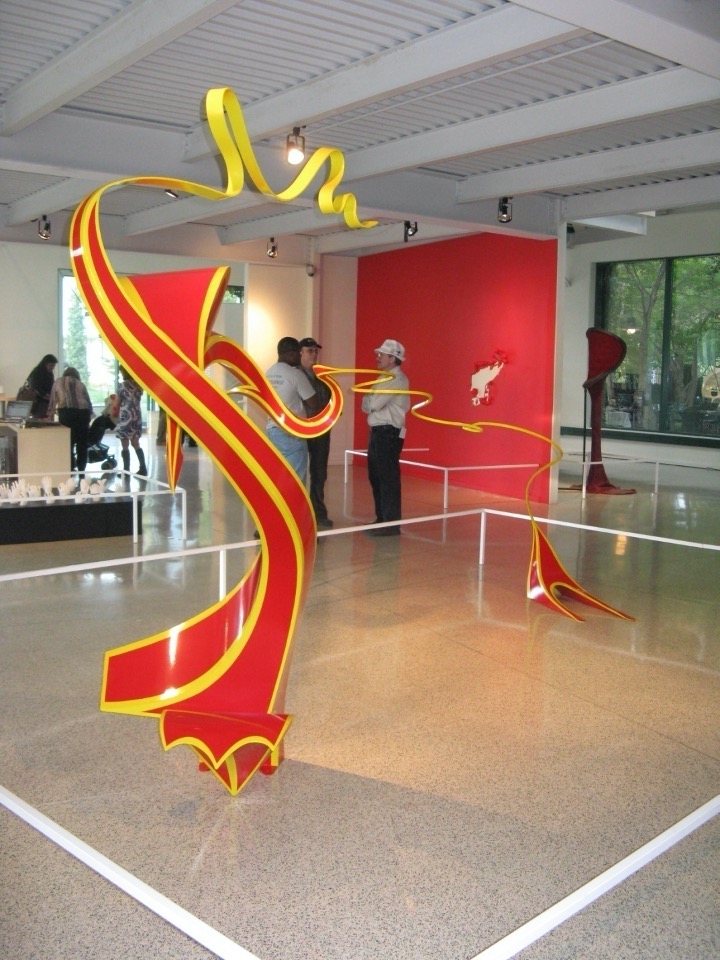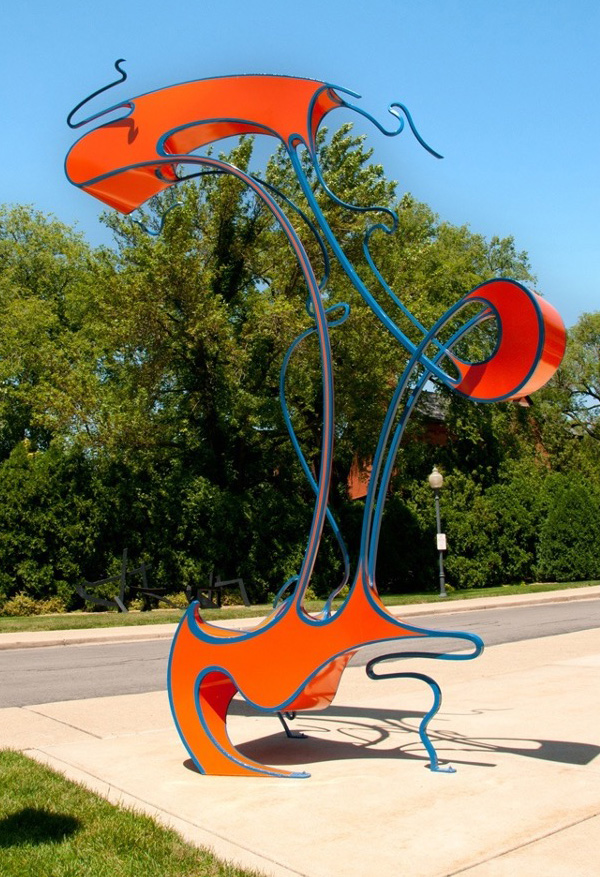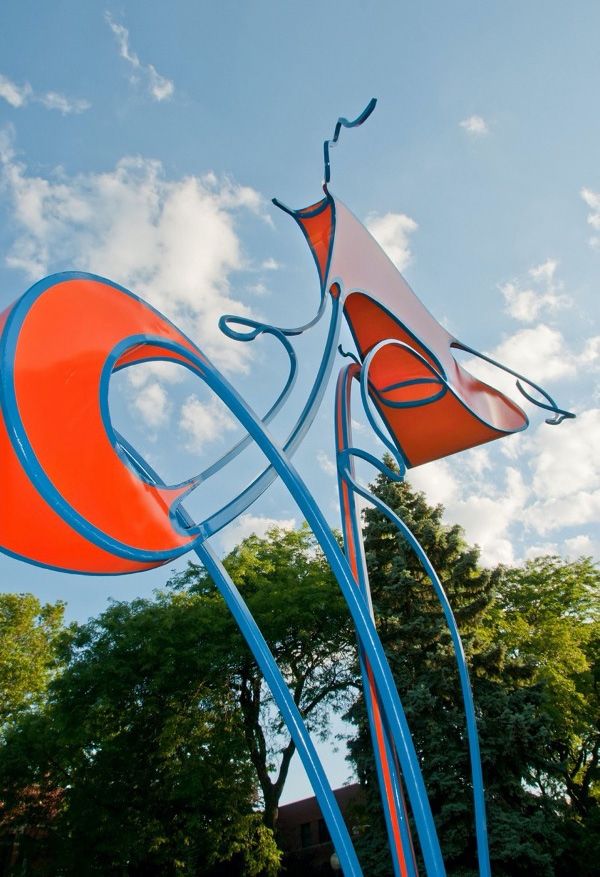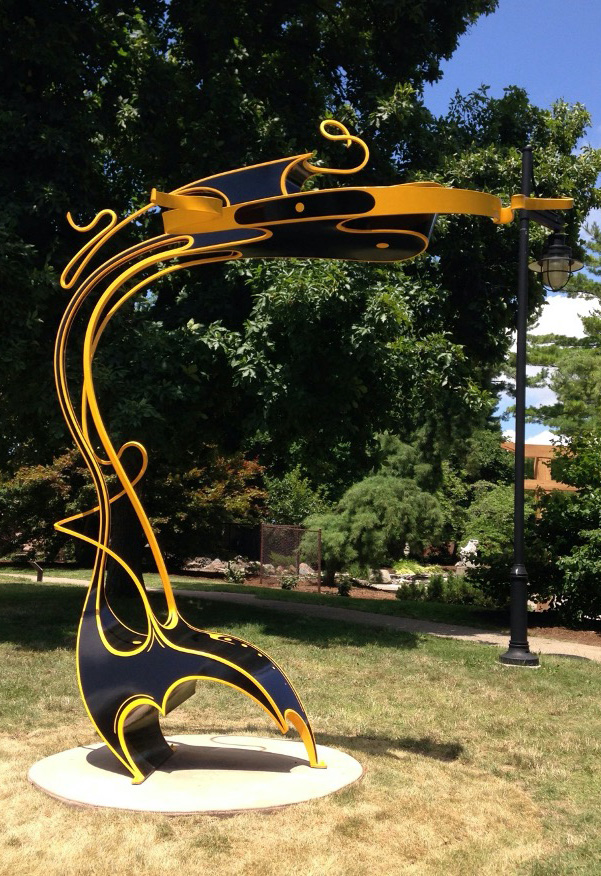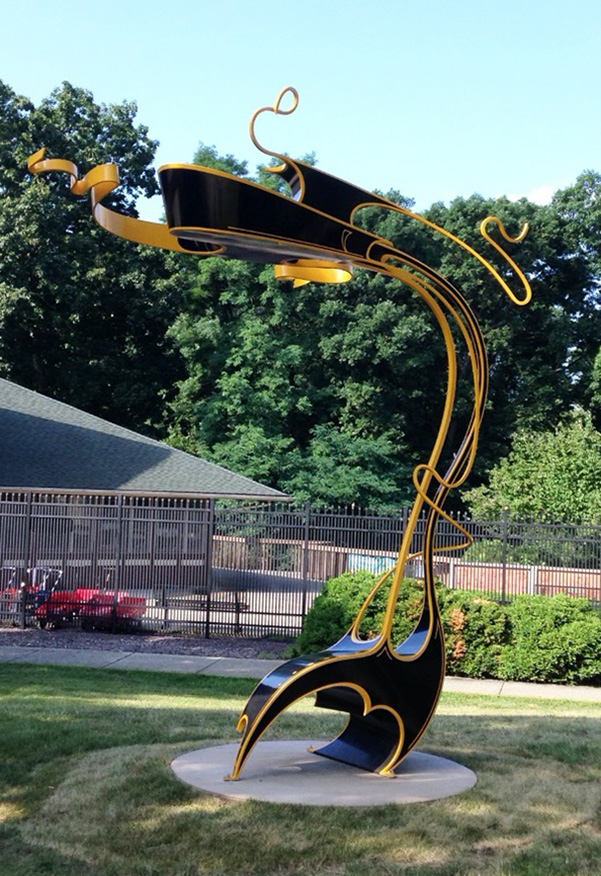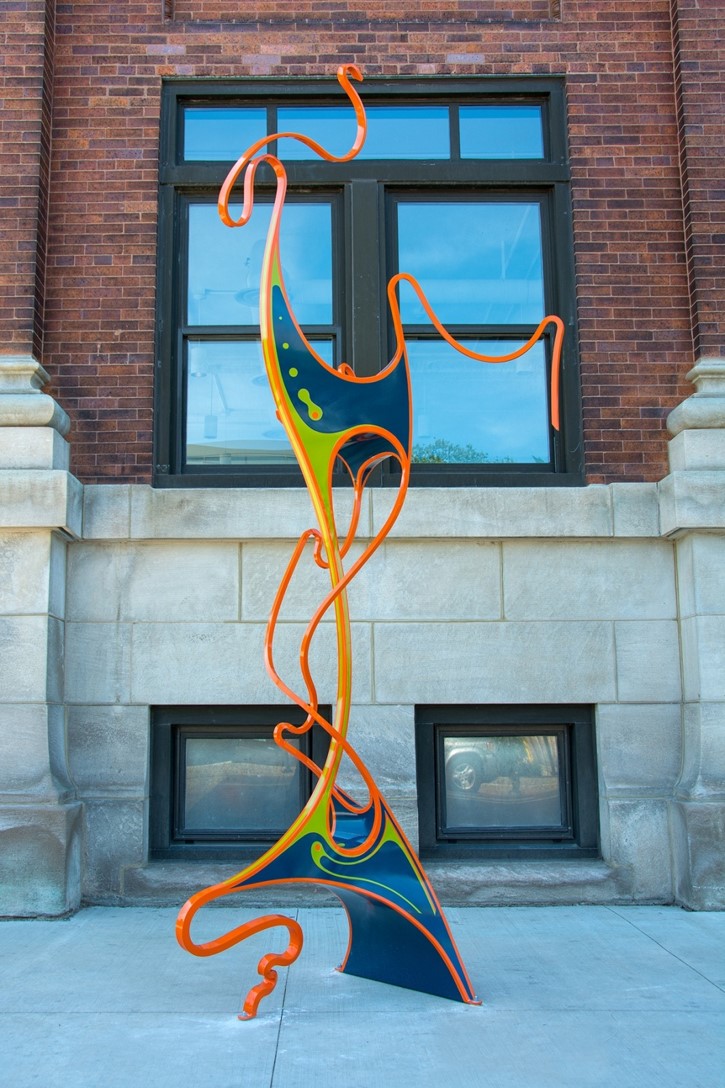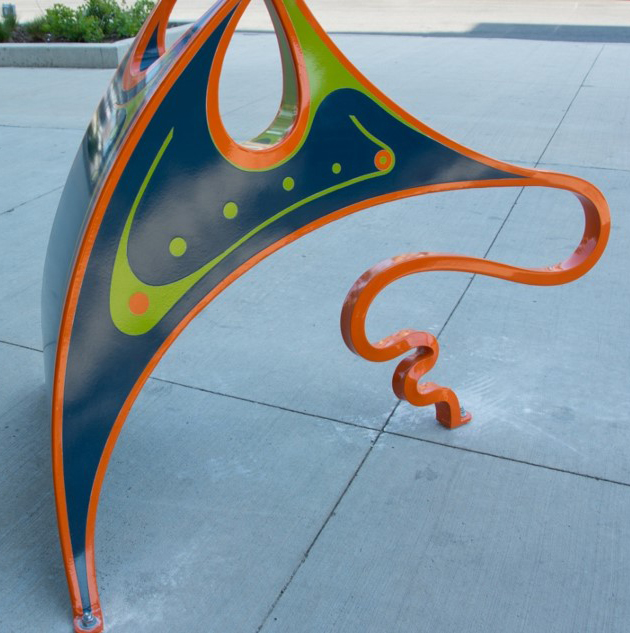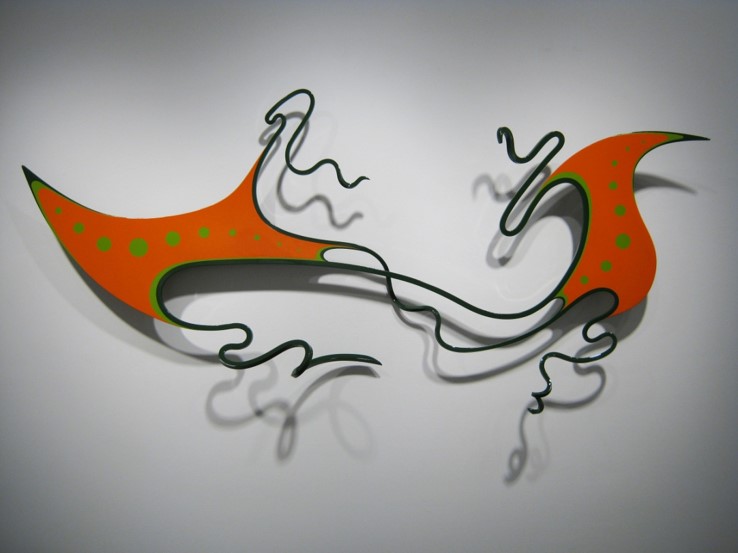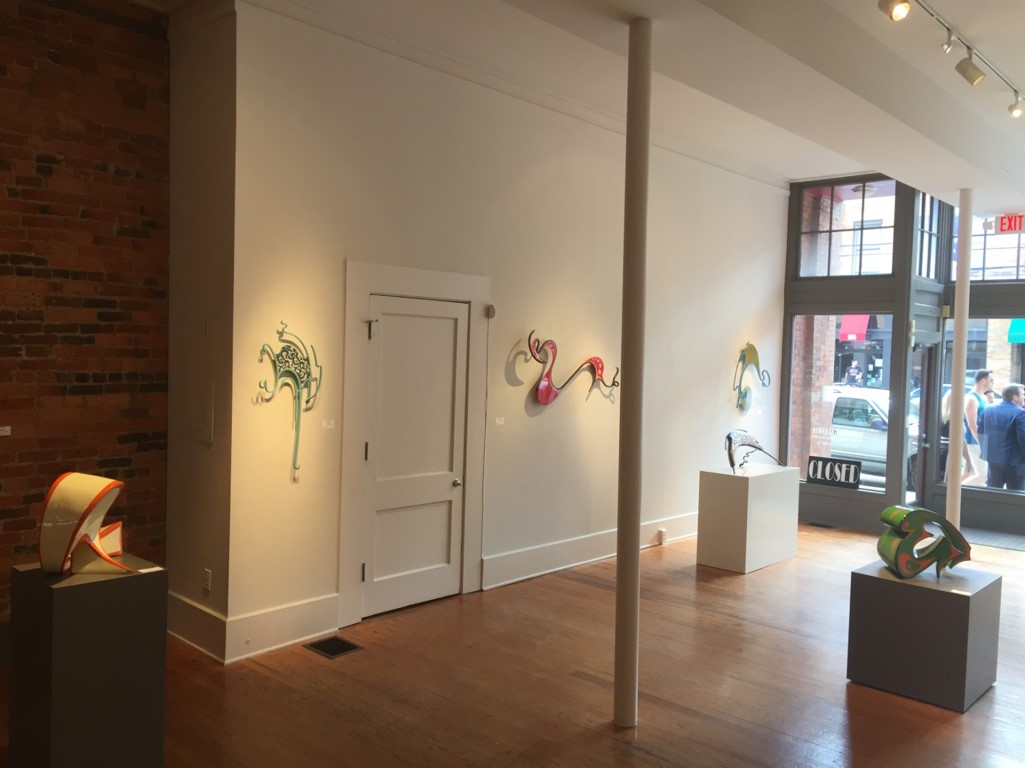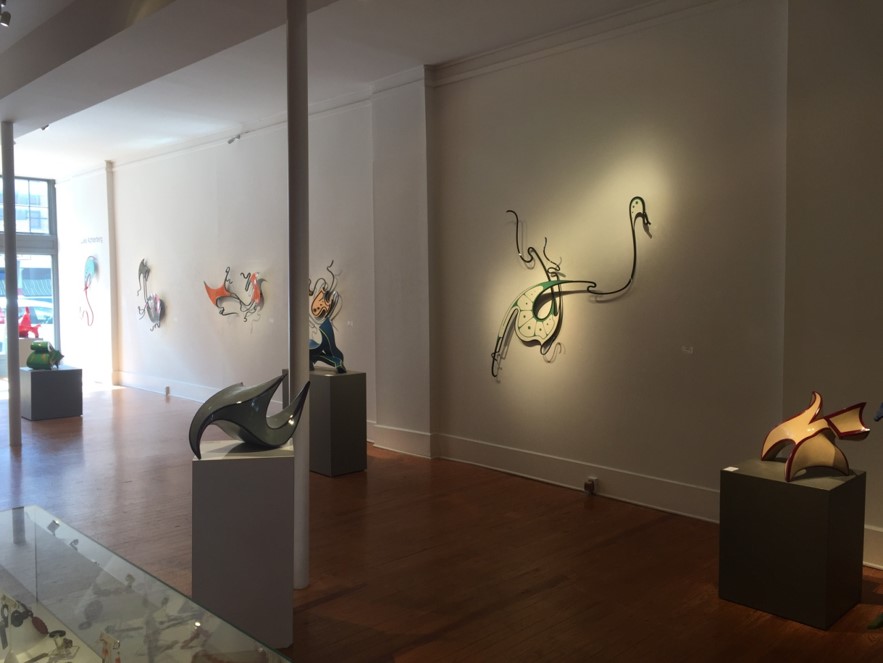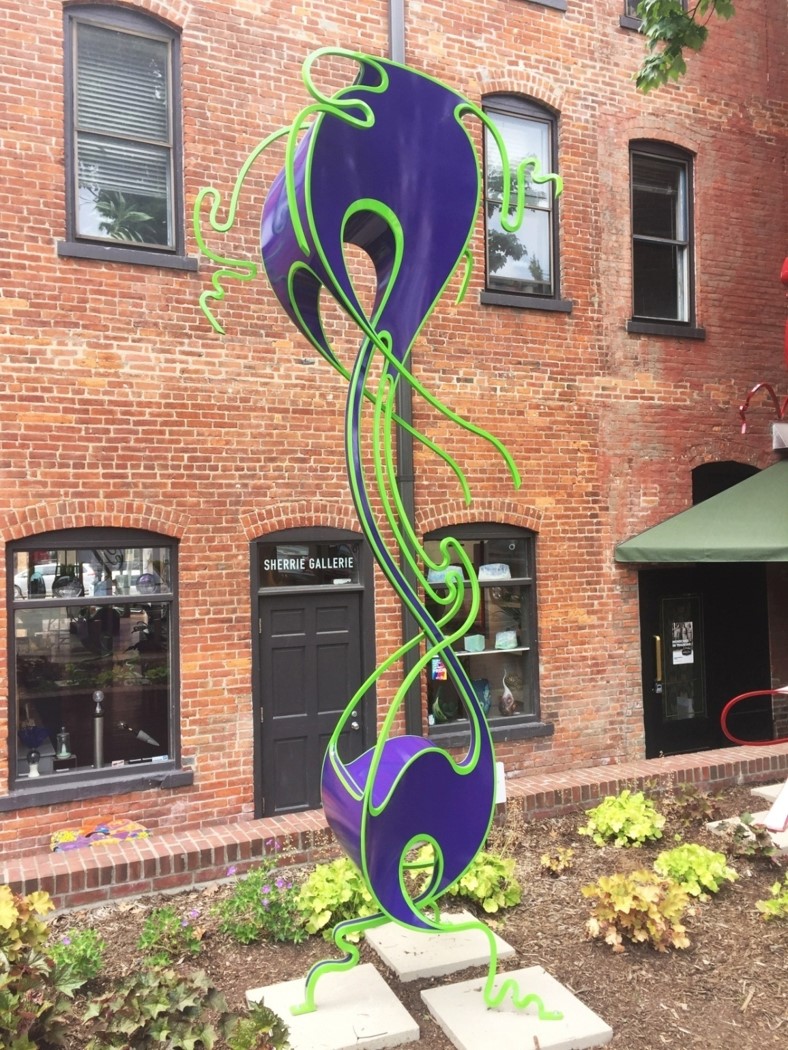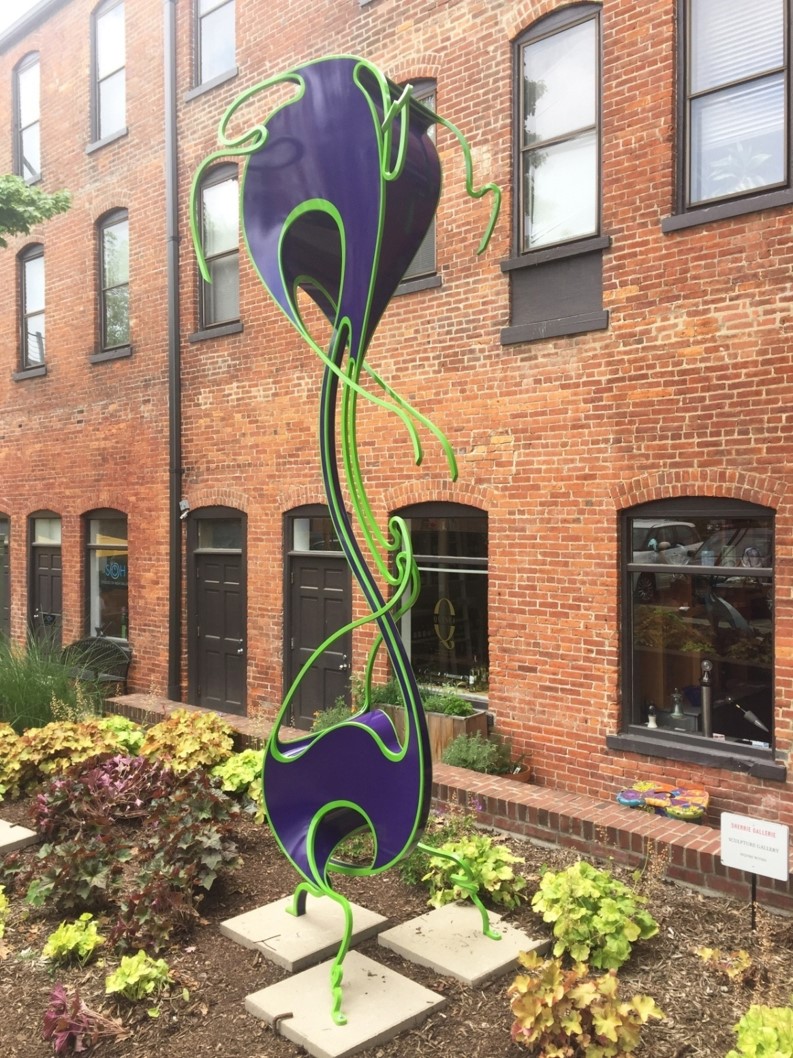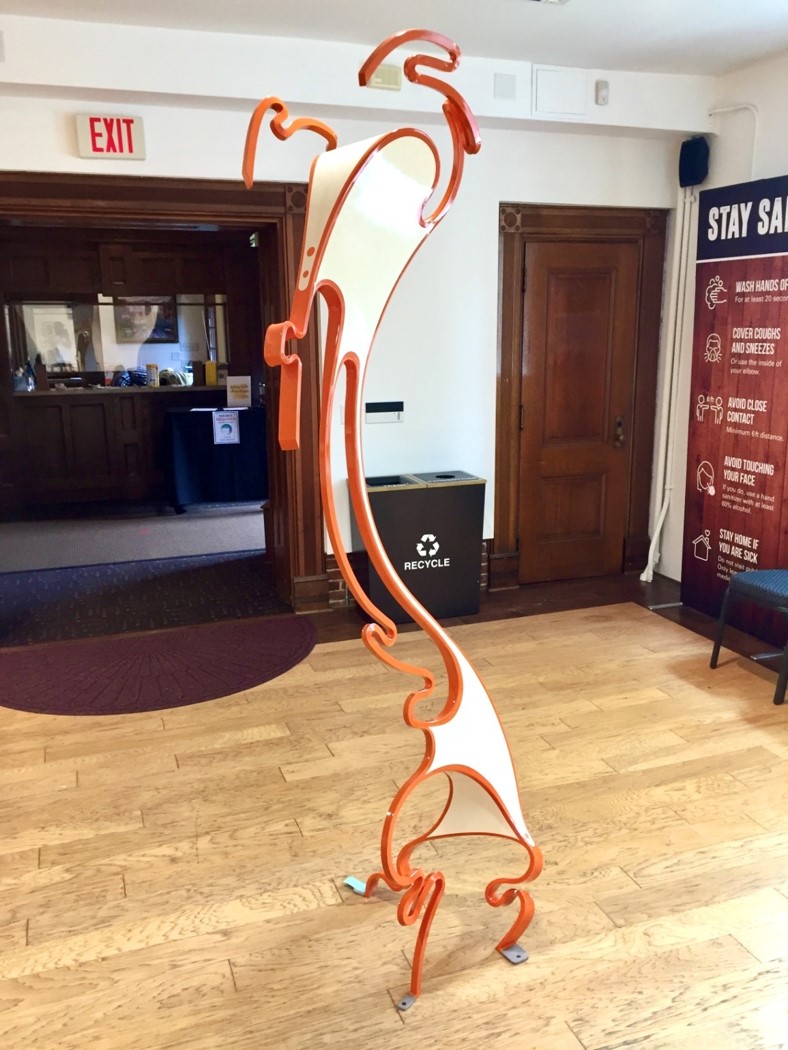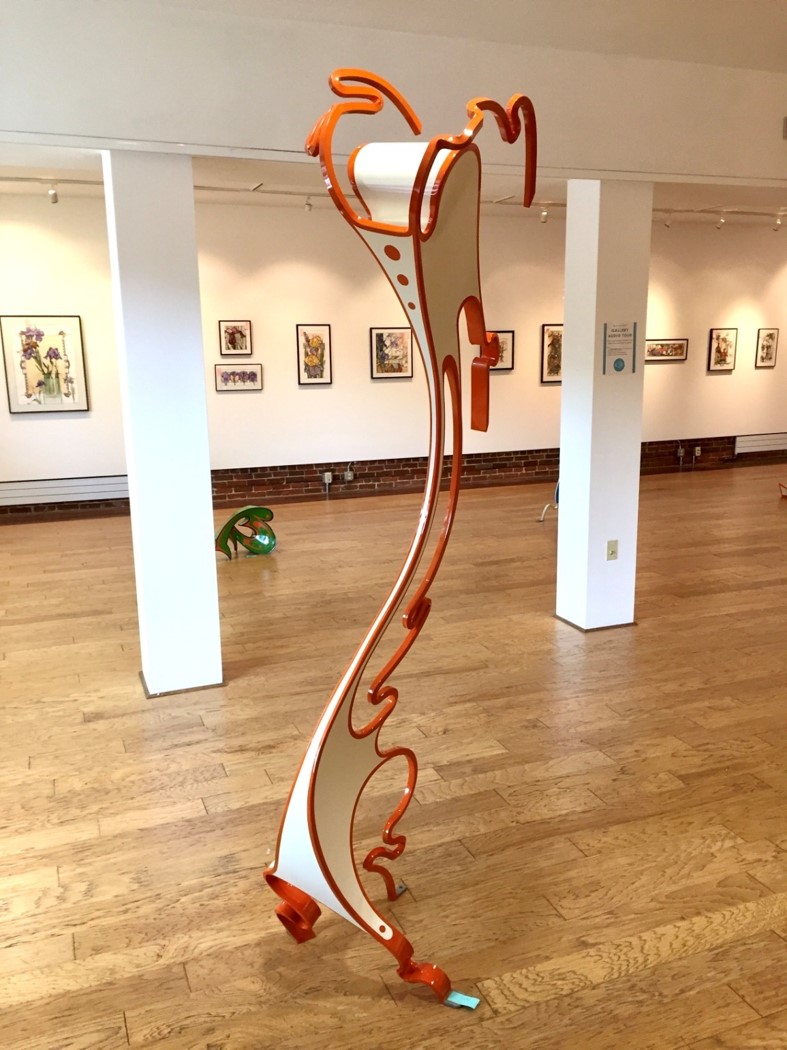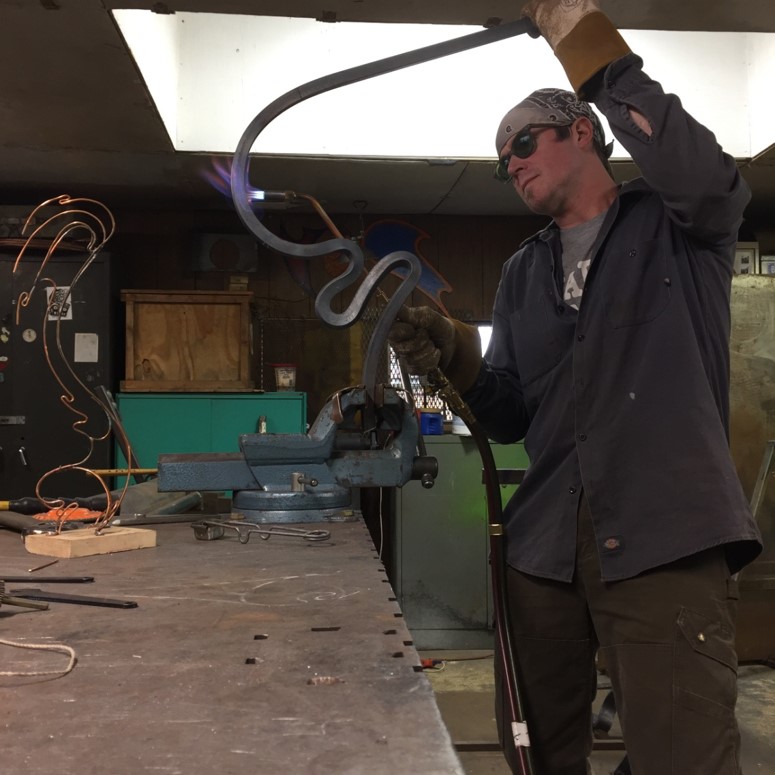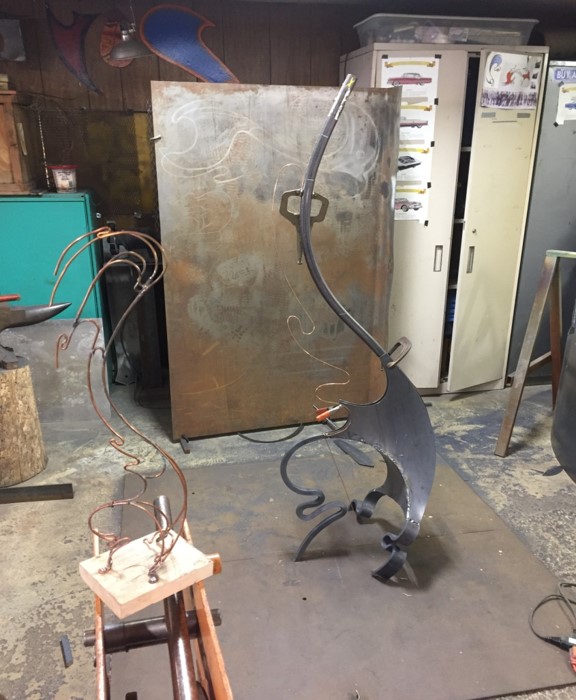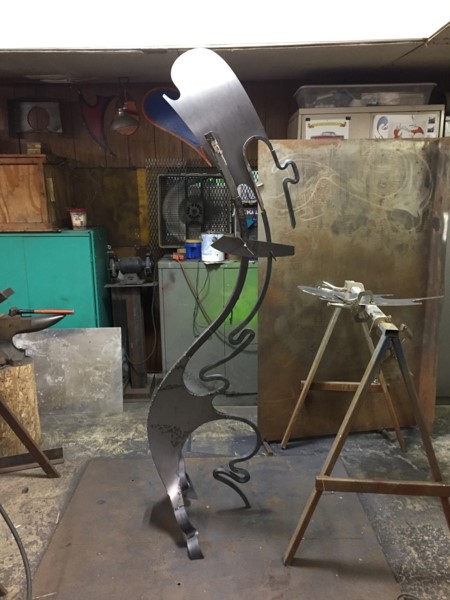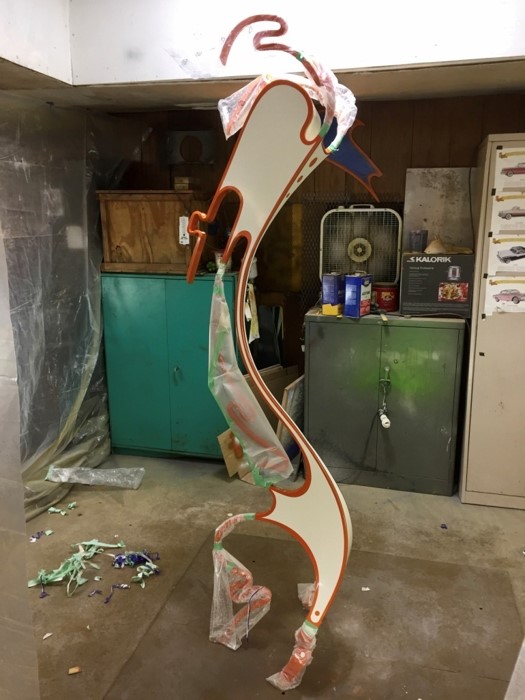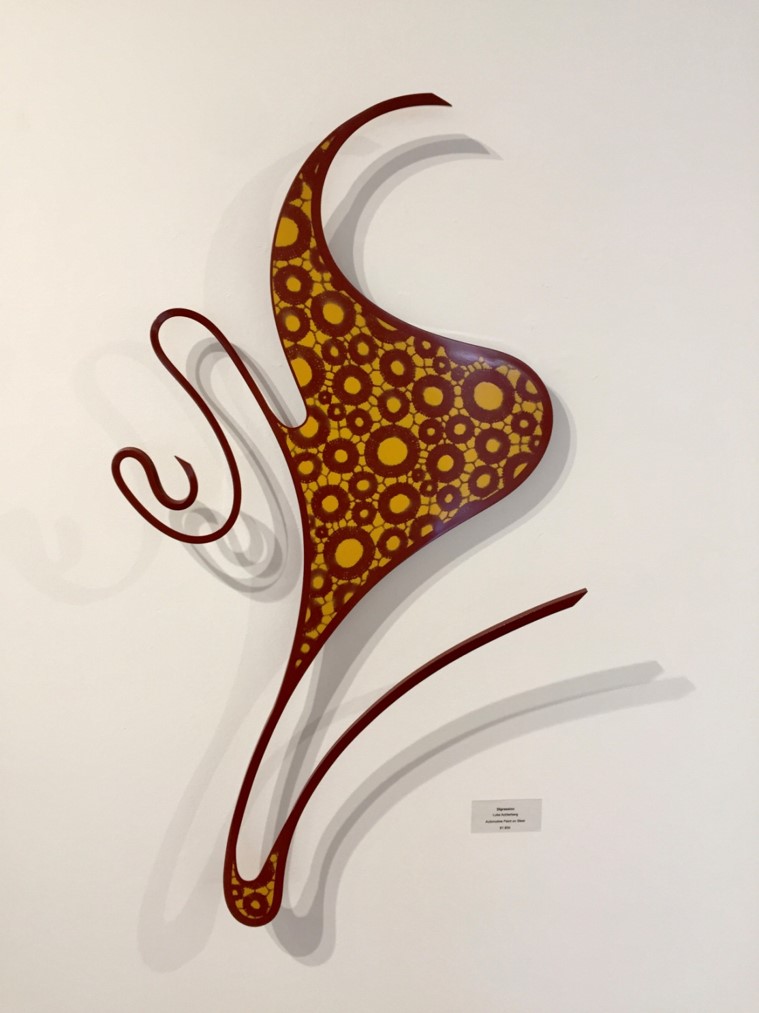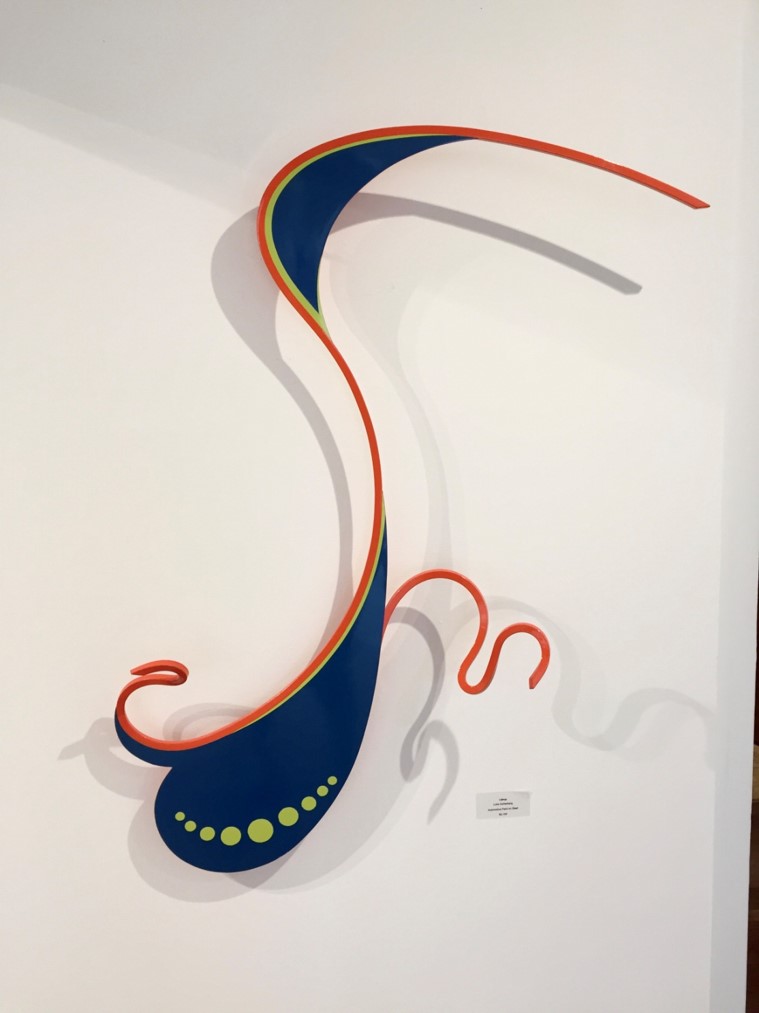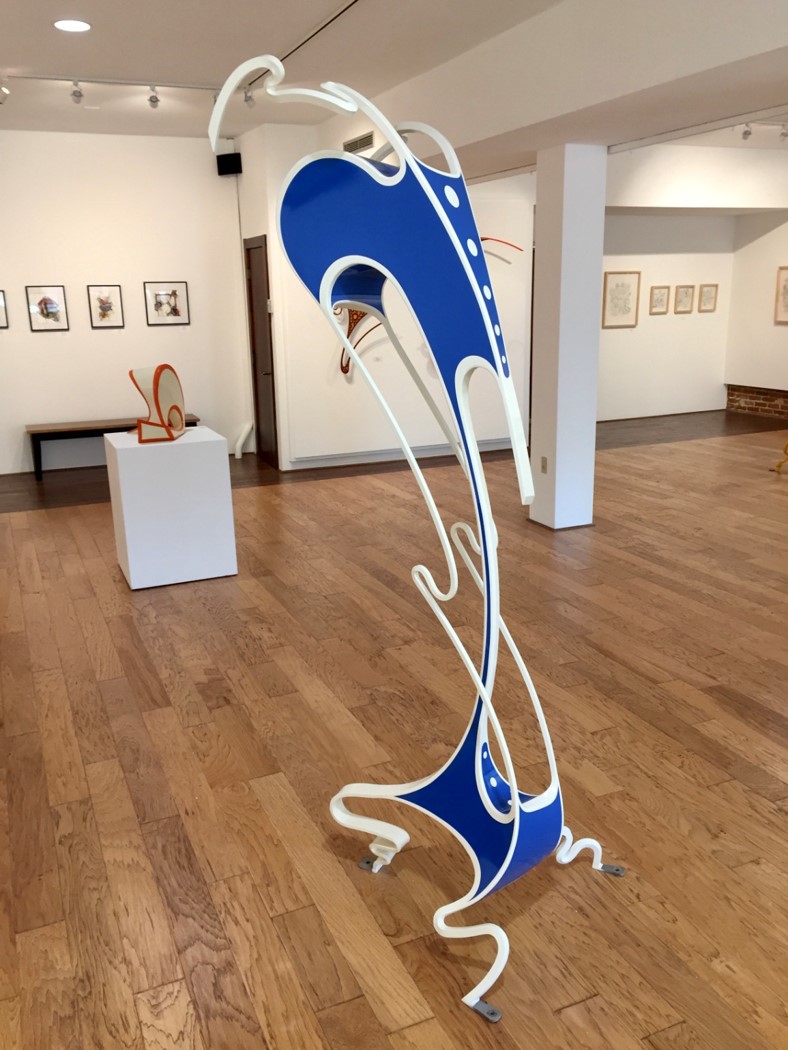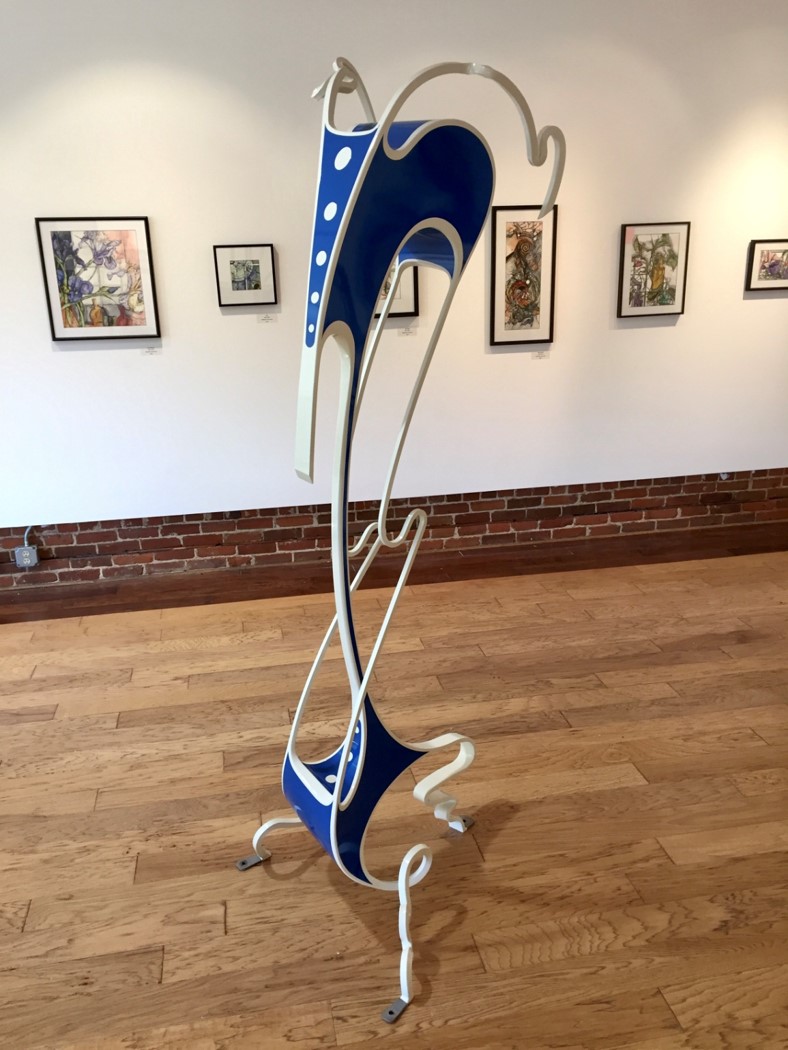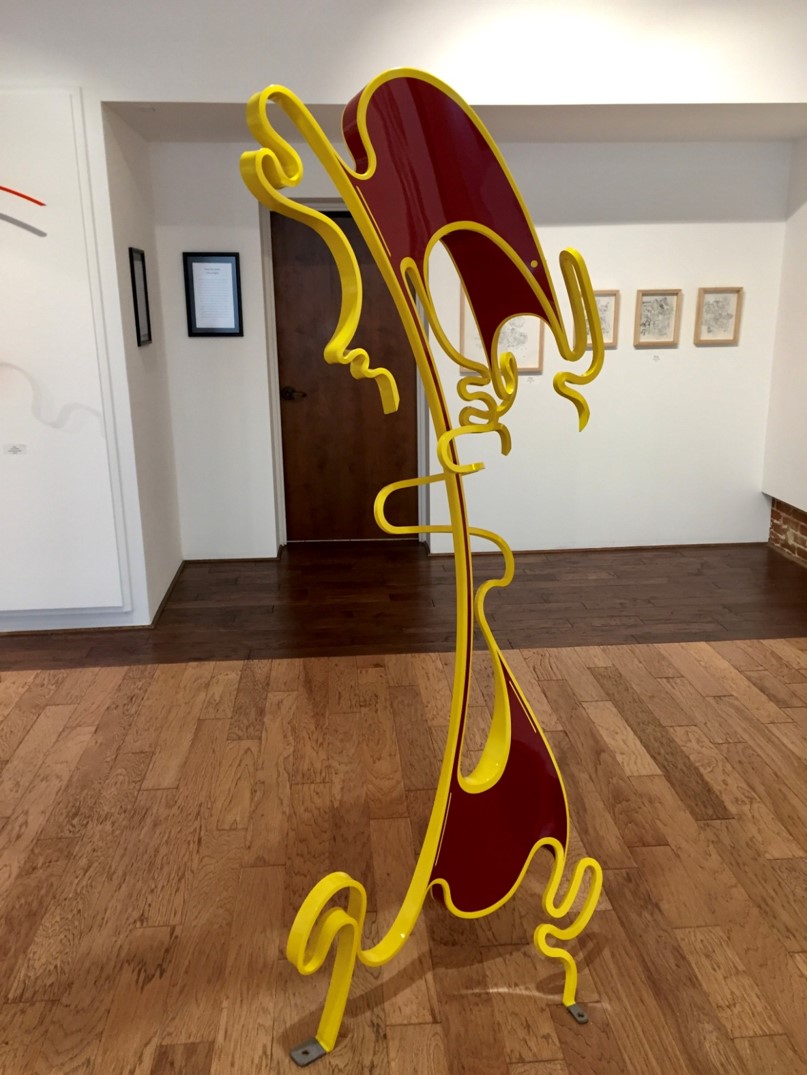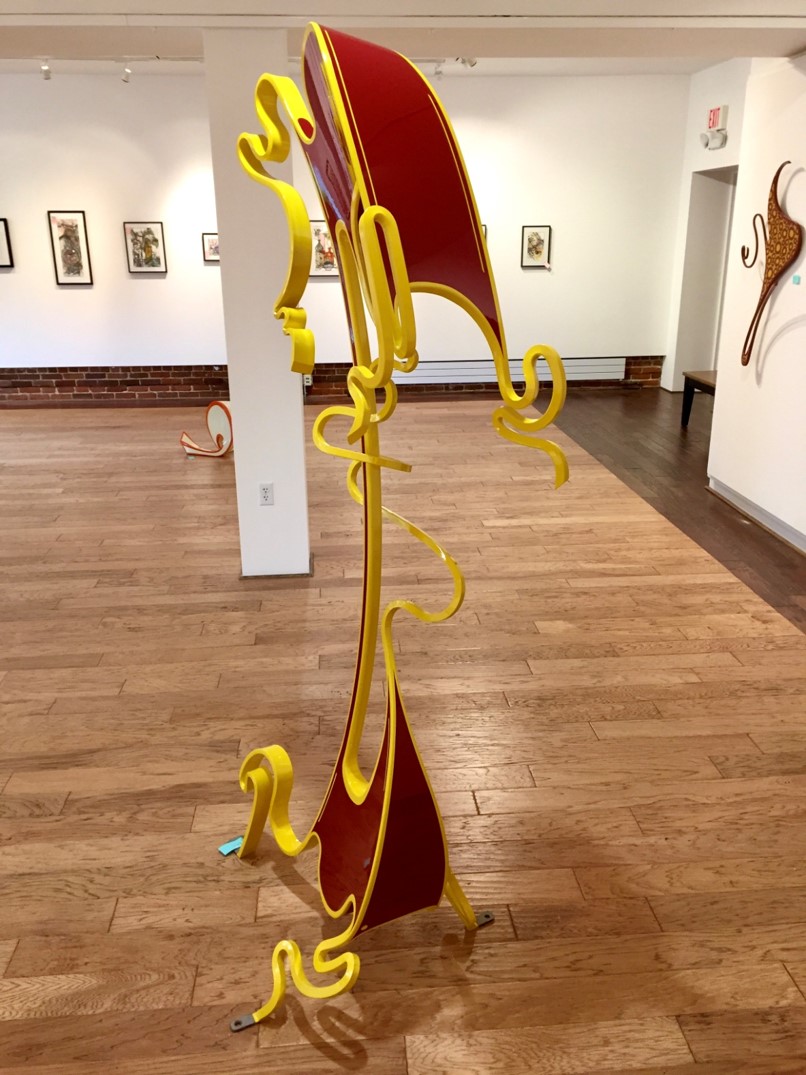Welcome to the virtual Gary L. Freeburg Gallery.
Joe Kashi, Searching for Authenticity
Biography
Joe Kashi is a Soldotna, Alaska trial attorney who received his BS and MS degrees
from MIT in 1973. While at MIT, he “casually” studied photography with prominent fine
art photographer and Aperture founder Minor White. He received his JD degree from Georgetown University Law School in 1976 and has practiced law on the
Kenai Peninsula since 1977. This show is his twenty-fourth solo gallery exhibit. He
particularly thanks his wife, Terese Kashi, Ph.D. for her encouragement as well as
Kenai Peninsula College for this exhibit opportunity.
Artist Statement
This exhibit is my first attempt to address a long-standing personal question: why
do some photographs and other visual images linger in our memories, continuing to
engage us and resonate emotionally, while other images fade away? What differentiates
straightforward documentation from a “work of art”? Many would respond to both questions
by citing a sense of emotional “authenticity”.
Personally, I believe that to be “authentic”, images in all visual media should emotionally
move us by conveying an intuitive sense of “real” experiences, perceptions, and emotions,
rather than of contrivance for effect. Ideally, they allow viewers to vicariously
experience some of the image maker’s original experience and reaction to the subject,
even if some levels of that initial experience were not then evident when the photograph
was taken. Further, an image with some sense of abstraction, incompleteness, or ambiguity,
rather one that’s overly literal or sentimental, gives viewers the space to project
their own memories, experiences, and emotions into a receptive image, enhancing impact.
I’ve occasionally seen someone stand before an image for a lengthy time, silently
absorbing the experience it evoked. In one instance, Jim Evenson spent several minutes
staring into the fireweed “cotton” photograph that’s part of this exhibit. For myself
in turn, I find that I often return to the Jim Evenson stone lithography print “Off
Ninilchik”, part of KPC’s permanent collection. Looking at Jim’s print of a small
commercial fishing boat fighting big seas in Cook Inlet, I continue to viscerally
feel the fears and exhilaration of commercial fishermen like Jim fighting to survive
in small boats.
The photographs chosen for this exhibit vary visually and in choice of subject. I
hope, though, that they fit together visually while sharing the common thread of evoking
a sense of “authenticity”. To fit my own rough “authenticity” criteria below, I have
selected only photographs which I made at least a year ago, which continue to evoke
for me a continuing personal attraction, and which have been selected by others for
juried shows or curated collections. Thus, you may have seen some of them previously
other contexts.
Images are not titled, in order to also the viewer to more personally experience
them. Some thoughts about practical image-making and curation follow these images.
Joe Kashi, 2021
Soldotna, Alaska
Some Practical Considerations
Although “authenticity” seems difficult to define with any precision and philosophers
have debated the concept for centuries, some practical considerations may help when
making and curating images. My take:
- Does an image initially engage both the maker and viewers visually?
- Is the image the “strongest way of seeing” a particular subject, i.e., effective composition?
- Does it evoke the subject’s essential reality, the “rockiness” of the rock, to use
Edward Weston’s example?
- Does the image share spontaneous and worthwhile perceptions and emotions of a moment
captured in time and brought to successful completion, or is it banal, affected, or
pretentious?
- Does an image capture and impart to both its maker and to viewers a vicarious sense
that the image truthfully reflects “real” perceptions, experiences and reactions,
or does it feel labored, contrived, clichéd, or hollow?
- Does the image initially strike an intuitive/emotional resonance with both the maker
and at least some viewers?
- Does the image still resonate emotionally upon re-viewing months and years later?
- Put another way, does the image and what it conveys feel honest, genuine, and timeless?
- Does the image allow viewers room to project their own memories, emotions, and experiences,
finding their own meanings?
- Does the image speak for itself, showing conceptual clarity of vision and of purpose,
not needing a lot of words?
Tedd McDonah
Biography
Tedd comes from a small Wisconsin town, but with him comes both a large appetite for
creativity and a passion for teaching. Tedd’s academic artistic training came from
the University of Wisconsin - LaCrosse, and Arizona State University; BS in Art (’96),
and MFA (’01). Tedd’s work speaks of the rural nature of his midwest upbringing, and
his appreciation of the outdoors. McDonah’s work features techniques that bridge conventions
found within the disciplines of blacksmithing, non-ferrous metalsmithing, and jewelry-making.
He currently teaches jewelry and blacksmithing classes at Rowan University in Glassboro,
NJ, and Bryn Athyn College in Bryn Athyn, PA, respectively.
Artist Statement
For years now, my artwork has been a working hypothesis to provide a outlet for something
that I’ve always had a hard time explaining with words. As a viewer might expect to
hear or read: “Tedd McDonah’s work is all about fishing.” However, it is not.
I’ve come to embrace the fact that the impact of my rural upbringing and surroundings
will never completely be gone from the place in my psyche from which my ambition and
creativity stem. The trees, brush and weeds, the old, rusty, farm equipment that dotted
my parents and grandparents property, the neighbors’ dairy farms, the country roads,
the small towns, the lakes, the rivers, the bluffs, etc.; the places/locations I played
as a child, were my art museums and aesthetic developers. One of my grandfathers,
and my dad, were a farmers, trappers, fishermen, and general outdoorsmen, they were
fantastic role models to help shape my future. My dad was also a biology teacher,
before his untimely death in 1978.
Early on in my student metal working days I thought jewelry making was going to be
my future, but then something significant happened - I made a jewelry/fishing lure
mash-up as a tongue-incheek, one-off endeavor. I’ve now been following a path that
I’d never considered I’d be on. It to bring me back into touch with the desire to
experience the outdoors - which, over time, I’d not noticed how much I’d lost touch.
My ‘Lure’ body of work tries to capture qualities of ‘Americana,’ kitsch, outsider
/ folk art, and craft, that speaks of, or has a very different meaning among those
who have an interest in fishing, as well as, to those who do not. At the core of all
art, there is a humanistic nerve that drives artists to do what we do. My art explores
ideas of: patience, temptation, impulse, the notion of preciousness vs. non preciousness,
emotional connectedness, emotional attachment, excitement, disappointment, solitude,
skepticism, story telling, teaching, leadership, envy, competition, and friendship.
Tedd McDonah
Original Recyclures,
copper and litho-printed steel (tin cans), group sizes vary, individuals 4" X 1" X
1"
Twitch 'n' Pause - Jerkbait Survey
turned & pigmented wood, sterling silver, jade, onyx, sizes vary, approx 8" X 2" X
1”
Spin 'n' Sputter / Lures
turned dyed woods, jade, sterling silver, copper, sterling silver/copper mokume-gane,
copper/nickel/brass mokume-gane, white-tail deer hair, brass, stainless steel, glass
beads, Top: 9" X 2" X 1" Bottom: 6" X 3" X 1”
Allure(s) / Moku-spoons
copper/nickel/brass mokume-gane, brass/nickel mokume-gane, copper, vitreous enamels,
5" X 1" X 1”
Moke-a-bou / bucktail-style inline spinner
copper/nickel mokume-gane, sterling silver, nickel silver, garnets, marabou, copper,
vitreous enamel, 9" X 2" X 2”
JD .30 - .30 / bucktail-style inline spinner
litho-printed steel, copper, brass cartridge, nickel silver, marabou, 9" X 2" X 2”
Twitch 'n' Pause
turned and painted wood, glass eyes, sterling silver, approx 8" X 2" X 1
Twitch 'n' Pause / Embarrass Red
turned dyed and pigmented wood, jade, sterling silver, 6" X 2" X 1”
Dirty Cake Crunch Top Water
turned and painted wood, copper, plastic eyes, brass, stainless steel, 10" X 3" X
1”

Allure / Lake Marm
copper/nickel/brass mokume-gane, sterling silver, simulated cameo,
5" X 1.5" 1.5”
Original Recyclures / Recyclure
copper, tin can, 4" X 1" X 1”
Original Recyclures / Recyclure
copper, tin can, 4" X 1" X 1”
Original Recyclures / Recyclure
copper, tin can, 4" X 1" X 1”
Original Recyclures / Recyclure
copper, tin can, 4" X 1" X 1”
Moku-spoon
copper/nickel/brass mokume-gane, copper, nickel silver, copper, vitreous enamel, peridot,
4" X 1" X 1"
Moku-spoon
copper/nickel mokume-gane, copper, vitreous enamel, 6" X 1.5" X 1.5"
Lurewelry
forged and fabricated sterling silver, simulated cameo, 5" X 1.5" X 1.5"
Jolly Good Recyclure
copper, vintage soda pop can - sour pow'r, 4" X 1" X 1"
Polkalure
sterling silver, copper, vitreous enamels, freshwater pearl, 3" X 3" X 1/2"
Bubblegum Shiner
copper/nickel/brass mokume-gane, sterling silver, moonstone, laminated canvas,
4" X 3" X 1/2"
Enamellures
copper, vitreous enamels, tin can, 4" x 1" X 1"
Large Mouth Bass on Salsa Recyclure / Fish taco recipe
copper, salsa jar lid, nature.
Lunker northern on Embarrass Red
Artist with brooch. (El Hombre Muertos)
James Viste
Biography
James Viste was raised on a farm in Wisconsin. He received a bachelor’s degree from
the University of Wisconsin-La Crosse and a master of fine art degree from Cranbrook
Academy of Art in Bloomfield Hills, Michigan. He is a nationally known blacksmithing
demonstrator and exhibitor and has participated in several national Ironwork Restoration
Projects, including at Cranbrook Educational Community, The Charles Lang Freer House
and The Detroit Institute of Arts. He has worked for studios in Minnesota, Wisconsin,
New Mexico and Michigan. He is currently the Manager of Edgewise Forge LLC in Sturgeon
Bay, Wisconsin.
Blades 2012-2021
Honey Comb
pattern welded steel, Schibuichi, plastic, resin
2 x 9 x ½”
2012
White Cylinder Pile
pattern welded steel, Schibuichi, plastic, resin
2 x11 x ½”
2012
Baby Cakes
pattern welded steel, Schibuichi, plastic, resin
2 x13 x ½”
2012
RLR Blades
pattern welded steel, Schibuichi, blue thread, resin
2 x 12 x ½”
2014
Secret Blue
pattern welded steel, Schibuichi, paper, resin
2 x 9 x ½”
2015
White Line NM
pattern welded steel, Schibuichi, plastic, resin
2 x 9 x ½”
2015
Credit Due
pattern welded steel, Schibuichi, credit card, resin
2 x 10 x ½”
2016
Silver Back
pattern welded steel, Schibuichi, reflective tape, resin
2 x 10 x ½”
2016
Green Back 1
pattern welded steel, Schibuichi, dollar bills, resin
2 x 10 x ½”
2016
Lines and Ribbons
pattern welded steel, Schibuichi, reflective tape, resin
2 x 10 x ½”
2017
Lines and X Grinds
pattern welded steel, Schibuichi, bamboo, resin
2 x 9 x ½”
2018
Shavings of Plastico
pattern welded steel, Schibuichi, plastic, resin
2 x 10 x ½”
2018
O-range
pattern welded steel, Schibuichi, plastic netting, resin
2 x 10 x ½”
2018
Fordite For A Friend
pattern welded steel, Schibuichi, fordite
2 x 9 x ½”
2018
Glen and Nancy
pattern welded steel, Schibuichi, plastic netting, resin
2 x 10 x ½”
2020
Ol’ Reliable
pattern welded steel, Schibuichi, canvas, blue dye, resin
2 x 8.5 x ½”
2020
Five
pattern welded steel, Schibuichi, ink on paper, resin
2 x 9 x ½”
2020
The Trio
pattern welded steel, Schibuichi, plastic netting, thread, resin
2 x 9 x ½”
2020
A Couple
pattern welded steel, Schibuichi, silk cloth, resin
2 x 11 x ½”
2021
Thomas Chung
Biography
Thomas Chung was born in New Jersey and grew up in New York City and Hong Kong. He received his BFA from the San Francisco Art Institute in 2010 and his MFA from
the Yale School of Art in 2013. He has participated in numerous group and solo shows
throughout the United States. His interdisciplinary work has been featured on PBS
and written about in Modern Painters, Art in America and the New Yorker. Chung has
lived in Anchorage and has been teaching at the University of Alaska Anchorage for
the past six years.
Artist Statement
In the Buddhist Mahayana worldview, anything can teach wisdom. A slug can be a buddha,
a sleazy advertisement or black eye can wake you up to the truth.
The name of this exhibition refers to a well-known Zen koan that if you ever meet
the Buddha, you should kill him. This refers to the fact that true wisdom arises from
within and cannot be taught from another person.
These paintings also represent a visual journey that occurred in tandem with my family
rediscovering Buddhism after generations of assimilation and the loss of our cultural
heritage through war, xenophobia, and colonization.
Thomas Chung
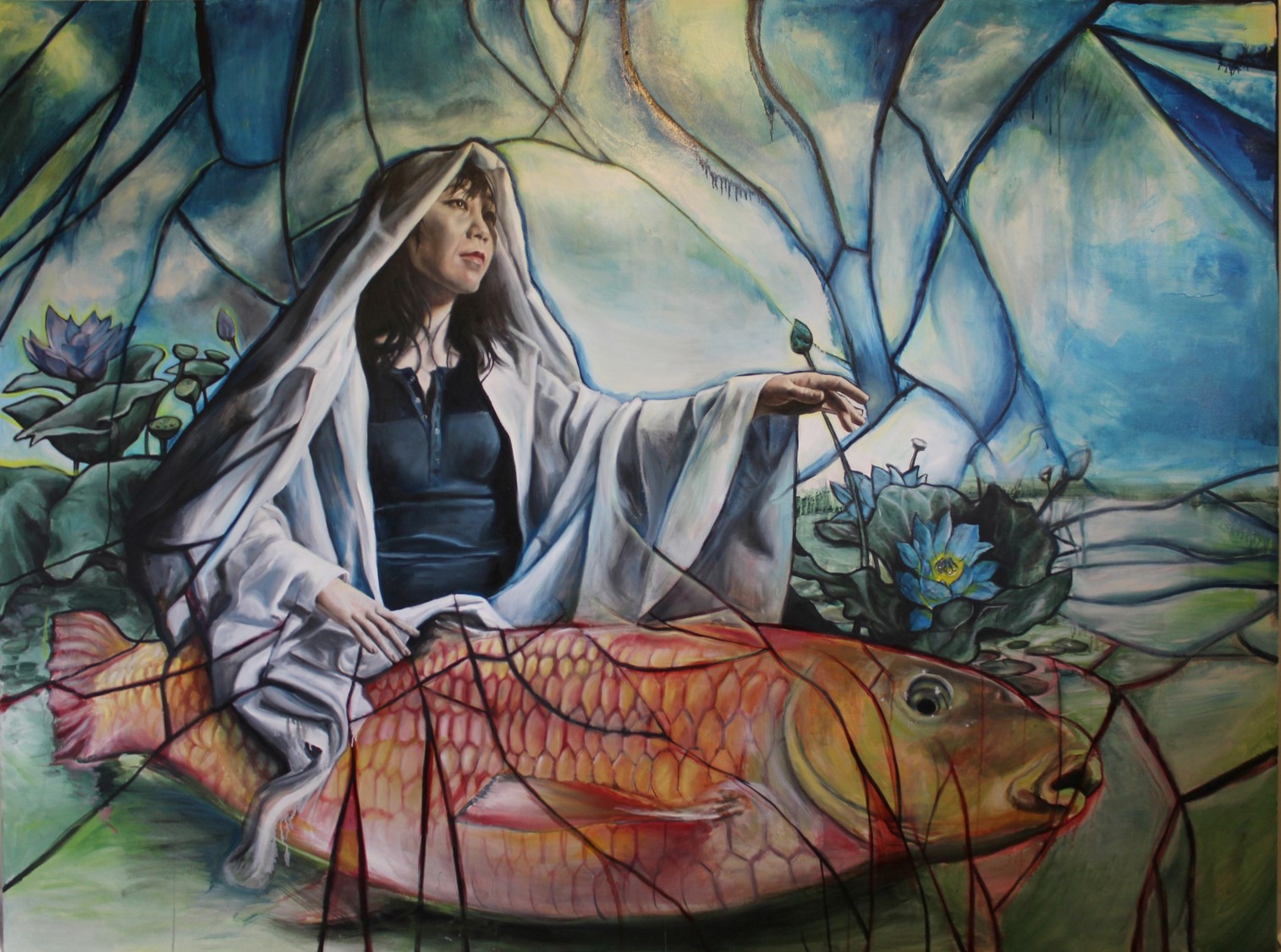
“Delicate Fingers” Acrylic and Oil on Canvas 72”x60” 2018
This work represents the colonization and decolonization that has taken place in my
family. Before my great grandparents and grandparents immigrated from China to the
United States as refugees of war, the process of colonization had already affected
my family severely. My great grandmother used to hide her Buddhist devotion from my
great grandfather, a Christian minister. She hired neighborhood children to alert
her when he was coming so she could hide the Buddha statue. Holding on to Buddhism
became impossible once in America. My ancestors assimilated and abandoned our cultural
roots because they had no other choice. To fit in they spoke English, wore Western
clothes and participated in Western culture. By the time I was born in 1988 barely
a Chinese word or story was passed on to me. As assimilation shifts to inclusivity
in this country, Buddhism has returned to my entire family one by one and we have
begun to heal.
This painting is my take on an American Guan Yin, the Chinese goddess of mercy. My
grandmother carried a glass statue of Guan Yin when she immigrated to America. She
told me that she never put the statue down the entire voyage, because the fingers
were so delicate she was afraid they would break. In this painting I have visually
shattered the entire image to represent the period of near total loss of religion
and culture in my family.
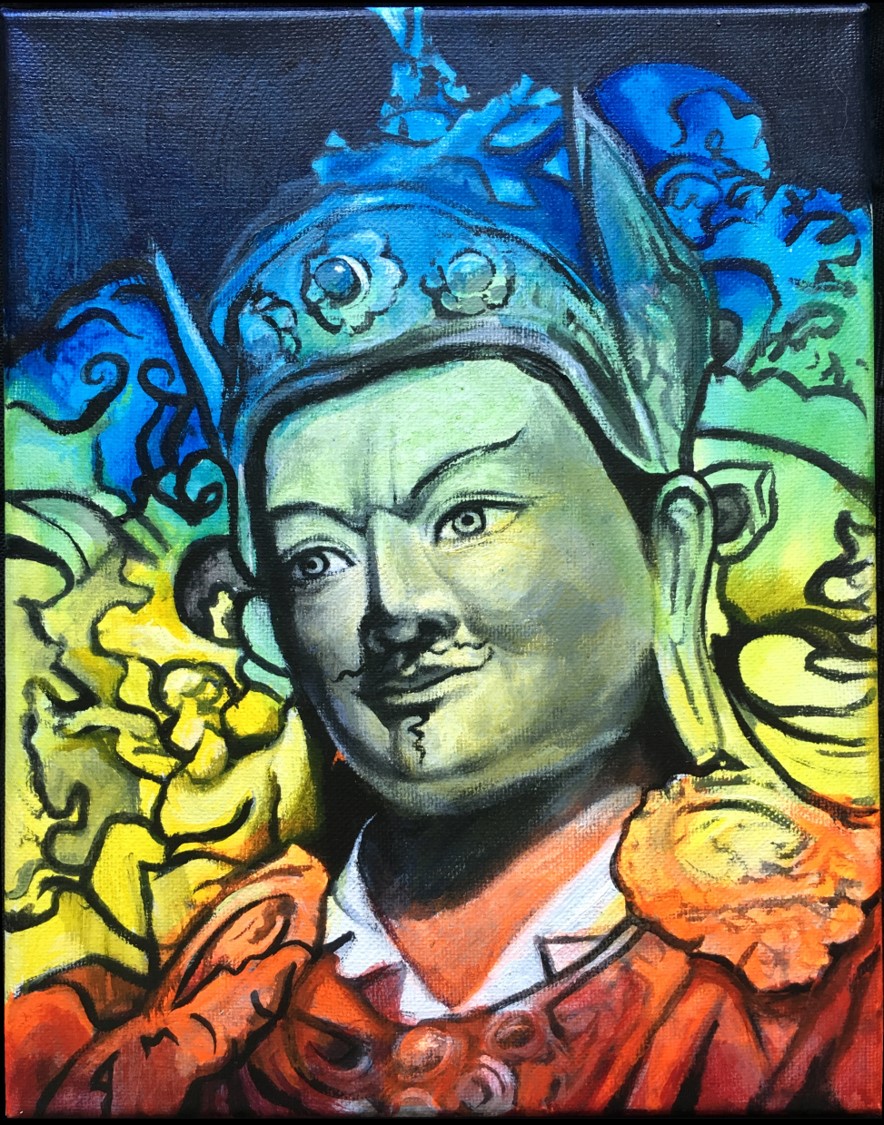
“Guru Rinpoche” Acrylic on Canvas 10”x8”
This painting is my interpretation of Guru Rinpoche, the legendary individual attributed
to bringing Buddhism to Tibet. Buddhism was nearly wiped out in India where it originated,
but the texts were faithfully protected in Tibet in large part due to his efforts.
I believe Buddhism represents a wonderful example of cultural exchange. The imagery
of Buddhism shifted as it traveled to different countries and continues to shift and
reflect the people devoted to the philosophy.
My mother was raised Catholic and had to learn Chinese in college. In late life she
dedicated her life to Tibetan Buddhism, and I followed her. We are practitioners of
the Nyingma School of Tibetan Buddhism. I made this painting for her, of her favorite
deity considered to possess a rainbow body. Paintings like this are undoubtedly American
permutations of Buddhist imagery. While I obtained permissions from my Tibetan teacher
to use the symbols and images found in traditional Tibetan Thangkas, I interpret and
fuse the traditional motifs with Western painting gestures such as this rainbow color
scheme and use of a sculpture as model.
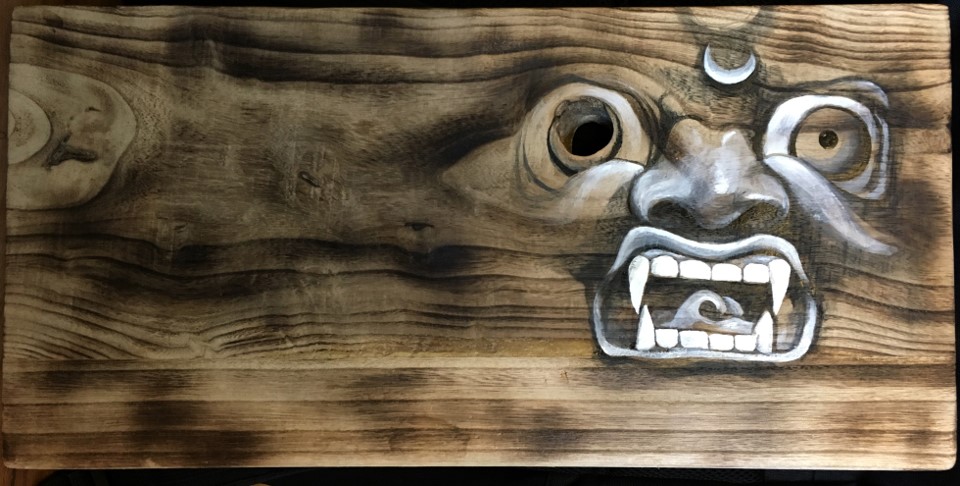
“Mara” Latex Paint on Wood
Dzongsar Jamyang Khyentse Rinpoche once said that loneliness and suffering are a result
of positive virtuous actions that have carried over from a past life. The suffering
is a blessing because it is the main cause for an individual to wake up to the truth
of existence and the world. One who never suffers is one who is blind and asleep,
never having to ask questions or go deeper. One who never suffers is incapable of
true compassion or empathy, those emotions require knowledge of suffering. The discontent
generated from suffering can be transformed into spiritual fuel in the same way that
a lotus grows out of mud. If I was happy all the time, why would I pray? Why would
I seek God?
This painting is of the Buddhist embodiment of the forces antagonistic to enlightenment,
Mara. Mara was the final obstacle of the Buddha’s enlightenment. The painting also
represents the Buddhist worldview that what we encounter outside of us is a result
of what is happening in our mind, like the scenes we find ourselves in dreams. Fear
outside is merely a reflection of fear from within.
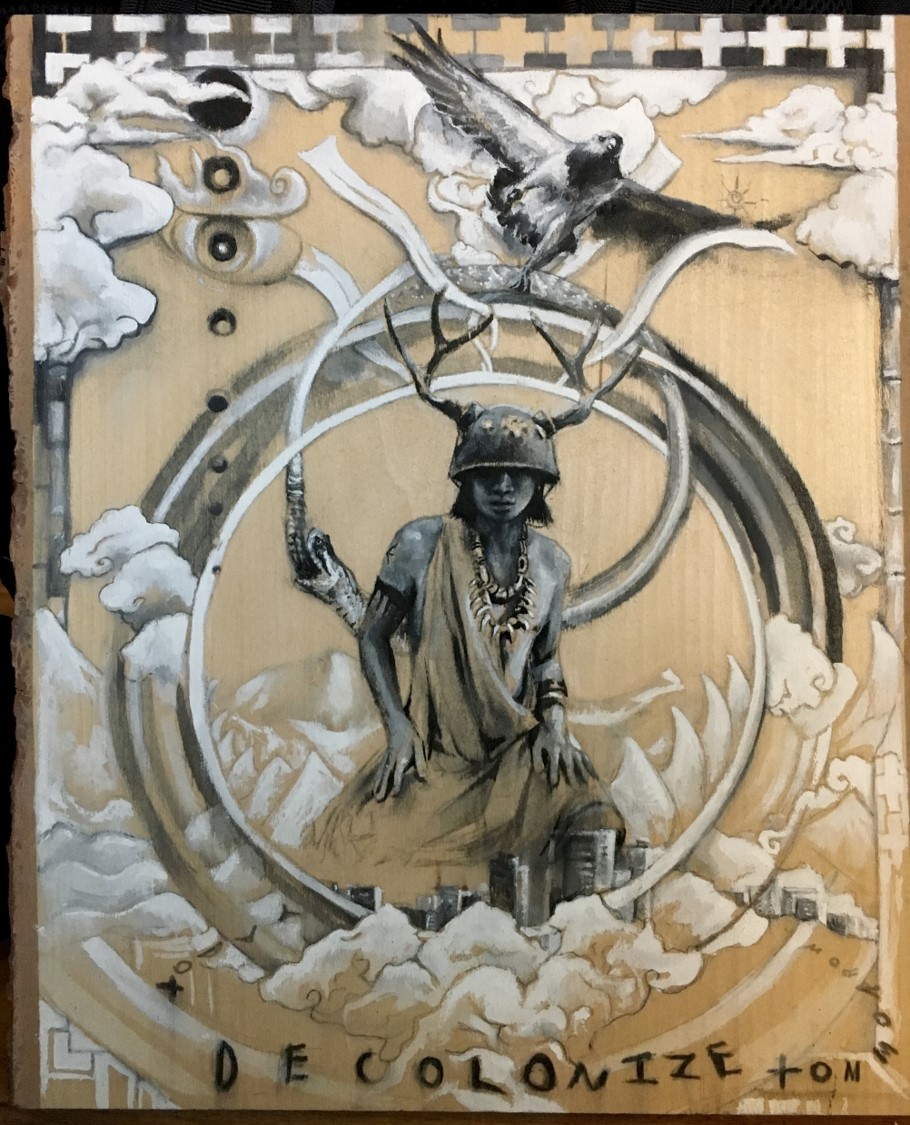
“Grey Rainbows” Acrylic and Graphite on Wood 16”x12”
I grew up in an almost exclusively white suburb of New Jersey that had an informal
‘Whites Only’ policy well into the 1960’s. My mother realized that growing up in the
extreme minority was causing my sisters and me to see ourselves as outsiders, so she
moved us to Hong Kong when I was 11. I spent four years in the British colony before
it was returned to the Chinese. In New Jersey not being white made me feel like a
worthless, undesirable person because of racism on TV and the schoolyard. In Hong
Kong not being white made me feel subhuman because the British established themselves
as rulers there. When I was a teenager I wanted nothing more than to be white because
my race caused me such intense suffering.
I learned about decolonization for the first time when I moved to Alaska six years
ago. The idea of elevating non-Western cultures to the same level as the mainstream
became the most important idea I had ever heard. It has been transformative to heal
my mind, which had absorbed the racism and homophobia I grew up with.
My middle name Pu is the English pronunciation of a Chinese character that means “Oracle”.
Pu is also my mother’s maiden name. It is a remnant of my ancestors' role as oracles
in China. They threw animal bones into fire and interpreted answers from the divine
through the cracks that formed. Pyromancy similarly described took place here in Alaska
by the Athabascans.
This self-portrait shows me dressed as I would be if I were to fulfill oracle duties
today here in America. It represents the break from Western mainstream culture that
had previously filled my mind and colored my identity.
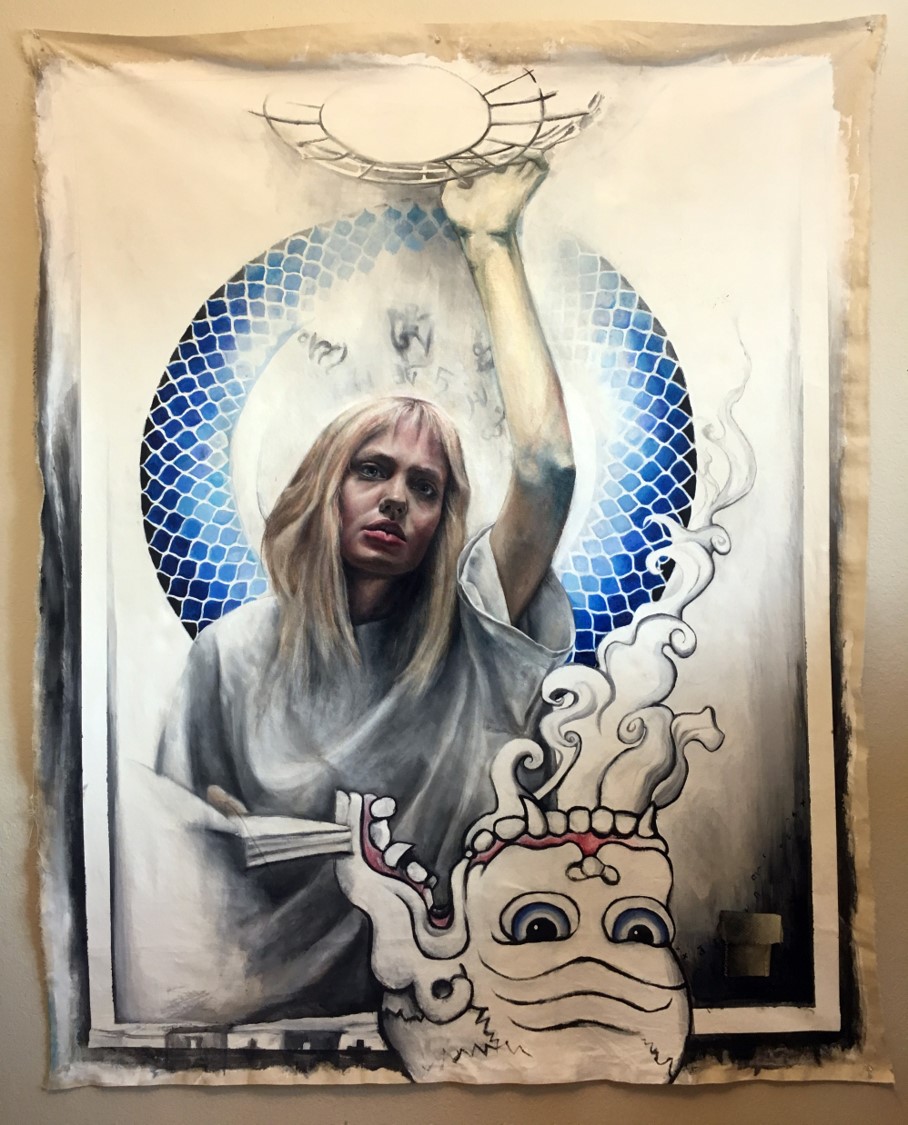
“The Skin Remembers” Acrylic and Oil on Canvas, Salmon Skin Tanned by the Artist Using
Techniques Learned from Athabaskan Artist Joel Isaak at the Alaska Native Heritage
Center. 60”x49” 2019
This painting is a meditation on the healing power of traditional knowledge, and an
example of my attempt at an ethical incorporation of cultural exchange. The blending
of cultural influences in the piece represents a shared heritage of humanity. Within
the salmon skin pouch is a piece of yellow ochre given to me by an Inupiaq Elder in
Point Hope used to paint the figure in the painting.
The painting was made in tandem with my Buddhist studies on emptiness. Emptiness includes
the concept that nothing in this world is permanent. Everything from our bodies, to
the government, to this painting are inseparable from everything else in existence.
Nothing exists in isolation, and everything is impermanent like a dream. The teaching
is intended to help one let go of ignorant clinging to the self. We don’t feel attached
to our dreams at night, we accept that they are temporary and will fade. So too will
this waking life.
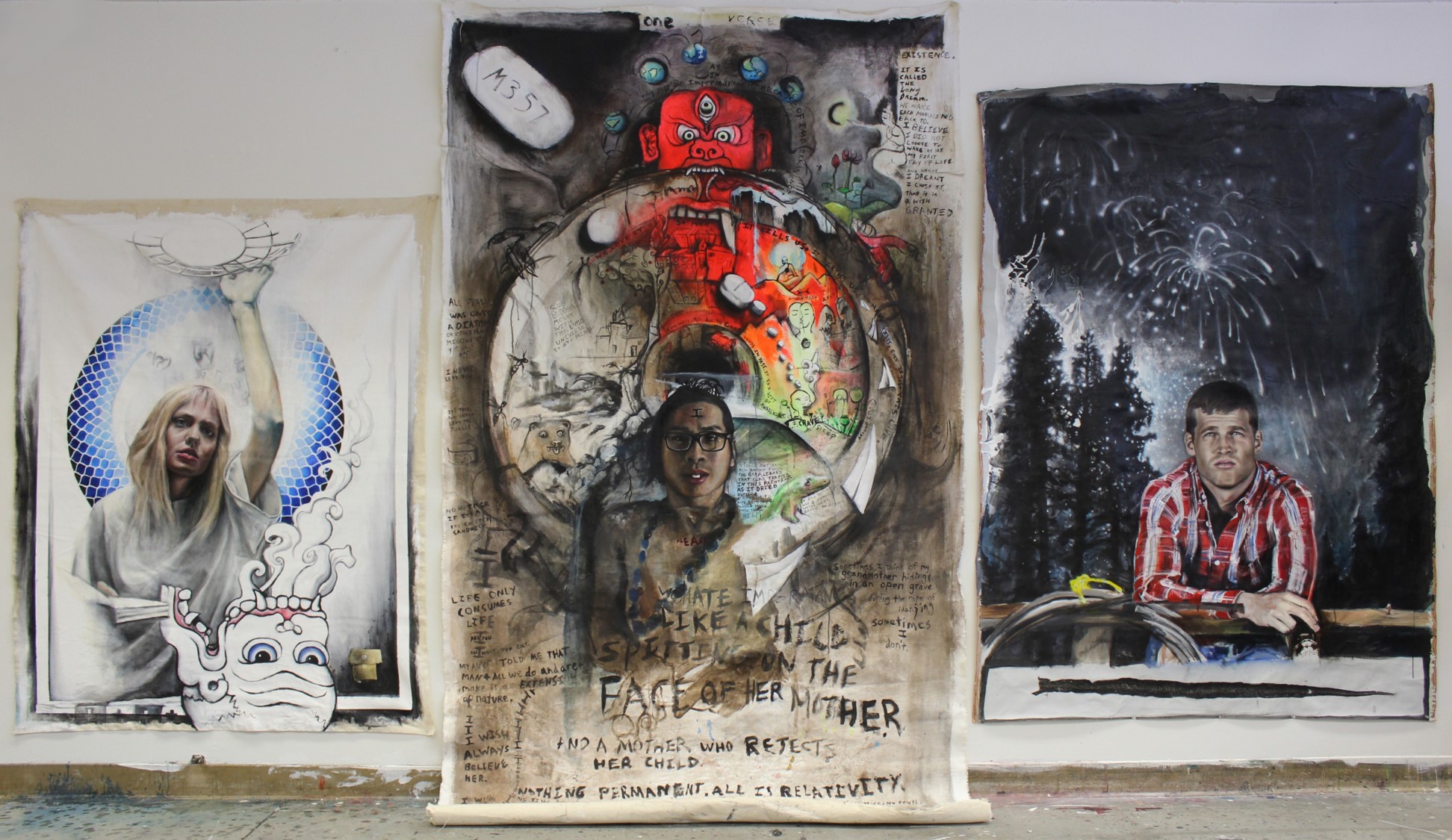
Emptiness, Rebirth, and Impermanence, 2020, Dimensions variable, mixed media
The triptych "Emptiness, Rebirth and Impermanence" are expressions of three core Buddhist
concepts.
The first panel on the left is a depiction of emptiness. As I painted it, I began
to see my life like a dream at night. This has helped me detach from the anxiety caused
by clinging to the self: fear for my safety, fear of losing my loved ones, fear of
major illness, and fear of my own death.
The middle panel is my take on the traditional wheel of life seen in East Asian Buddhist
art. The painting represents my grappling with the concept of rebirth and reincarnation.
I grew up attending Protestant church every Sunday so the idea of reincarnation is
still hard for me to fully accept, but I am getting closer. My mother taught me the
Tibetan practice of dream yoga recently which is essentially lucid dreaming as spiritual
practice. Part of the practice is being aware of your mind during sleep. Each night
I will have a series of dreams in sequence. In some of these dreams I am a little
blonde girl, in another I am a duck with sharp teeth. My mind is the cause of the
form of these dream births, and their accompanying emotional charge. If reincarnation
exists, I believe it functions similarly.
The last panel is a depiction of impermanence. I want my loved ones to be with me
forever and for our relationships to never change or go away. I want to keep my job,
my health, my beauty and my life forever. Since all of these are futile desires, the
consequence of holding onto these thoughts is disappointment and suffering when they
eventually end. Even before they end the clinging causes suffering because deep down,
we all know we will lose everything eventually. We are changing all the time, with
new cells every 7 years, new dreams, new circumstances, challenges and accomplishments.
I try to think about this as a positive now: I try to detach my clinging to impossible
desires.
When we die, we cannot take our money, or our loved ones. Even when alive we are in
a continual state of dying and flux. But what is the alternative? As I painted this
triptych I thought about a world where no one suffers or dies, and it simply cannot
exist. I teach my drawing students that black only exists if white exists in context.
Life and death, happiness and suffering also exist on an inseparable relative spectrum.
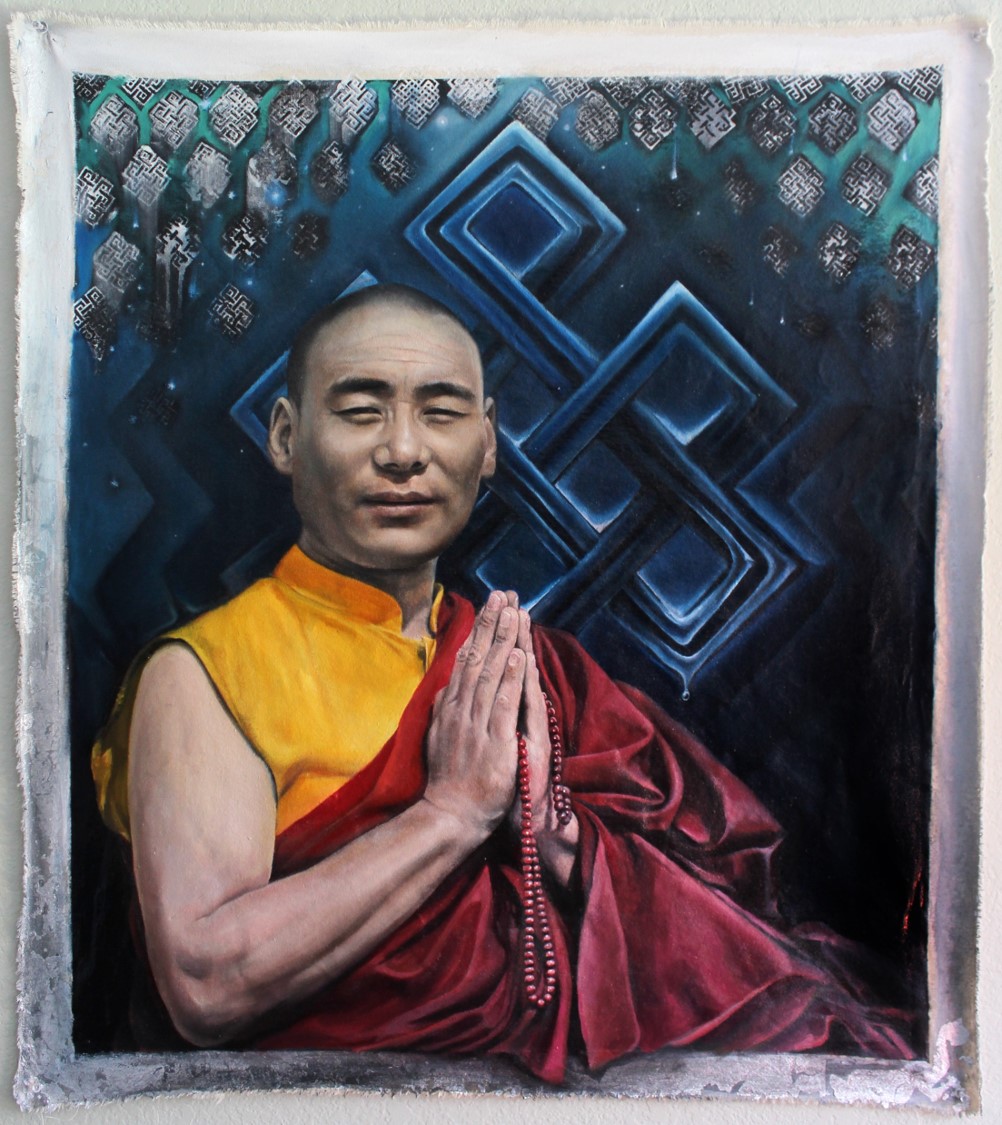
Portrait of Khentrul Rinpoche, 2020 30"x20", Acrylic and Oil on Canvas
The Dharma asked me to test the concepts I was taught. I was instructed to dissect
the teachings and question them. There is no dogma in Buddhism, to me it has been
a generous grandparent whispering the most valuable wisdom in my ears. This painting
is about wisdom as an organic force of the universe. In Tibetan Buddhism the endless
knot symbolizes the path towards enlightenment: The union of wisdom and compassion.
On this path it is helpful to have a teacher.
I am lucky to be part of a lineage unbroken all the way to the Buddha himself. My
Tibetan name was given to me by Khentrul Rinpoche when I took my refuge vows, it translates
to ‘Awakened One of the Highest Cosmic Truth’. Dharma names like mine are meant to
be aspirational. Buddhism has felt like encountering cosmic truth. It has felt like
I was bailing water from a sinking ship my entire life until someone told me I could
swim.
I didn’t know I had a choice about what thoughts I listened to and followed before
I embraced Buddhism. The mind training that Khentrul Rinpoche has given to me has
been transformative. I have been taught the tools to tame my mind and will be wrestling
this ferocious tiger my entire life.
Detail Shots from SEED LAB mural project with the Anchorage Museum.
I was the resident artist for the Anchorage Museum’s SEED LAB September 2020. I developed
murals emulating stained glass windows to raise awareness about climate change.
When asked to comment on climate change, this is what came to mind: There is no mistake
in my personal life that doesn’t have the potential to become wisdom. I am a kinder
person for the regret that followed a past of cruelty. I value the things I have broken.
I know the depths of my heart when it is aching. I believe that humanity can learn
from even our biggest mistakes as well. I went to Hiroshima last year to see how the
people of that city overcame an atomic bomb being dropped on them. I was shocked to
find that many there are on a mission of peace. The people of Hiroshima know the need
for peace because of the disaster they endured. Climate change could be the catalyst
for a more respectful and wiser society. I believe life has always been aimed towards
wisdom.
In the first panel I painted Buddha smoking a cigarette and uprooting invasive dandelions.
I believe Buddha would enjoy the irreverence in my art. I once read the passage that
even if you slander the Buddhist texts they will still work for you.
The Pilgrims brought the first dandelions to the New World as food and medicine. The
plants represent colonialism to me and can now be found nearly everywhere the West
has affected. Last summer I noticed that there were hundreds more dandelions in the
bog behind my house than usual. They are invasive species, harmful to local nature.
I wondered if I could help as just one person. I began to pick and uproot every dandelion
I saw as I walked my dog, and at the end of summer there were none left in those few
miles. This gave me hope that maybe one person can help. I want people that see the
mural to pick every dandelion they see too.
The other panel was painted as I began to accept the law of karma in all its fullness.
It depicts dandelions that have now gone to seed, and the melting Mendenhall Glacier
in Juno. Every action has it’s consequence, what consequences do we want for our lives?
“Buddha Backdrop” Acrylic on Canvas 5’x5’ 2020-2021 (In Progress)
This painting will be installed as a permanent mural at the La’i Peace Center on the
Hawaiian island of Oahu this year. A golden Buddha statue is being commissioned in
Nepal to sit in front of the painting at the Buddhist retreat center.
My artwork can be thought about as meditations or prayers. Each painting in this exhibition
was created as I grappled with metaphysical concepts in the Dharma teachings. Concepts
such as emptiness, rebirth, karma, and the nature of mind were worked out through
every brush stroke and pondered in each unplanned depiction. Dzongsar Jamyang Khyentse
Rinpoche has said that the Buddhist path is almost identical to the process of true
seeing that an artist must cultivate. The only difference is that a Buddhist must
learn not only how to truly see, but also to truly hear, smell, taste, feel, think
and act.
Kim Van Someren
Biography
Kim Van Someren is the Instructional Technician in Printmaking, Painting + Drawing
and Interdisciplinary Visual Arts at the University of Washington. She holds a MFA
in Printmaking from the University of Washington (2004) and a BA from the University
of Wisconsin-LaCrosse (2002). She has taught Printmaking at Pratt Fine Arts Center,
Kirkland Arts Center, the Frye Art Museum, the Seattle Arts Museum, and University
of Washington. Van Someren has exhibited locally and nationally; her work is included
in several collections including the New York Public Library, the University of Iowa,
the University of Washington and Yale University’s Beinecke Rare Book and Manuscript
Library.
Van Someren is represented by J. Rinehart Gallery, Seattle, WA.
Artist Statement
I work from the premise of tradition shaped by play, mother shaped by child, and bone
shaped by water; I am always looking to bend that which appears to be stiff. My work
is rooted in that which is formidable but I am amused with the idea of transforming this
notion into that which is gentle.
My work stems from structures found in farming and forests, worship and spirituality,
air and warcraft. These forms are reminiscent of what I saw growing up in Northern
rural Wisconsin but are also that which surrounds me in Pacific Northwest. I am interested
in the metaphorical gender of structure, and how this can be altered through line,
mass, and translucency.
I am also consumed with how mass and weight can be dictated with the direction, density
and content of line. The massive forms I depict float and root in empty spaces to
allow autonomy within structure while abandoned engineering of forms forces the structures
to teeter between reality and fiction. The symbiotic use of hand and machine generated
lines question whether or not the building materials are from earth or from engine.
Much of the work I create is done so by exploiting a single yet repetitive line through
drawing and printmaking techniques; building processes which take time yet present
me with opportunities as both manufacturer and builder. I am drawn to methods such
as etching, paper lithography and carbon transfer; processes in which surfaces are
meticulously rubbed, rolled, and/or printed with hand and machine pressure. Each of
these steps yields intimate moments between printmaker and her paper. It is through
this mark-making process and others that initiates a game of rebound and play with
an image as my process is dictated by reactions to the outcome of the previous lines
and forms made. By resisting the urge to pre-direct a structure’s composition, the
forms are set up to transform into counter-weighted towers that float while they are
planted, and root as they waft by.
In either case, the structural make-up of the forms insinuates that the delicately
lined and layered forms cocoon something else, perhaps something wanting to break
free.
Website
www.kimvansomeren.com
Kim Van Someren
Aider
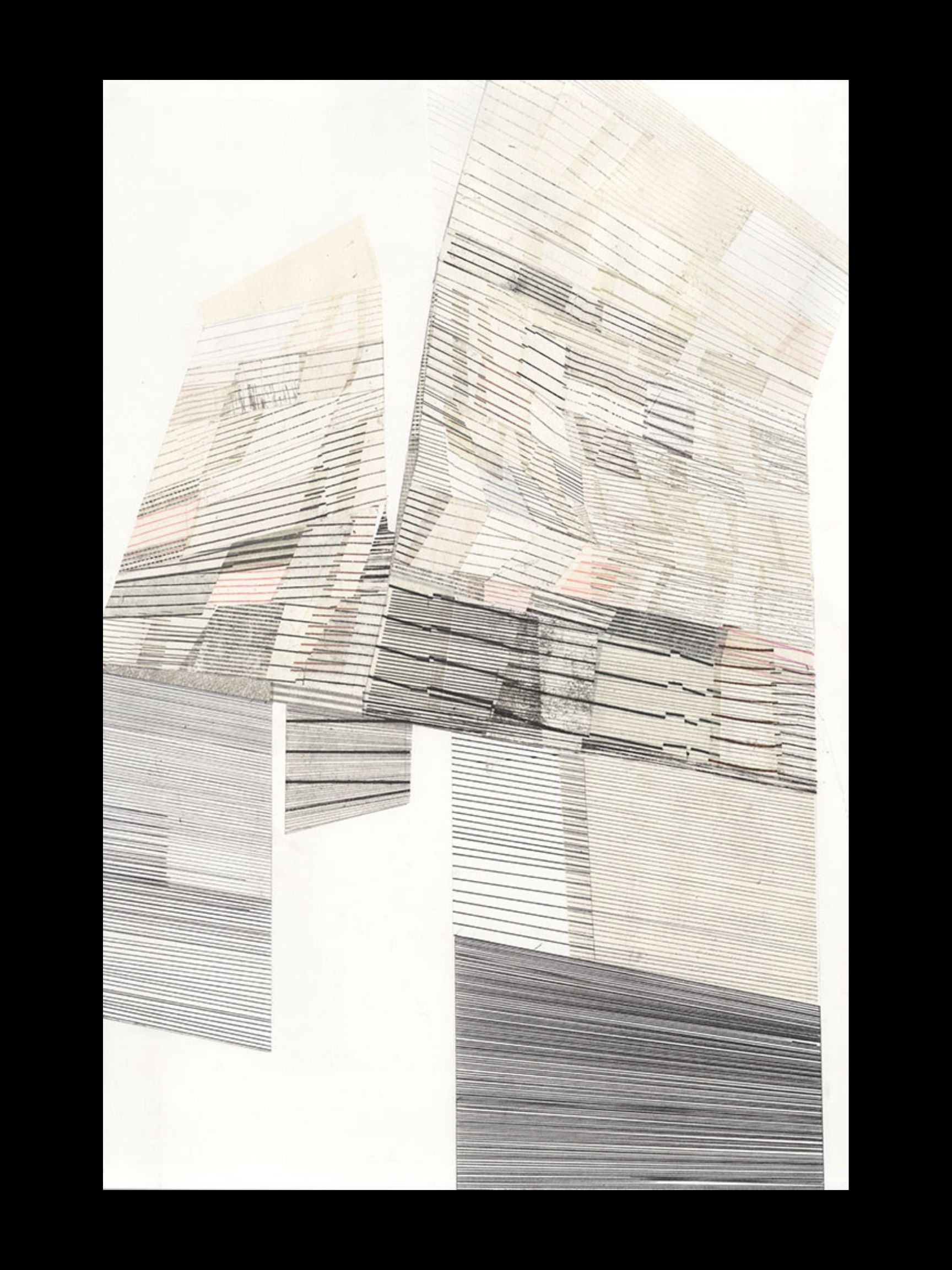
Paper lithography, silk tissue, collage, carbon transfer | 22"x 15" | 2020
Kenai Peninsula College Online Exhibition
October 2020
Cloaker
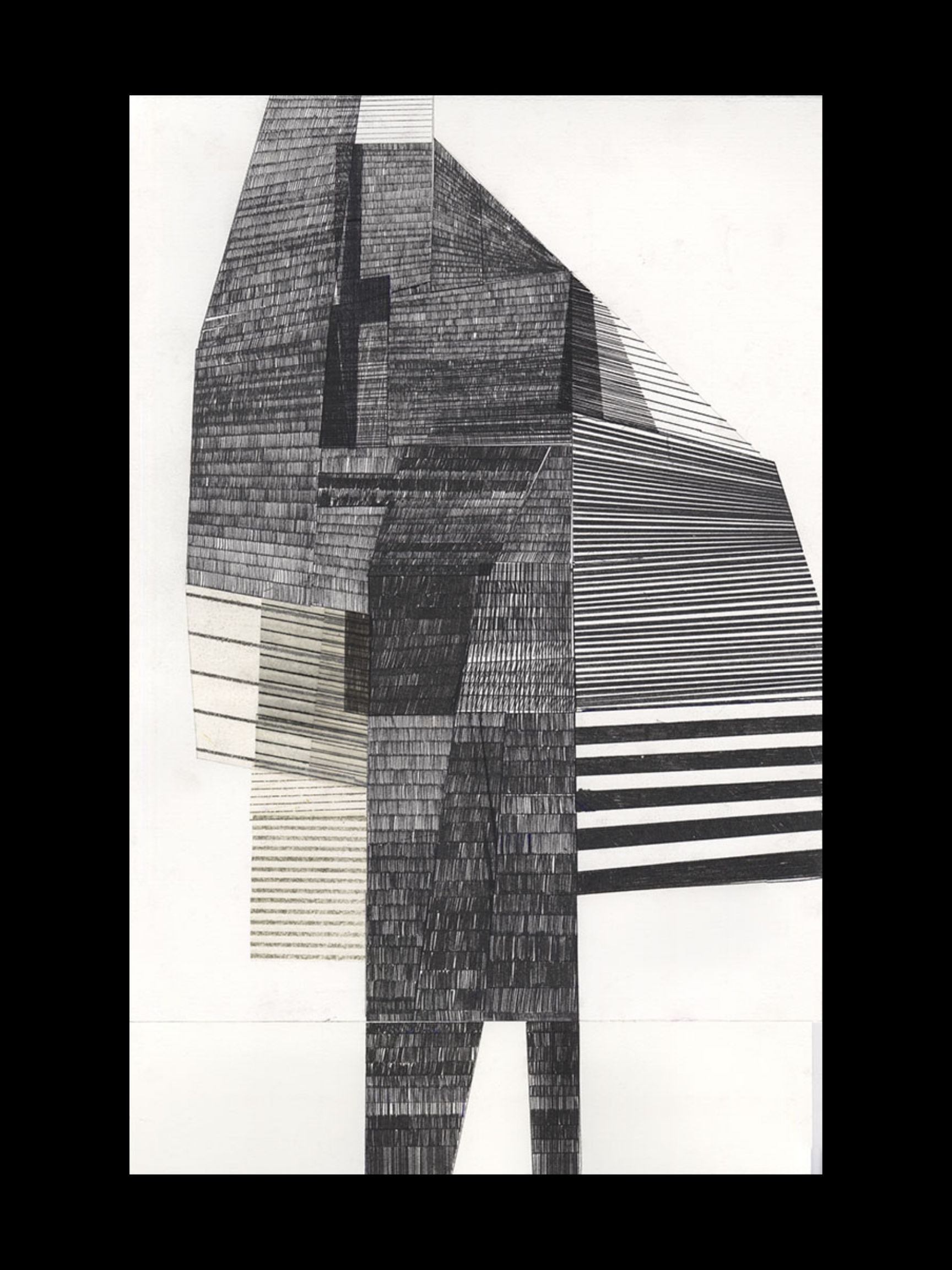
Carbon and Paper Lithography on Paper | 17.5" x 11" | 2020
Double Cesser
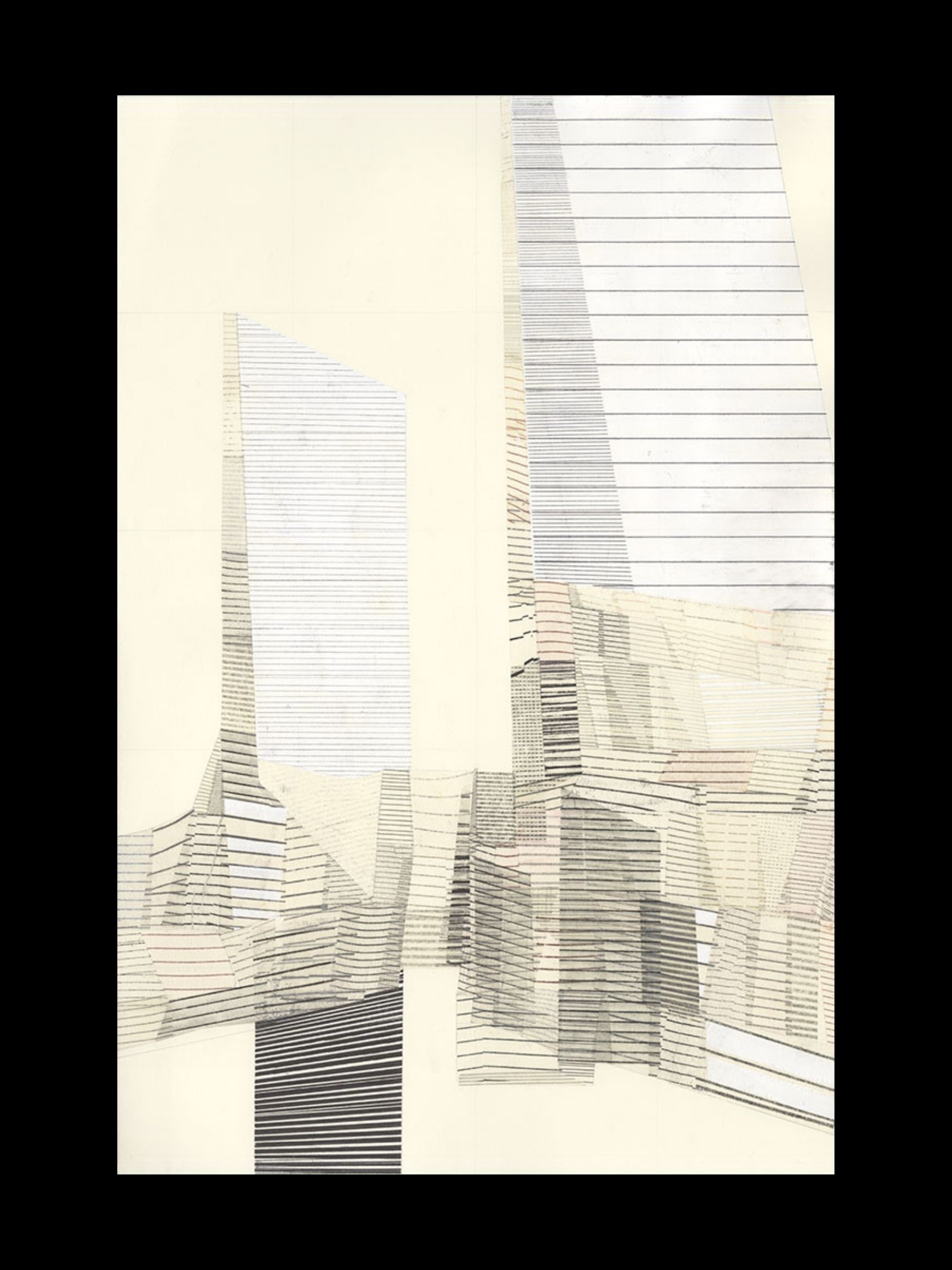
Paper Lithography, Silk Tissue, Collage and Carbon Transfer on Paper | 22"x 15" | 2020
Double Poler

Carbon Transfer on Paper | 15"x 11" | 2020
Dozer
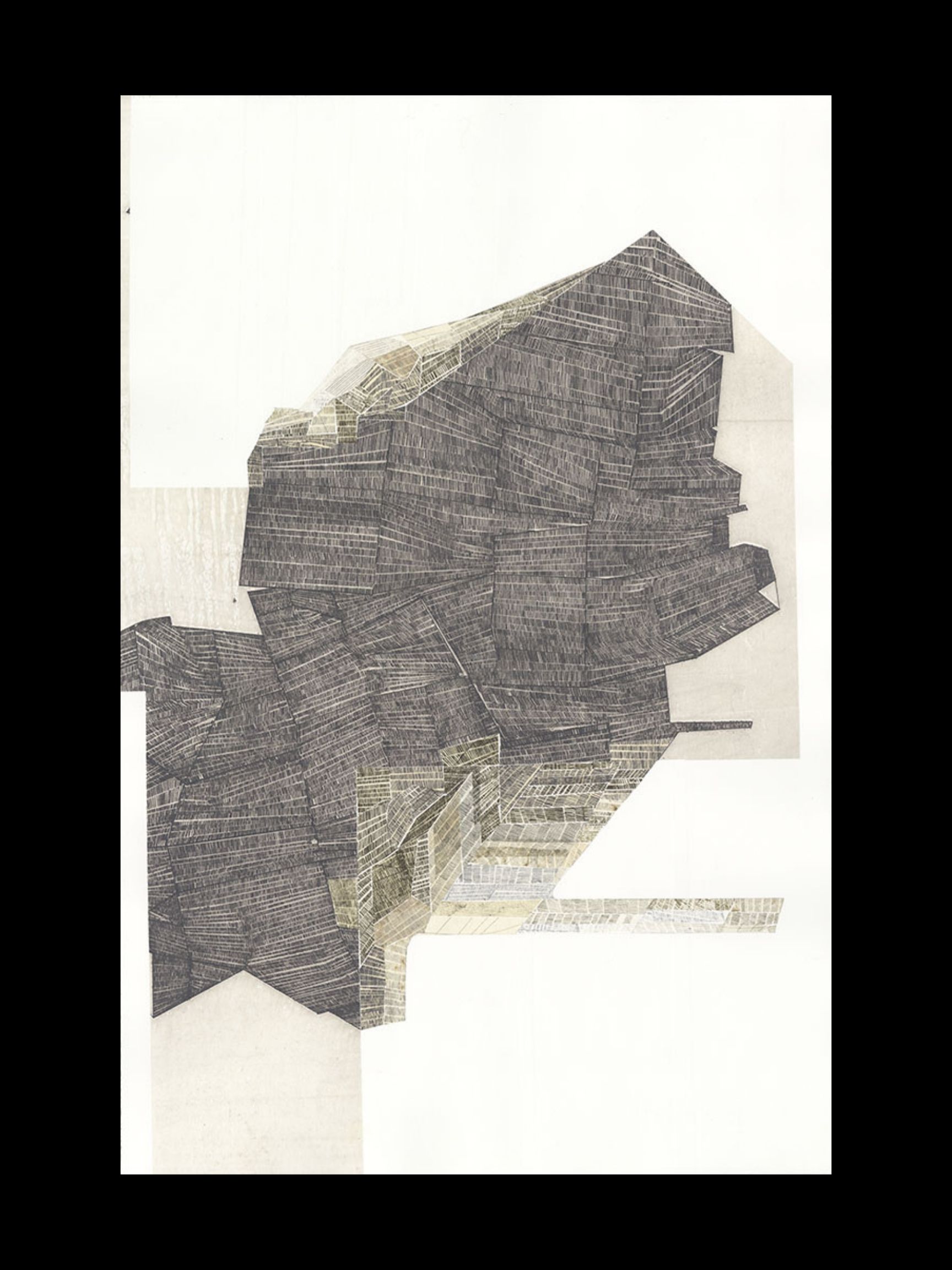
Etching, Collage, Drypoint, Porchoir on Paper | 22"x 15" | 2020
Foiler

Etching, collage, porchoir on Paper | 18”x 11” | 2019
Grainer
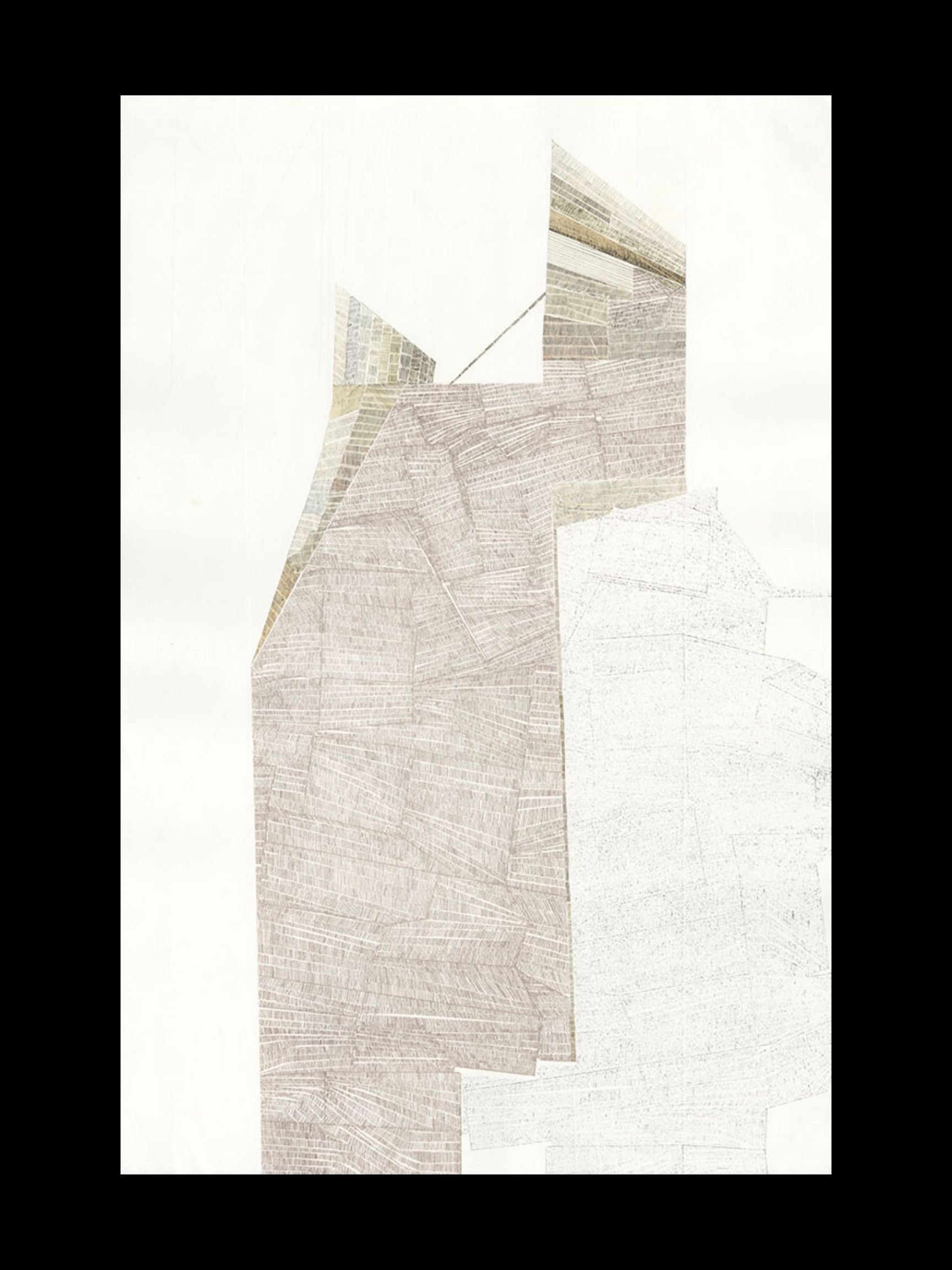
Etching, Collage, Porchoir On Paper | 22"x 15" | 2020
Half Stander
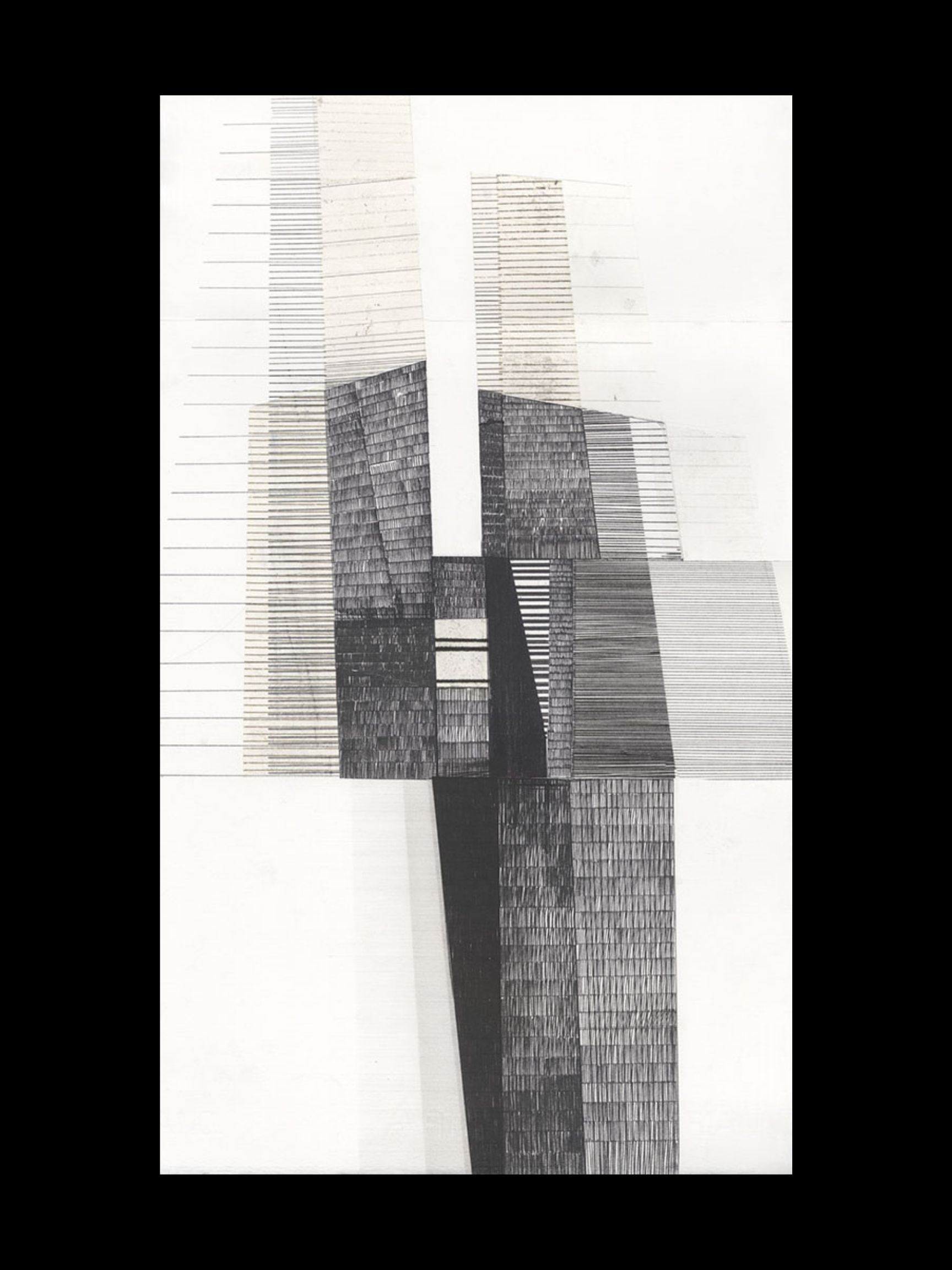
Carbon and Paper Lithography on Paper | 19"x 11" | 2020
Heaver
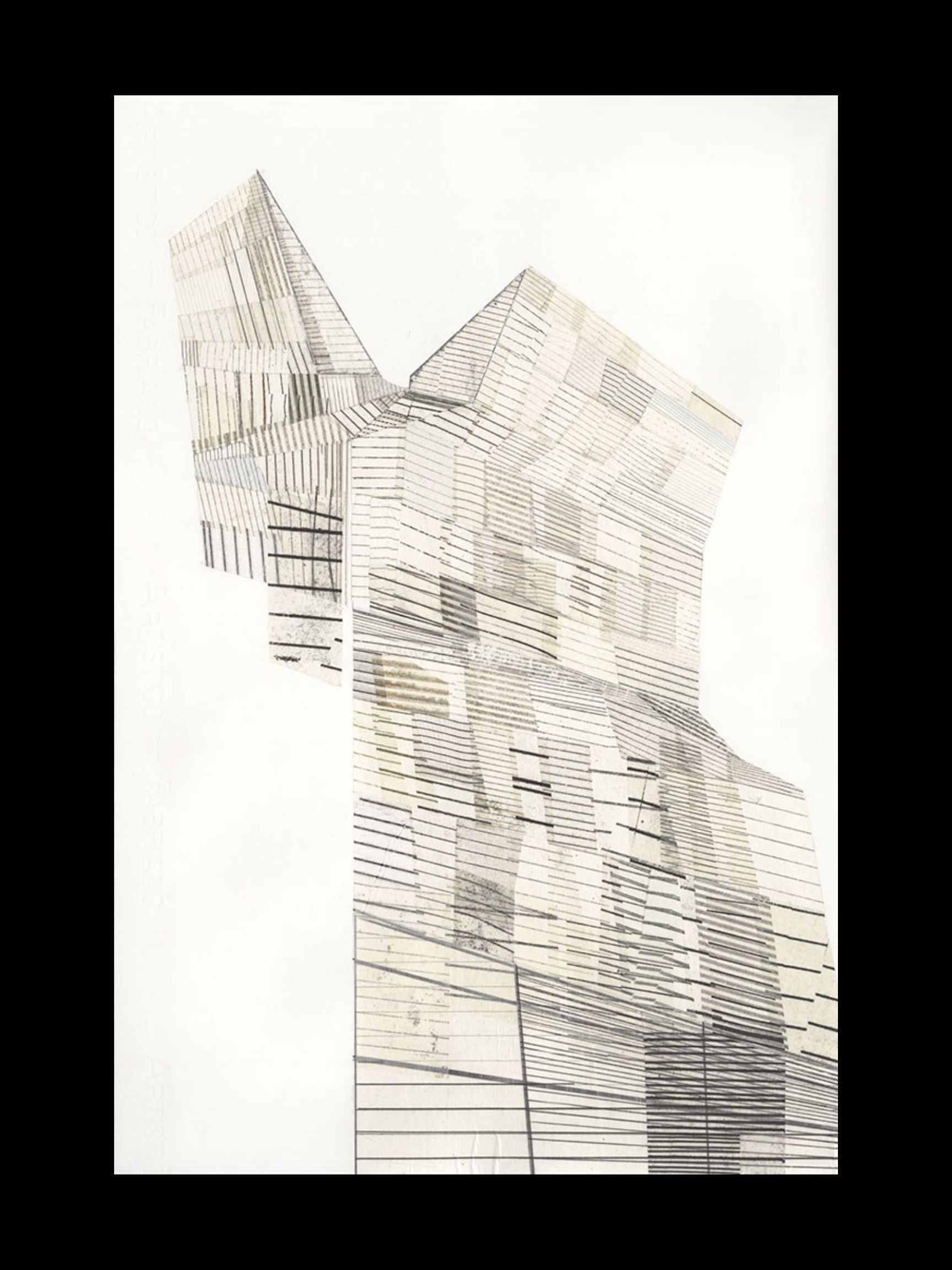
Paper Lithography, Silk Tissue, Collage and Carbon Transfer on Paper | 2020
Hitcher
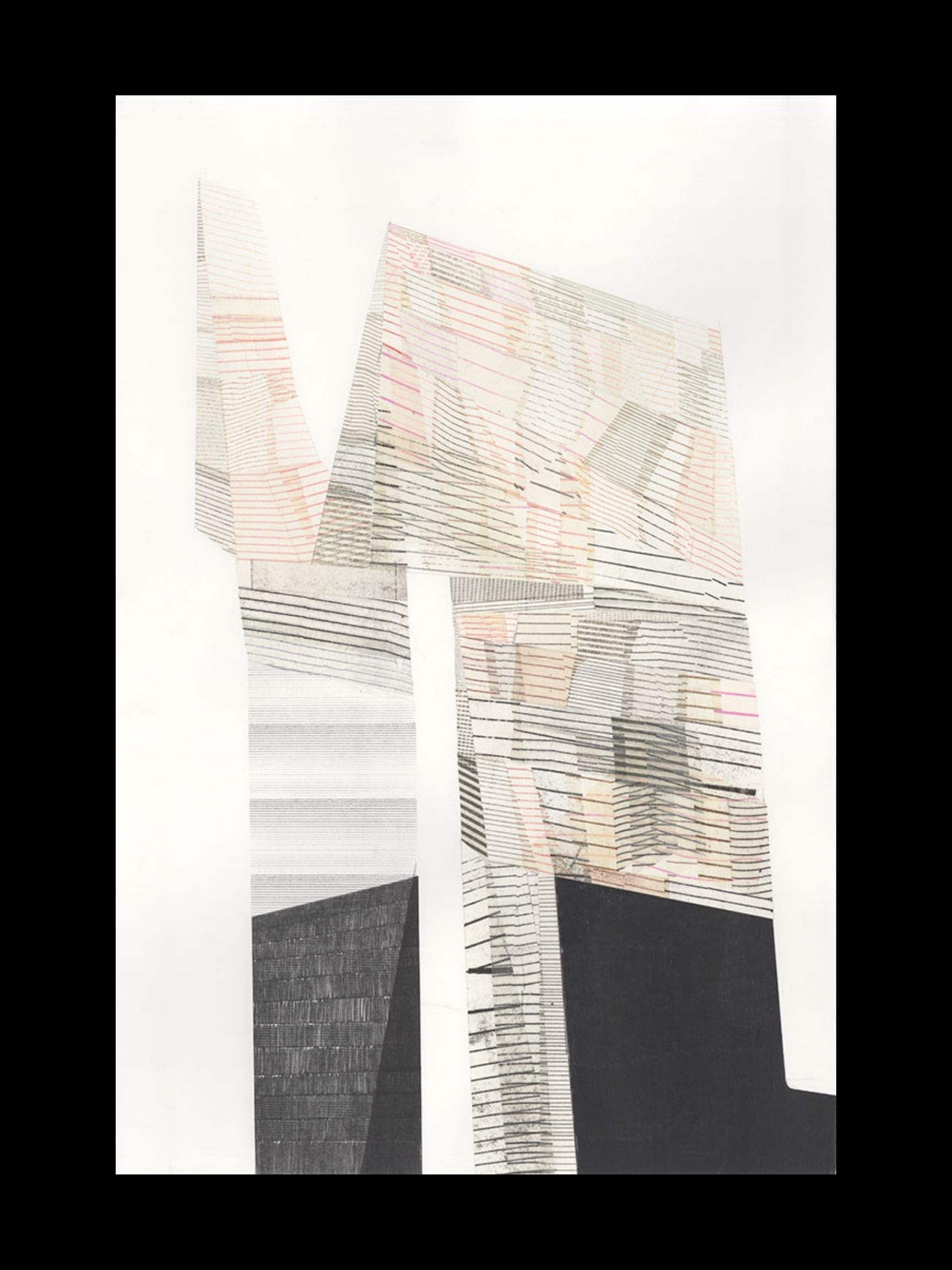
Paper Lithography, Silk Tissue, Collage and Carbon Transfer on Paper | 22"x 15" | 2020
Lilter
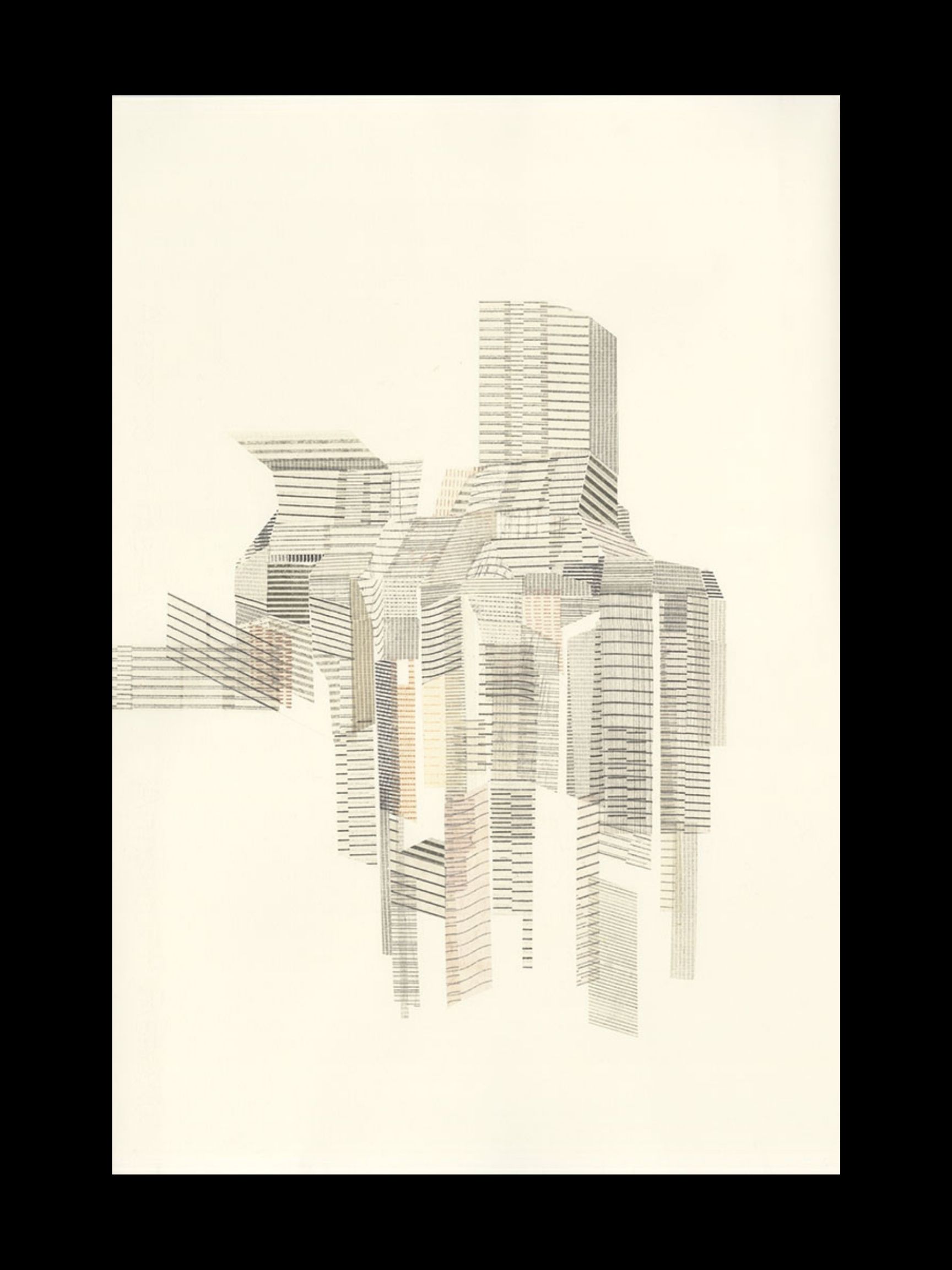
Paper Lithography, Silk Tissue, Collage and Carbon Transfer on Paper | 22"x 15" | 2020
Melder
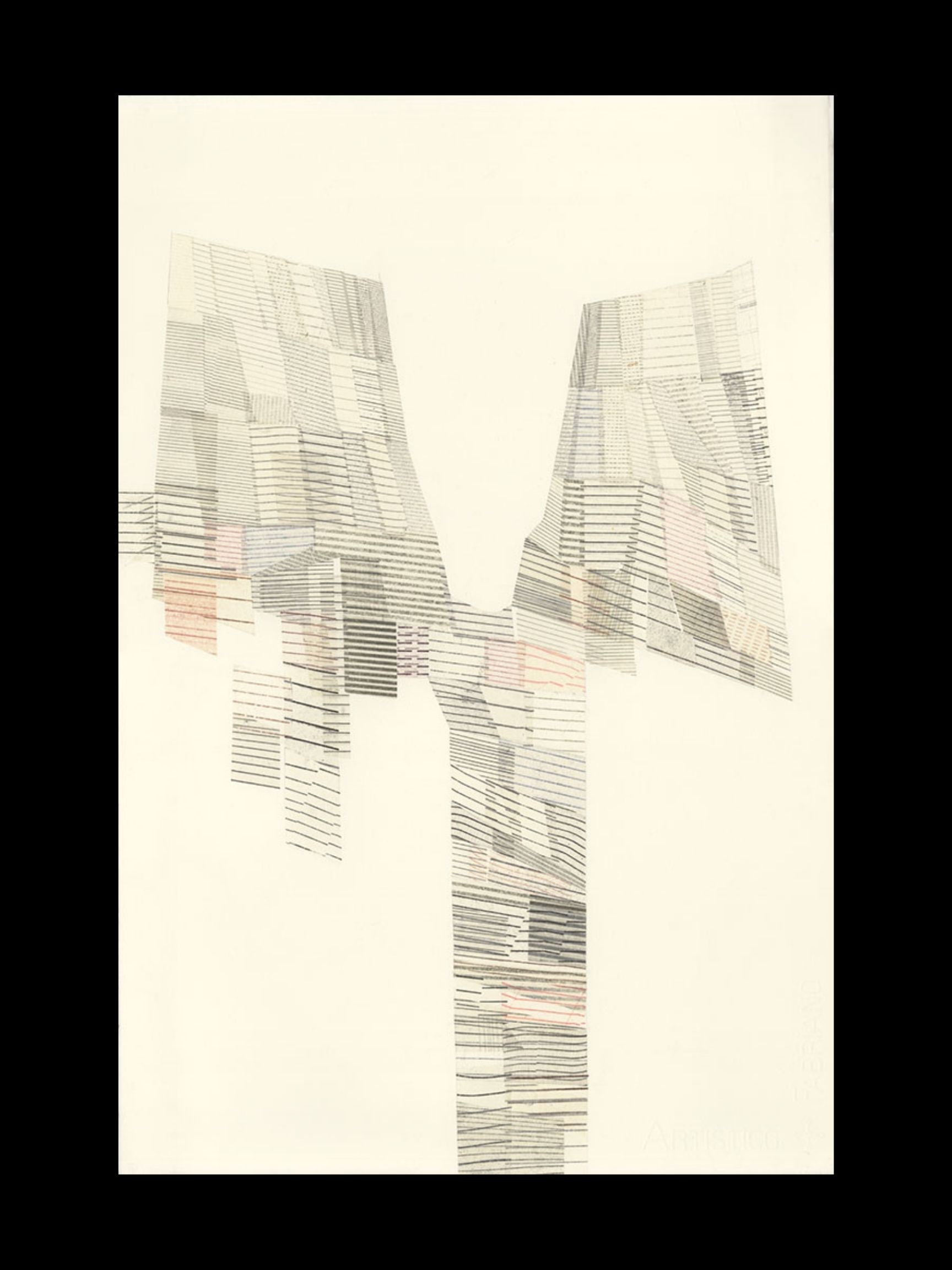
Paper Lithography, Silk Tissue, Collage and Carbon Transfer on Paper | 22"x 15" | 2020
Muler
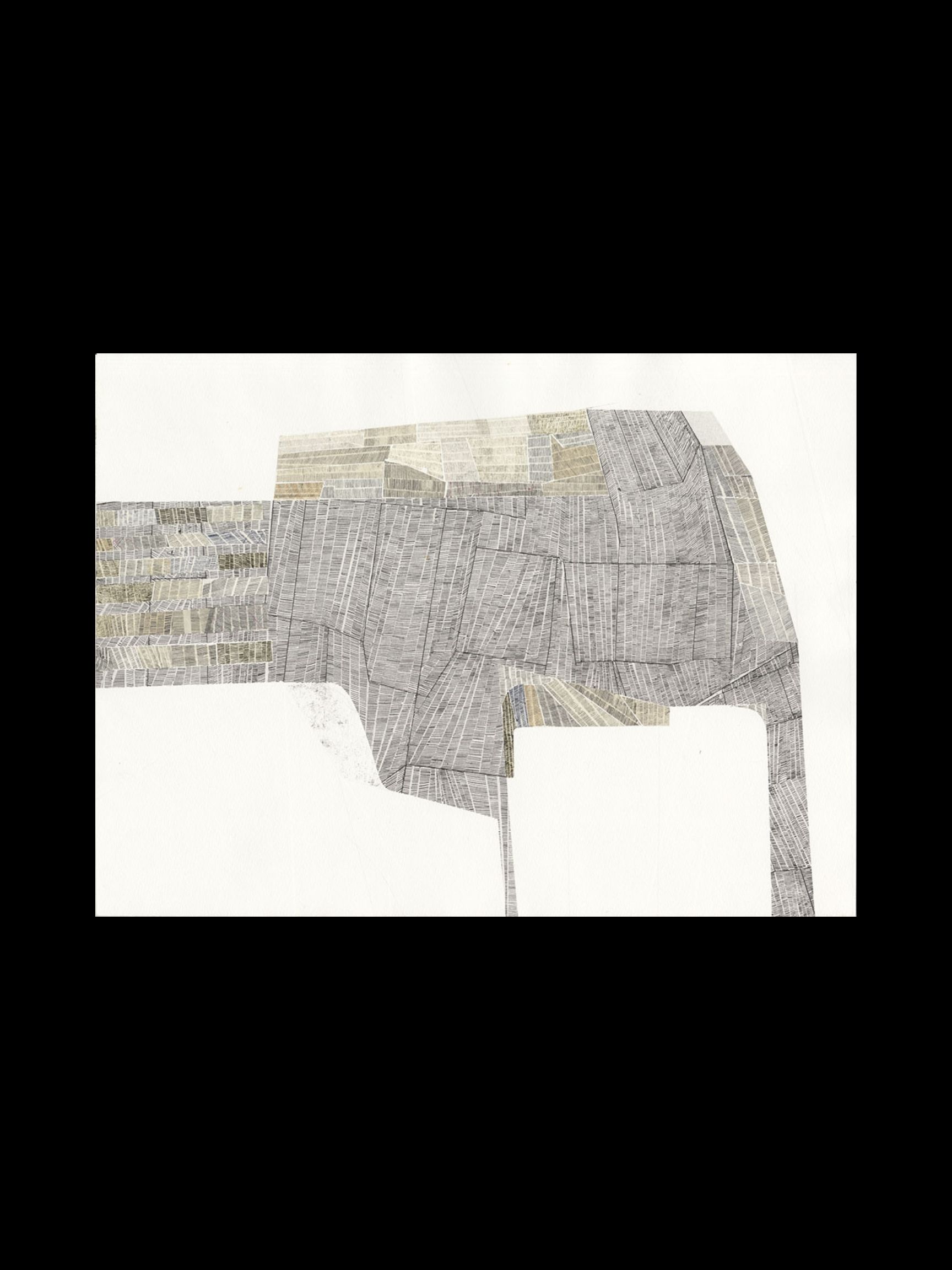
Etching, Collage, Porchoir On Paper | 11"x 15" | 2019
Porter

Drypoint, Collage On Paper | 22"x 15" | 2019
Runger
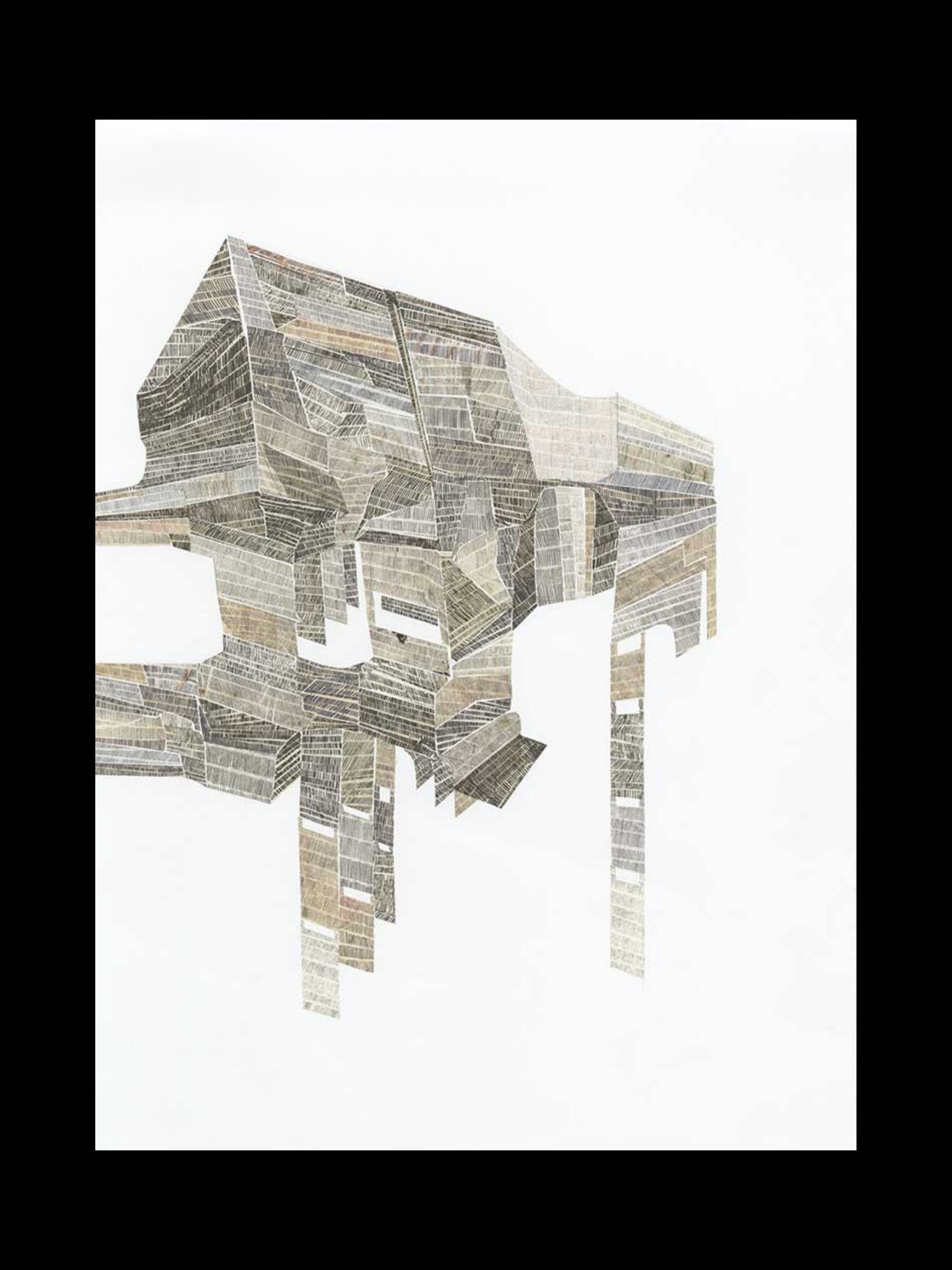
Drypoint, Collage On Paper | 15"x 11" | 2019
Shuffler
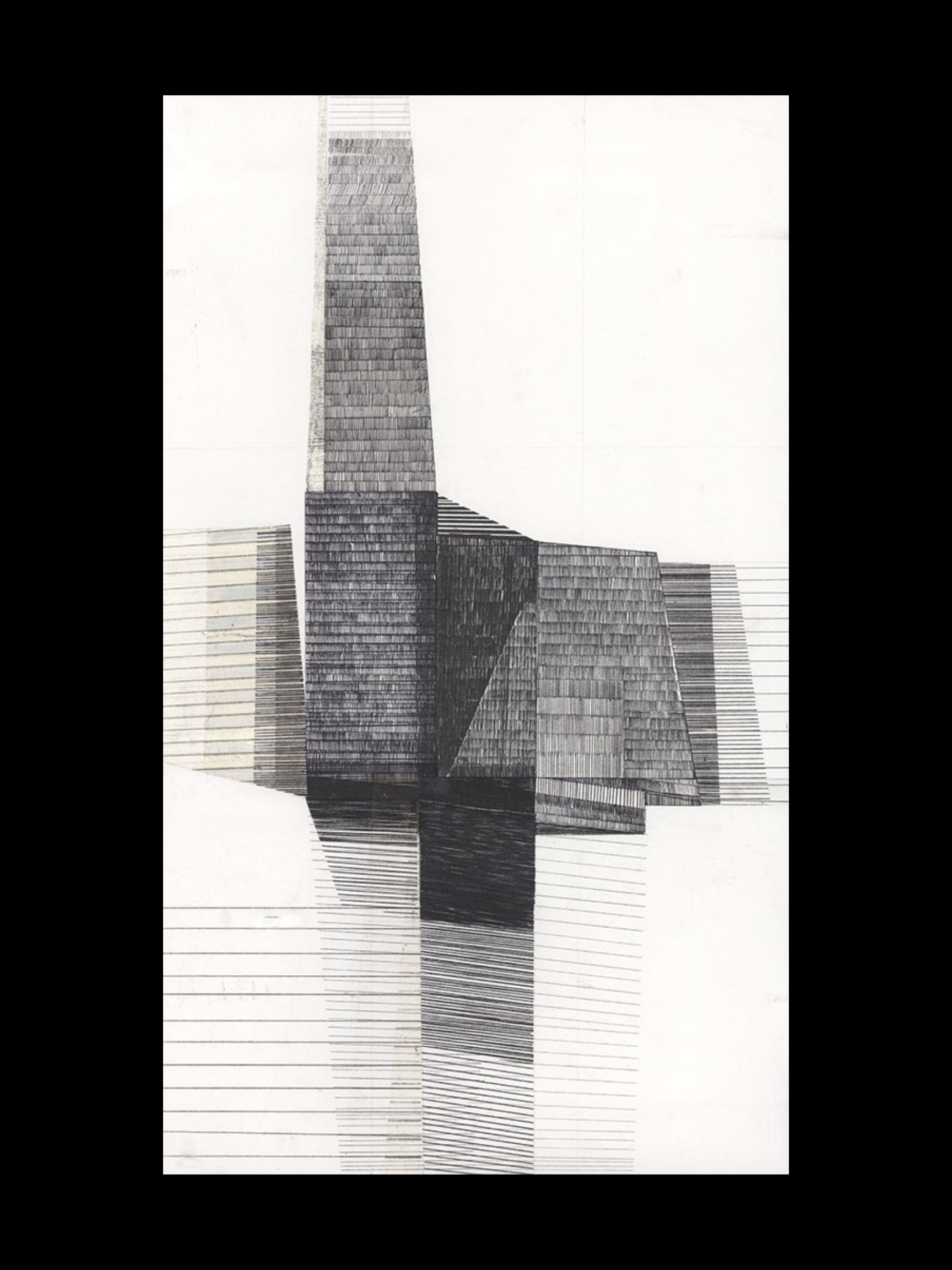
Carbon and Paper Lithography on Paper | 19"x 11" | 2020
Slifter
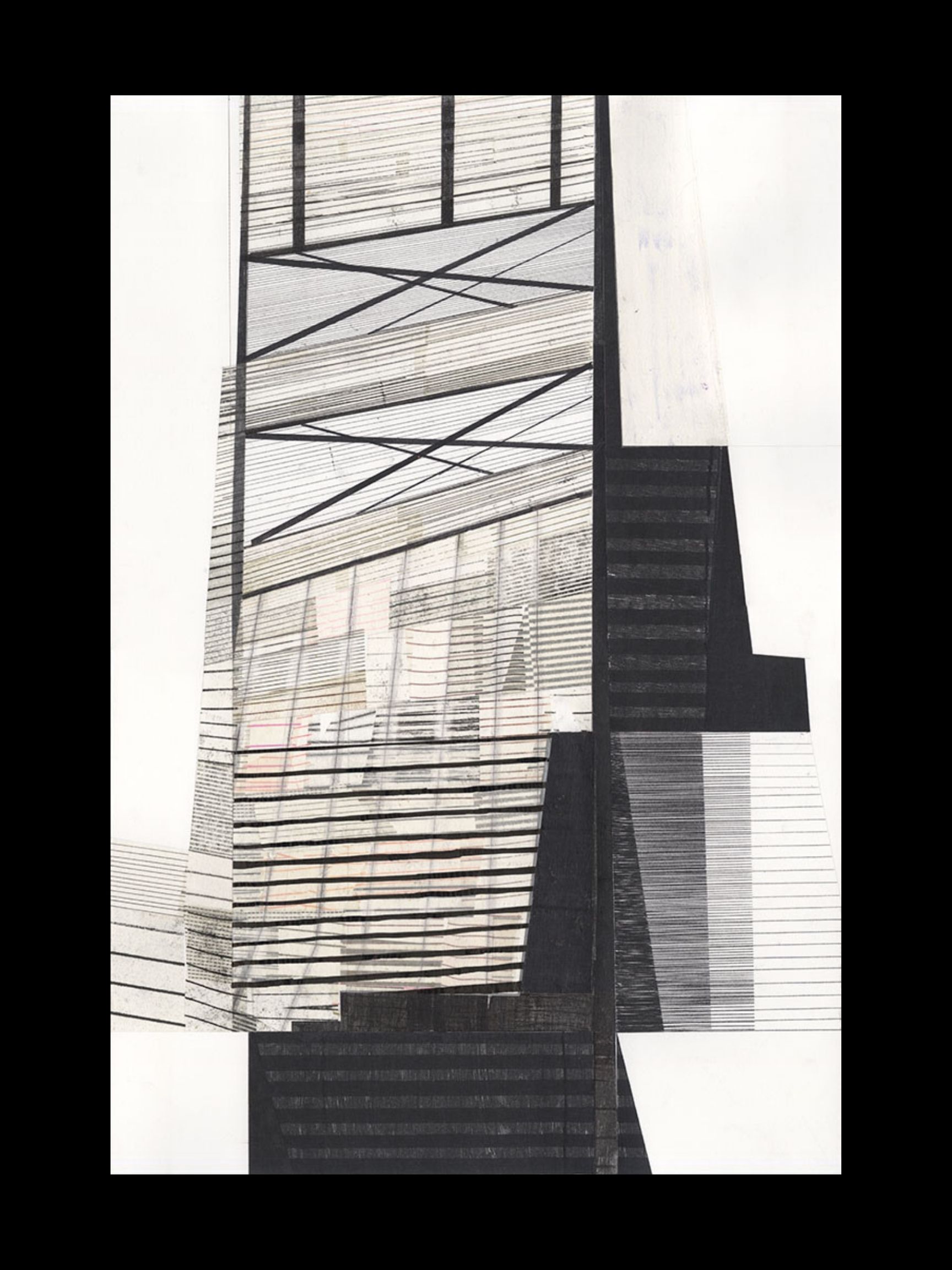
Paper Lithography, Silk Tissue, Collage and Carbon Transfer on Paper | 22"x 15" | 2020
Spilter
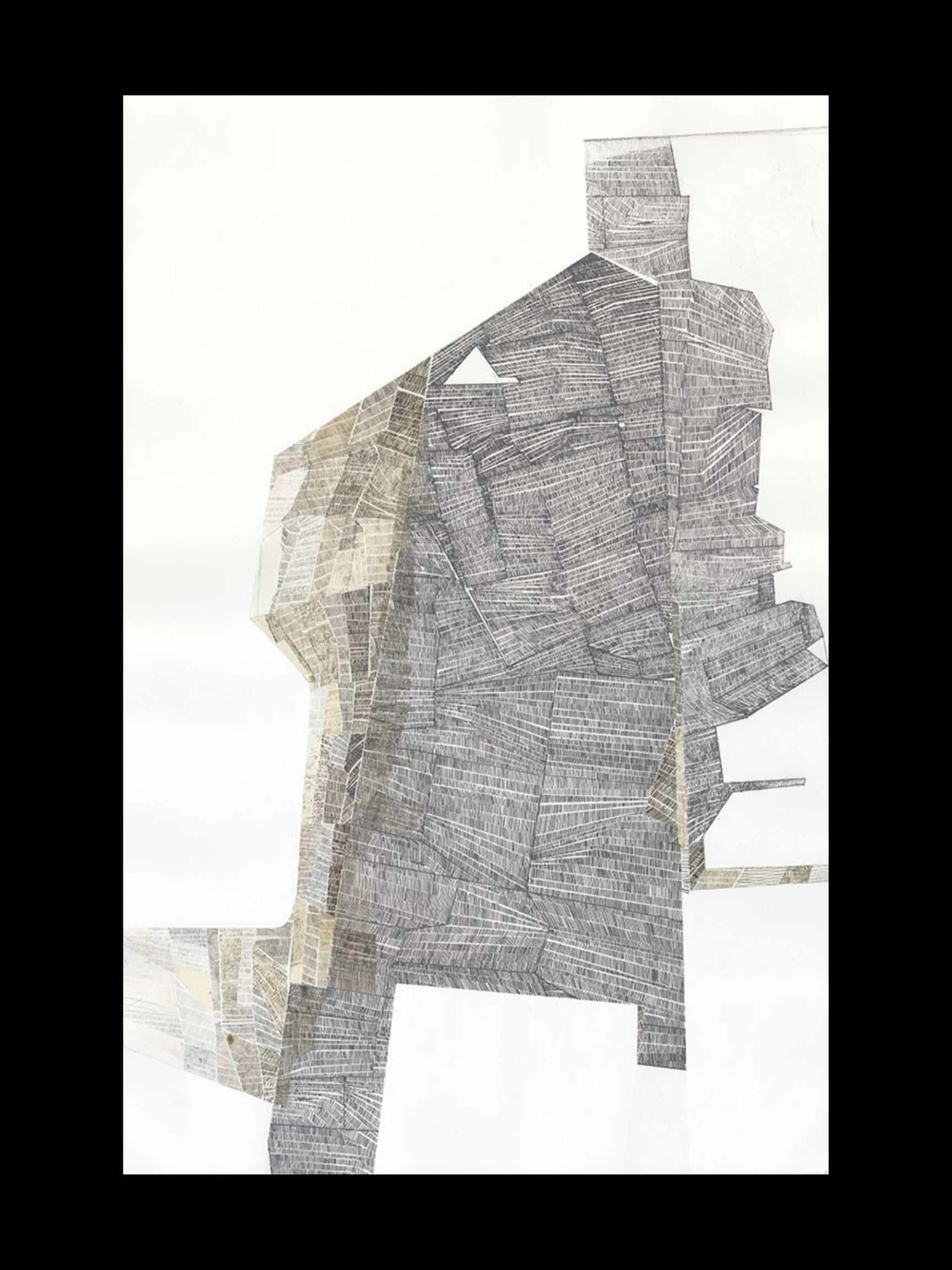
Etching, Collage, Porchoir On Paper | 22"x 15" | 2019
Spotter
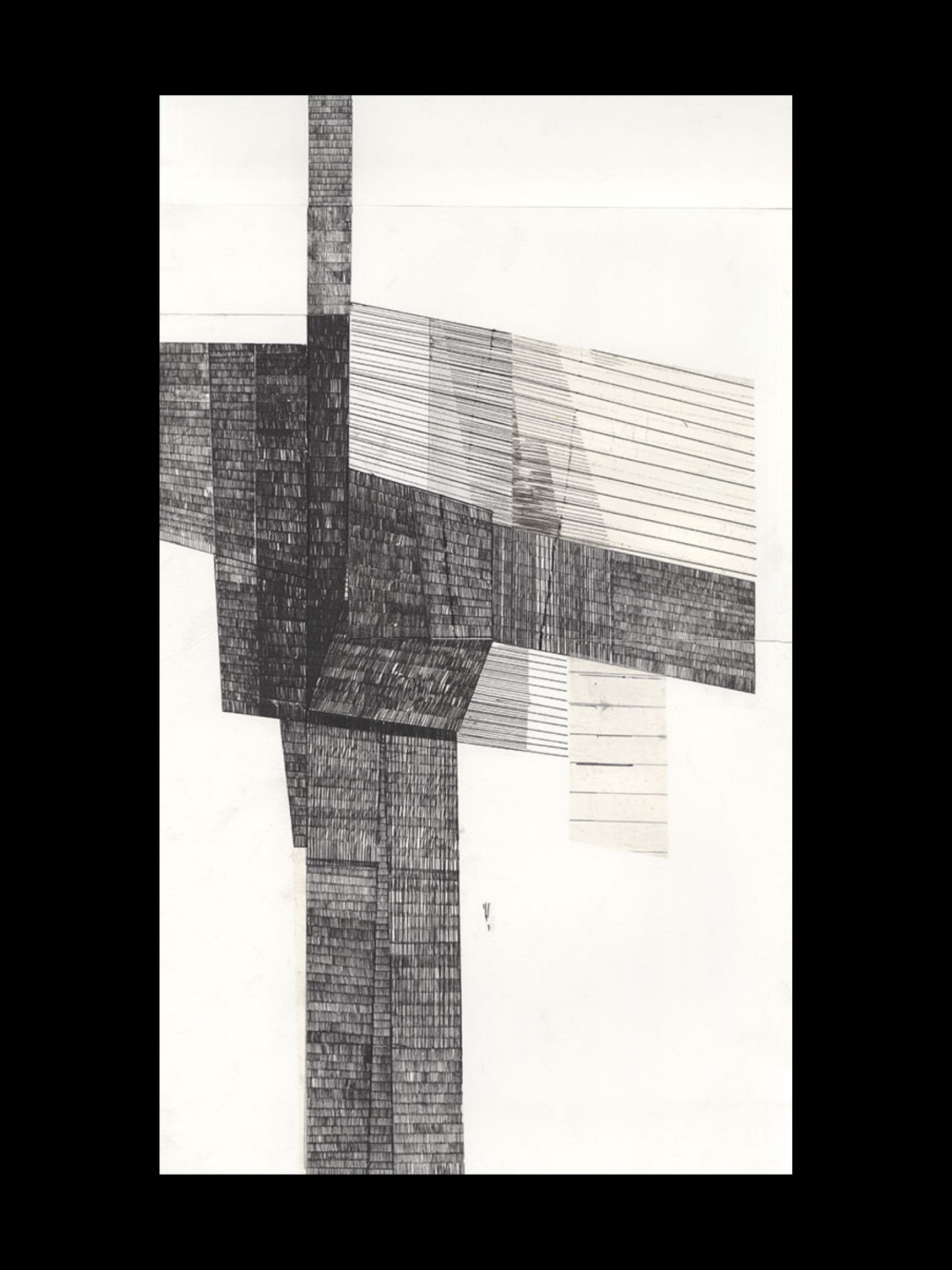
Carbon and Paper Lithography on Paper | 19"x 11" | 2020
Staker
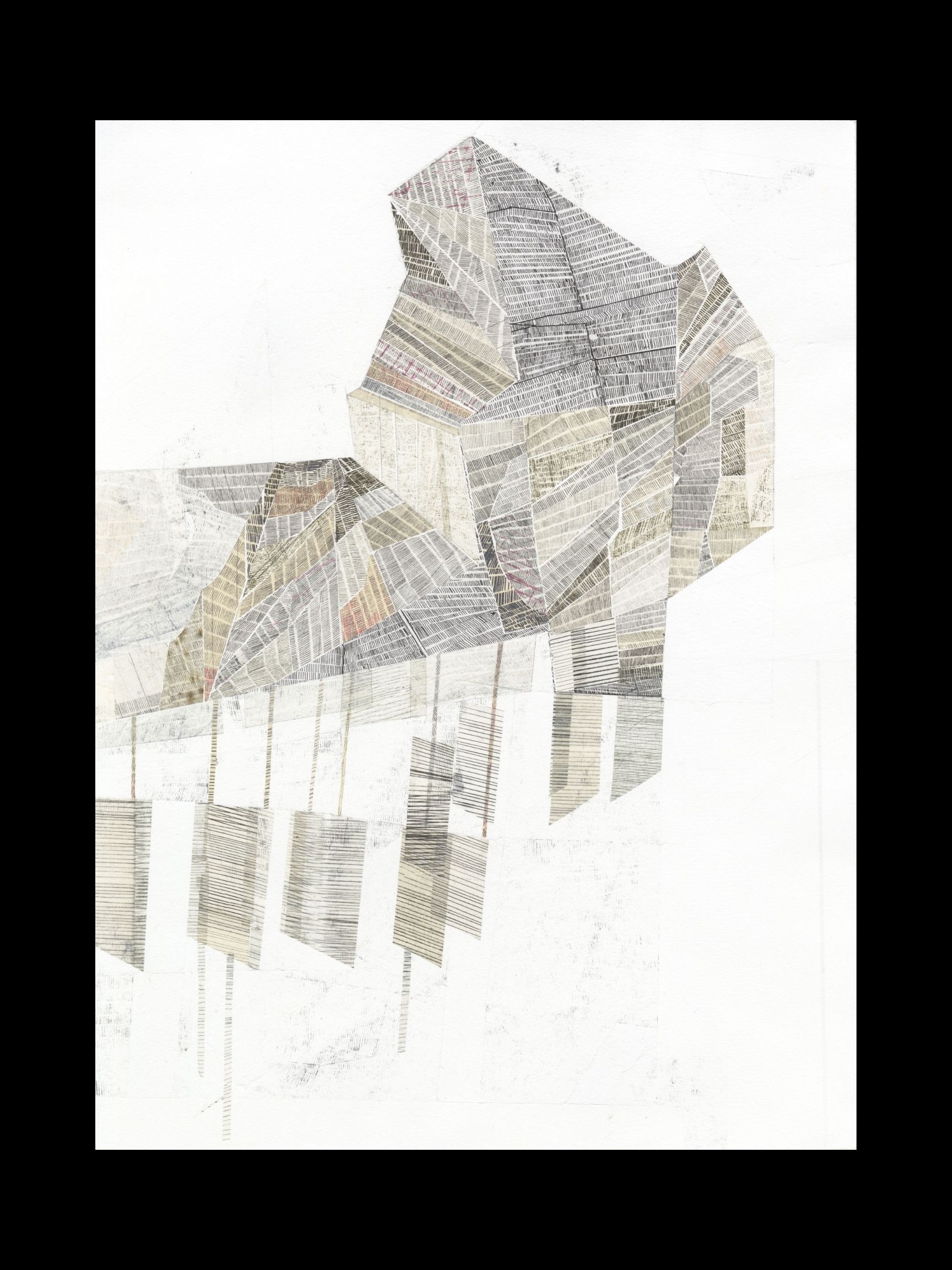
Drypoint, Collage On Paper | 15"x 11" | 2019
Sterner
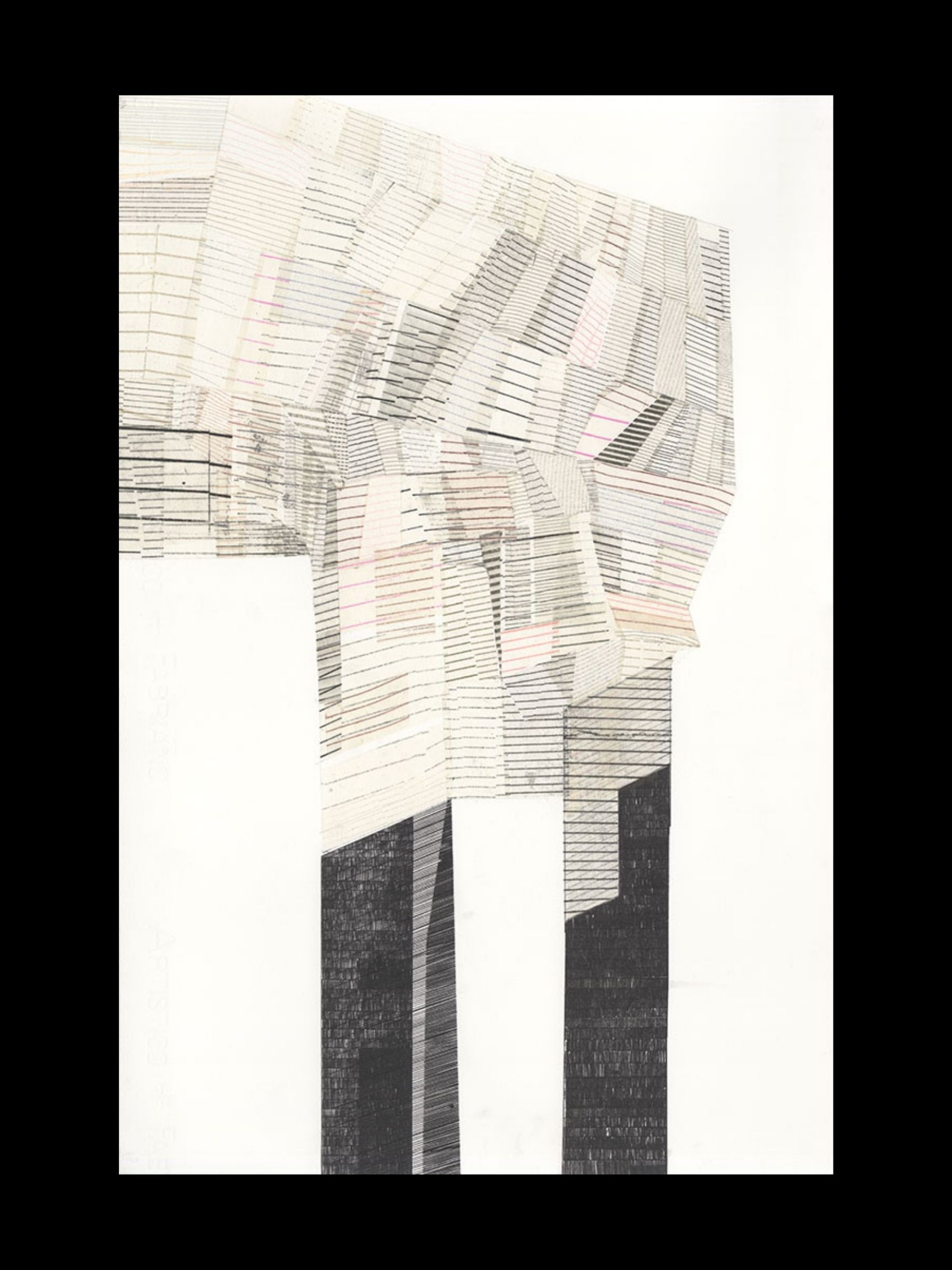
Paper Lithography, Silk Tissue, Collage and Carbon Transfer on Paper | 22"x 15" | 2020
Throbber
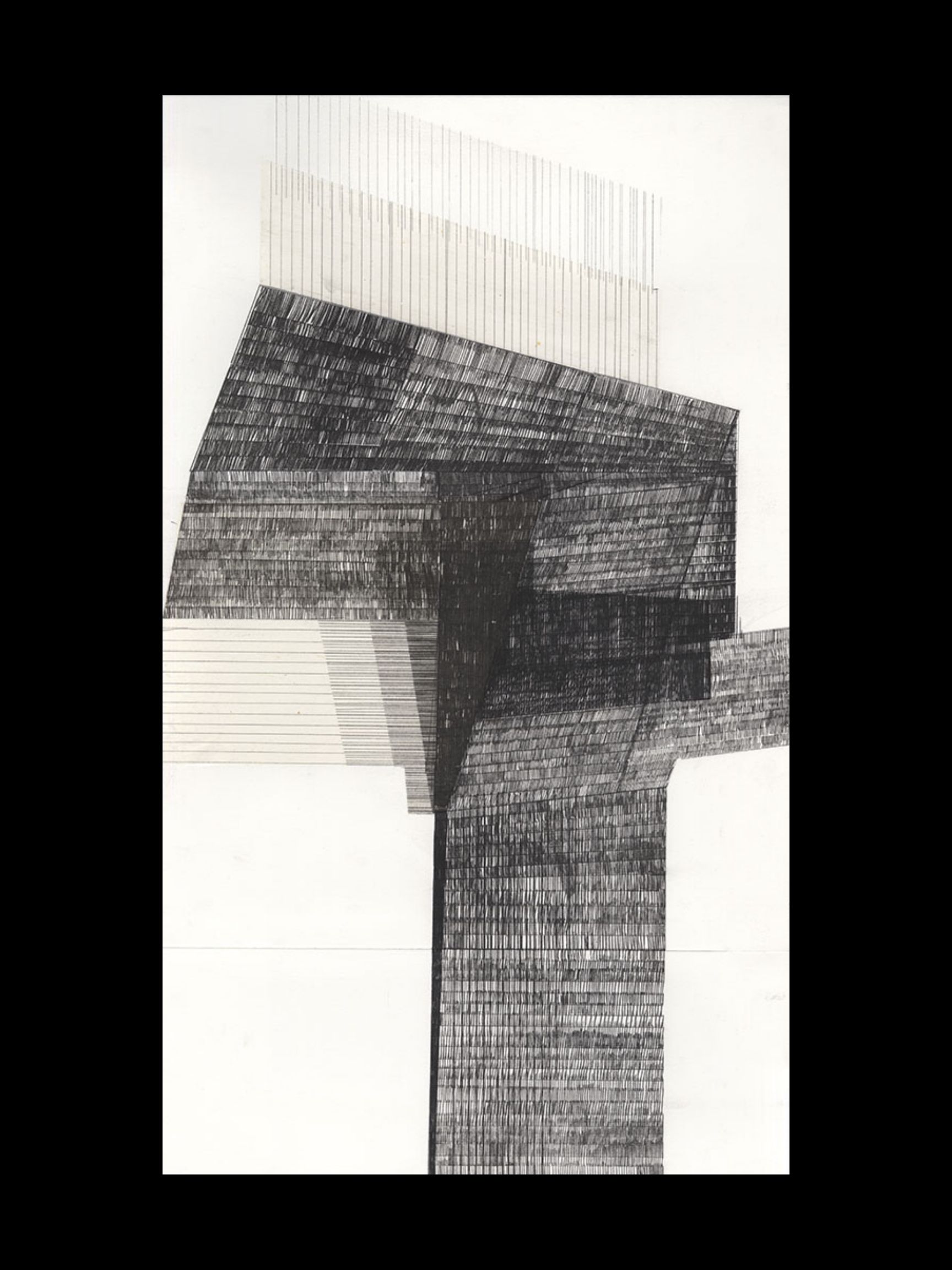
Carbon and Paper Lithography on Paper | 19"x 11" | 2020
Voider
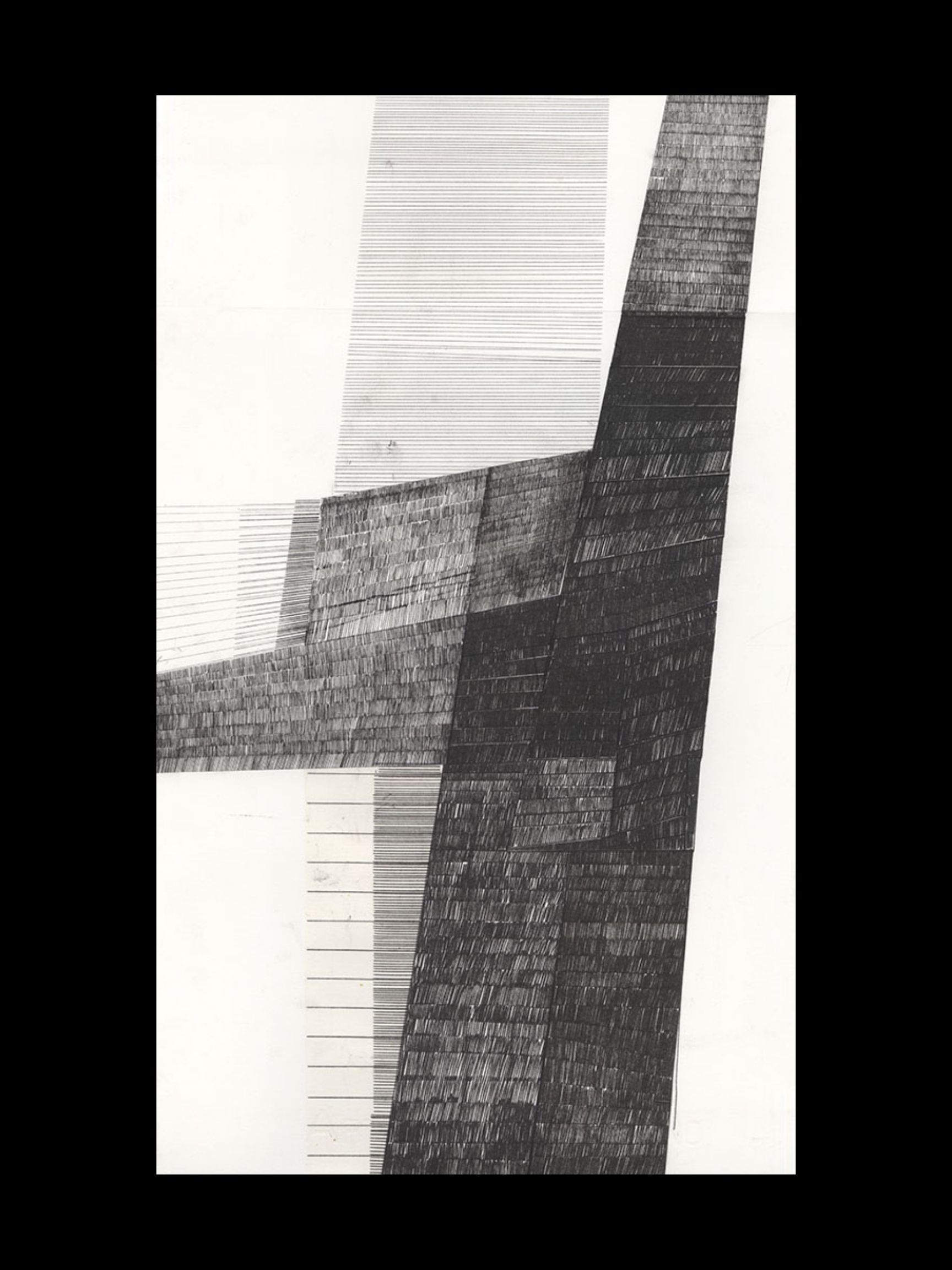
Carbon and Paper Lithography on Paper | 19"x 11" | 2020
Wedder
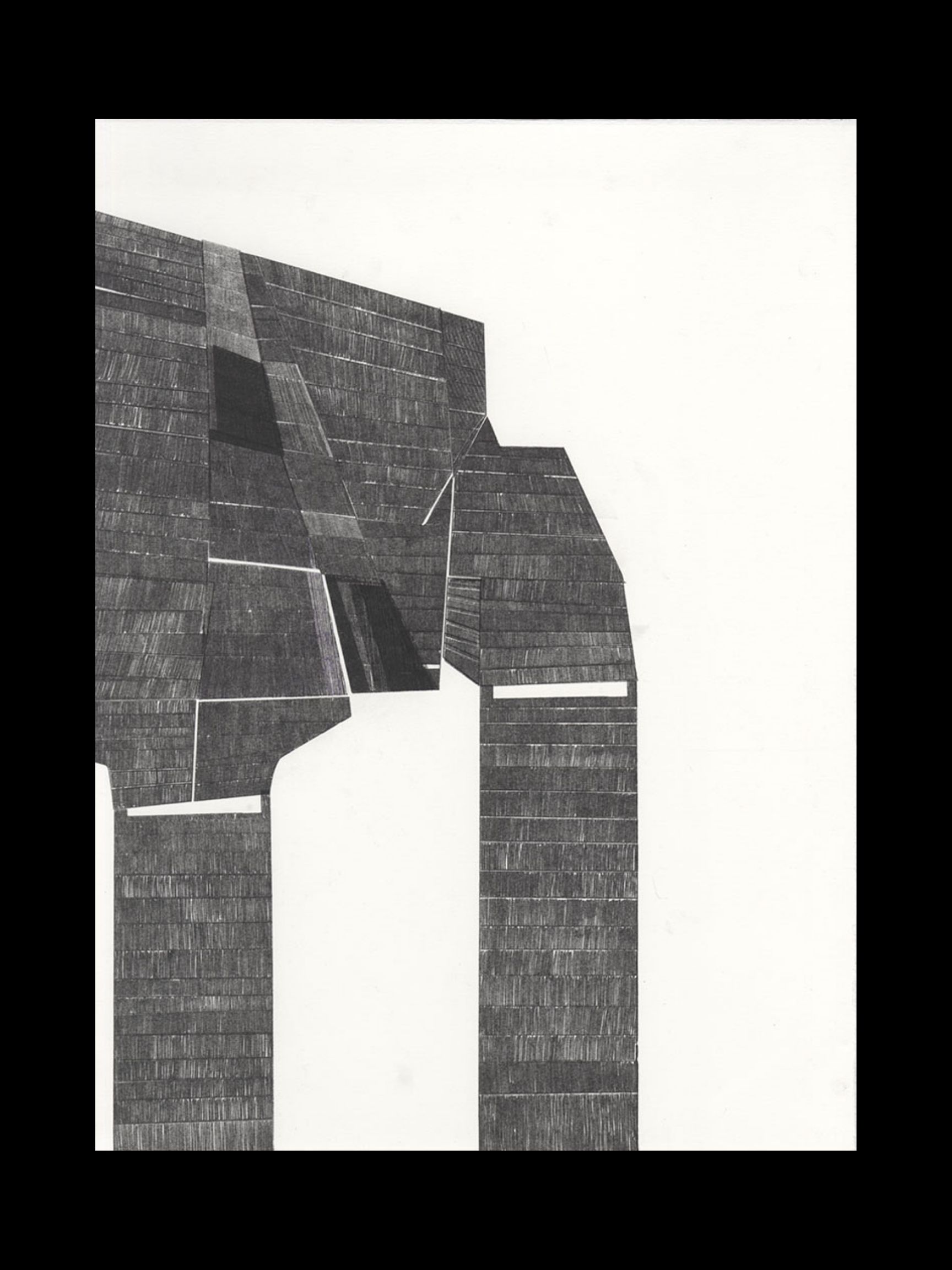
Carbon on Paper | 15"x 11" | 2020
Luke William Achterberg, MFA
Biography
Luke Achterberg grew up in central Wisconsin; the Grandson of welders and the Nephew
of automotive customizers. He completed his undergrad at the University of WisconsinLa
Crosse. Then studied welding at Western Technical College. He worked as a certified
welder and fabricator at a custom job shop before completing his Master of Fine Art
degree at the University of Kentucky. He has received awards from the International
Sculpture Center in New Jersey and Art-St-Urban in Switzerland. He has had solo exhibitions
in New York City, and recently in Columbus, OH. He maintains his own active studio
in Onalaska, Wisconsin.
Artist Statement
The work explores relationships between fine art and the subcultures of Americana
found in hot-rodding, graffiti, and street art—all of which display extremely high
technical values developed outside of academia. I identify with these values and am
diligent in my attention to the quality and individuality of each work. While working,
I think of the customization process that overturns the standardization of automobile
mass production into vehicular uniqueness. I continually play with balance, both physical
and aesthetic, creating a visual smoothness or sleekness, what I call “Super Sleek."
Luke William Achterberg, MFA
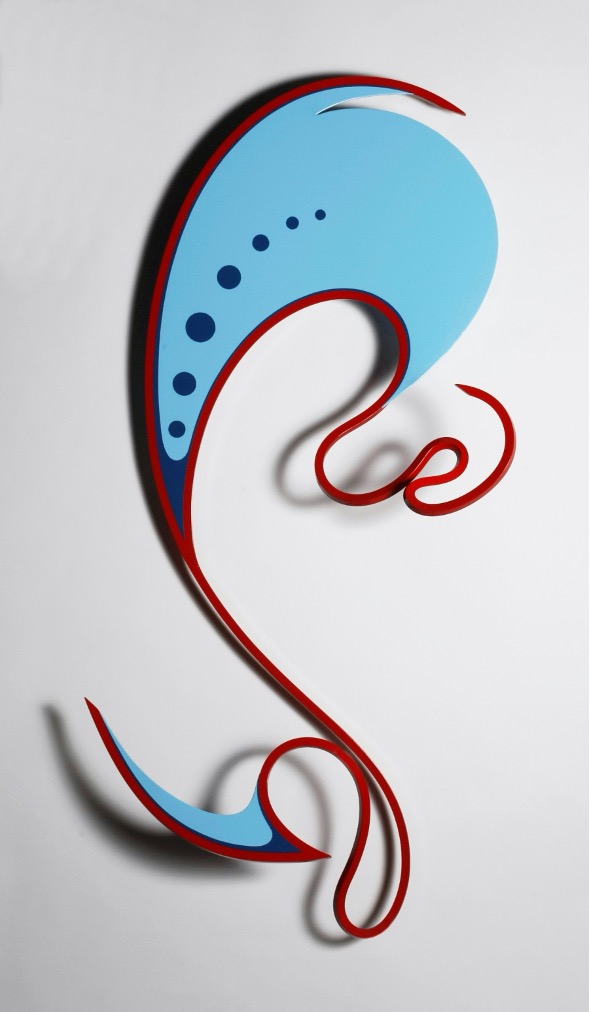
Steller Stroke 49 by 22 inches, Painted Steel, 2011
Primordial Movement, 84 inches, forged and fabricated steel, 2007
Artist note: Material Gesticulation, and using some of the tech knowledge I had gained
in Welding School and the industry combined with blacksmithing experience.
Balance, 15 feet 6 inches, painted steel, 2008
Artist note: Further refinement of the form to separate masses connected by tendrils.
Metaphor on connections between high art and low art. Influence from childhood obsession
of Extreme Sports, BMX, Skateboarding, Snowboarding and the sensibilities associated
with the design incorporated into those products.
Moving Balance
Artist note: I took this piece down the interstate twice, to a Sculpture Trails Sculpture
park outside Bloomington Indiana, until purchase by Wabash Valley College in Illinois
Crusing Continuity, 118 inches, 2009
Artist note: Based on ideas about automotive pin striping, fenders and chop top rat
rods.
Drag to the Finish, 72 inches, painted steel, 2009
Artist note: Appropriately named because it was the last piece I finished for my MFA
show. But also the street culture reference of racing for pink slips. The new Americana,
redefining Americana into the contemporary genre where people make themselves inside
and outside of the academic sphere.
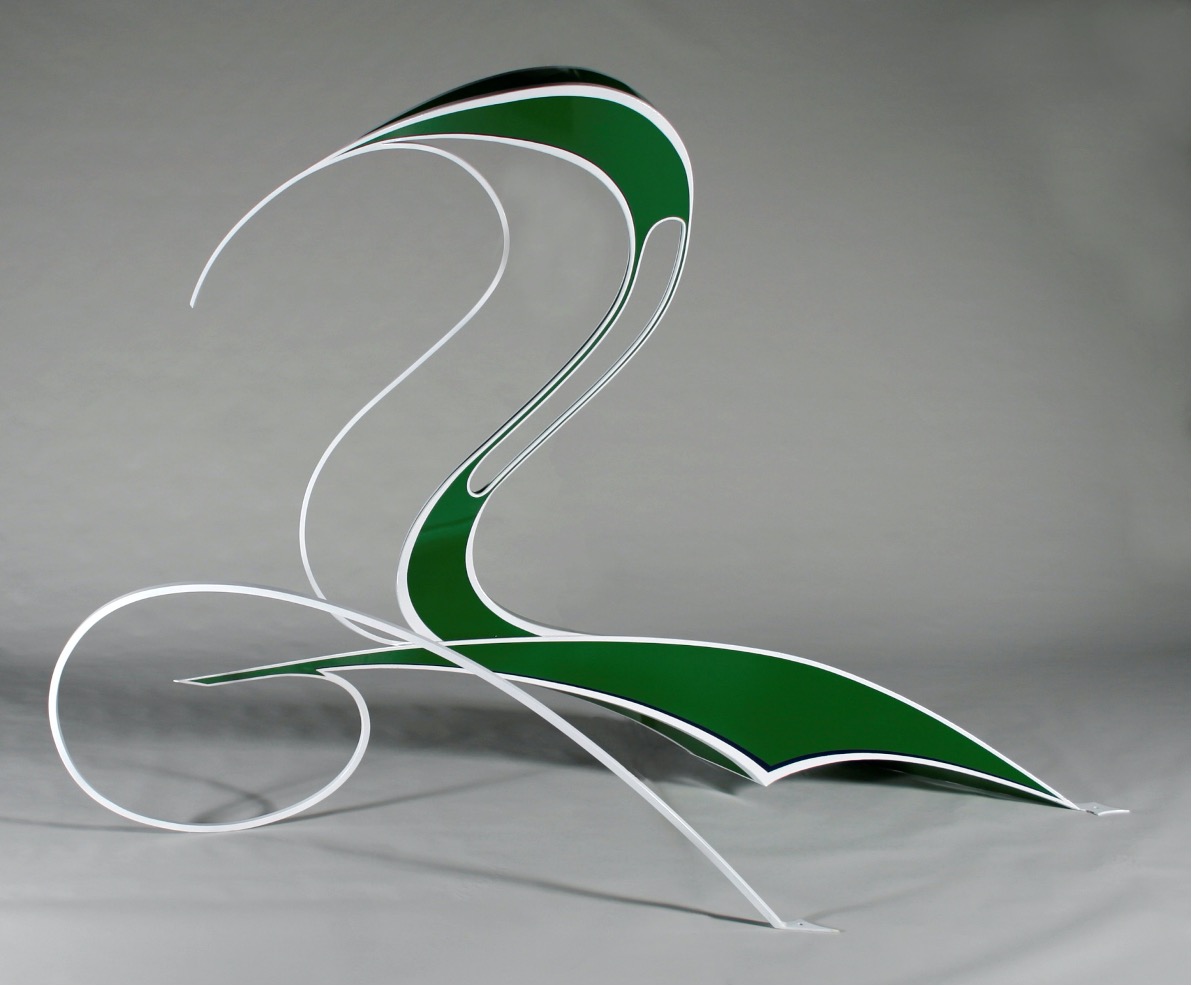
Period, 16 inches, Painted Ceramic
Artist note: Everybody in the Graffiti world has their own arrow.
Aplomb, 87 inches, painted steel, 2008
Artist note: Like the artists that made their mark on the subway trains of New York
in the 80s and 90s I’m interested in Art movements inside and outside of academic
sphere, and blurring the boundary between the two. This piece was accepted into SculptureWalk
Souix Falls and appropriately placed in front of 8th and RR Center (converted rail
house) with a still functioning rail yard behind it.
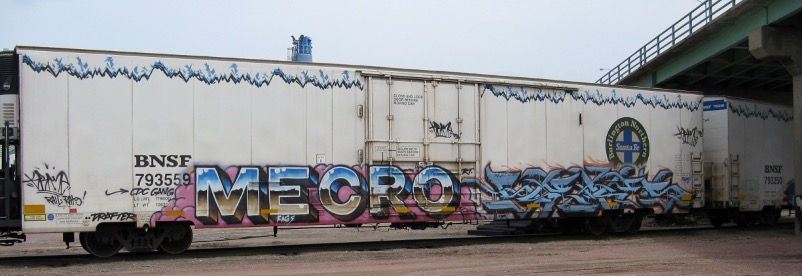
Relative, 7 feet 6 inches by 15 feet, painted steel, 2009
Artist note: Seminal work from Grad school that gained note in with the ISC (Explain)
Outstanding Student Achievement in Contemporary Sculpture Award. relative explanation,
letter R, Michelangelo’s Sistine Chapel, greater and lesser pointing at one another
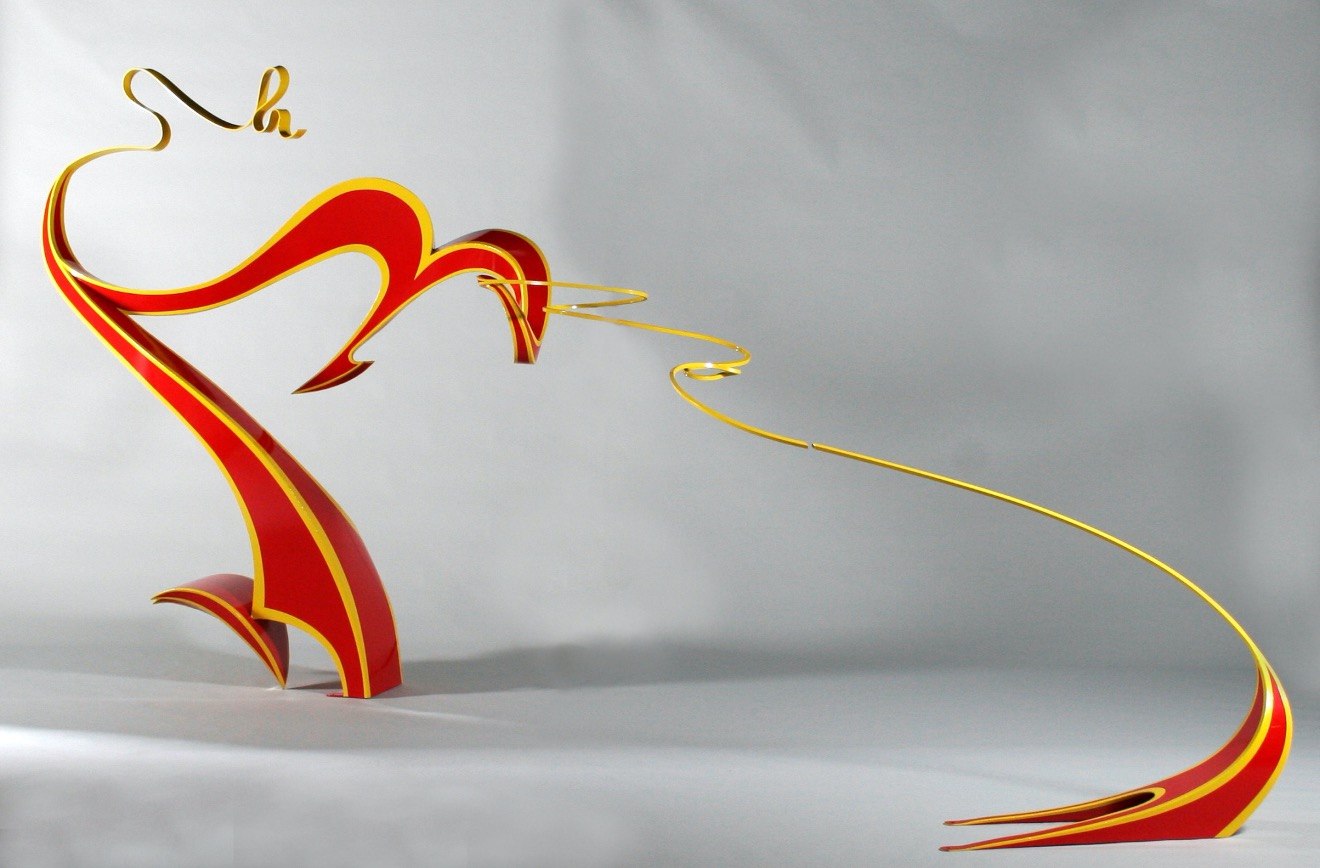
Alternative views of Relative
Artist note: Couple of alt. views at the Grounds for Sculpture, talk about pilgrimage
to NYC. Then, after grad school, COLD! Applications and the great plot and scheme.
Seize the time you have in your school studio. Neglect your job, your beer time,
your girlfriend/boyfriend; if this is life seize it.
Calibration, 16 feet, painted steel, 2012
Flux, 15 feet, painted steel, 2015
Incendiary, 11 feet, Painted Steel, 2016
Convergence, 65 by 31 inches, painted steel (left)
Oppositional Defiant, 60 by 30 inches, painted steel (right)
Artist note: The show took me in a direction that I like to refer to as reverse Frank
Stella, (he started on the wall and moved to the floor) where as I did the opposite.
But it gave me more perspective on the low/high ideas that I had started to unravel
in my graduate thesis the works picked up more elaboration influence from comic books
(hence the thought bubbles)
Evolution, 17 by 30 by 12, painted ceramic

Correlation, painted steel, 84 by 55 inches, 2017 (left)
Transition, painted stainless steel, 32 by 10 by 12 inches, 2018 (right)
Solo exhibition at the Sherrie Gallerie, Columbus, OH, 2018
Sculpture Garden at the Sherrie Gallerie, Columbus, OH, 2018, solo exhibition
Inchoate, 12 feet, automotive paint on steel, 2018
Baculus, 7 feet, automotive paint on steel, 2019
Artist note: Installed on the roof of Monona Terrace, a Frank Lloyd Wright building,
Madison Wisconsin.
Scalar, 7.5 feet, automotive paint on steel, 2020
the making of Scalar continued
Digression, 40 by 22 inches, painted steel, 2019, (left)
I Drop, 42 by 22 inches, painted steel,2015, (right)
Artist note: Lacing on the left, an automotive customization technique. A nod to
comic books on the left with thought bubbles.
Evince, 7 feet, automotive paint on steel, 2020
Artist note: When I finished stripping the tape, I realized I just made my alma mater
sculpture! It’s nickname is the “Wildcat”… go UK!
Bedecked Billow, 6.5 feet, 2020
Artist note: Now on view at the Pump House Art Center, La Crosse, WI.
Contact

